How Much Will MSOs Save in Taxes from Elimination of 280e?
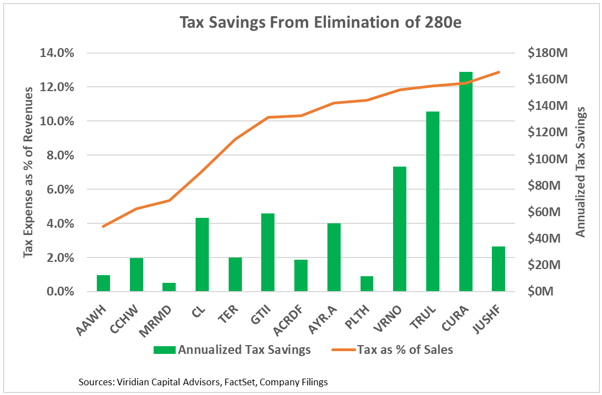
One of the most important results of the potential rescheduling of cannabis to Schedule 3 is eliminating 280e taxes. In previous charts of the week, we have shown that 280e significantly negatively impacts cannabis companies by reducing their internally funded growth and limiting their debt capacity.
The chart explores the second-quarter tax rates of thirteen large MSOs and shows an estimate of the annualized tax savings for each company from the elimination of 280e.
We estimate that eliminating 280e would save the companies on the chart around $700M annually.
Over the last two years, a tight capital market and the cash-sapping impact of 280e have forced many cannabis companies to forgo acquisitions, reduce capital spending, and trim staffing. Savings from eliminating 280e will go far toward getting the industry back on a growth footing.
A top official at the U.S. Department of Health and Human Services (HHS) recommended in an Aug. 29 letter to the Drug Enforcement Administration (DEA) that cannabis should be reclassified as a Schedule III drug under the Controlled Substances Act (CSA).
This news, first reported by Bloomberg, has wide-ranging implications for the cannabis industry, including a shift in federal policy that would recognize cannabis as having medical value should the DEA take up the HHS on its recommendation.
"Following the data and science, HHS has expeditiously responded to President Biden’s directive to HHS Secretary [Xavier] Becerra and provided its scheduling recommendation for marijuana to the DEA on August 29, 2023," an HHS spokesperson said in a written statement sent to Cannabis Business Times. "This administrative process was completed in less than 11 months, reflecting this department’s collaboration and leadership to ensure that a comprehensive scientific evaluation be completed and shared expeditiously.
Should cannabis be reclassified as Schedule III it would break ties with “high abuse” substances like heroin, LSD, methaqualone and ecstasy, and instead join the likes of ketamine or acetaminophen products containing codeine. But the DEA has final authority over rescheduling drugs.
"We can confirm DEA received a letter from the Department of Health and Human Services providing its findings and recommendation on marijuana scheduling, pursuant to President Biden’s request for a review. As part of this process, HHS conducted a scientific and medical evaluation for consideration by DEA. DEA has the final authority to schedule or reschedule a drug under the Controlled Substances Act. DEA will now initiate its review," a DEA spokesperson said in a written statement sent to CBT. The spokesperson declined to confirm the Schedule III recommendation.
Reclassifying cannabis under the CSA would ease certain tax burdens on state-licensed cannabis operators, including lifting the 280E tax code that prohibits cannabis companies from deducting everyday expenses related to running their businesses.
The HHS recommendation comes after President Joe Biden directed in October 2022 Secretary Becerra and Attorney General Merrick Garland to initiate an administrative process to review how cannabis is scheduled under federal law. Specifically, the HHS was tasked with overseeing a medical and scientific analysis of cannabis. The department coordinated this review with the U.S Food and Drug Administration (FDA), which considered eight factors before making a determination for the control status recommendation.
According to federal statute, these eight factors include:
- Its actual or relative potential for abuse;
- Scientific evidence of its pharmacological effect, if known;
- The state of current scientific knowledge regarding drug and other substances;
- Its history of current pattern of abuse;
- The scope, duration and significance of abuse;
- What, if any, risk there is to the public health;
- Its psychic or physiological dependence liability; and
- Whether the substance is an immediate precursor of a substance already controlled.
Now with the HHS recommendation, the DEA is responsible for coming up with a final decision, but there is no deadline for this process set by the Biden Administration.
"The process already exists and has been undertaken countless times for other substances," said Shane Pennington, partner at Porter Wright Morris & Arthur LLP and well-known cannabis policy advocate and expert. "[There is] no deadline for DEA to act, that's true. Historically, the whole process has taken an average of 9.2 years to complete, with HHS taking an average of 2.4 years to get their recommendation to DEA. We're moving fast, but we still have a ways to go."
Should the DEA follow through with the HHS recommendation and reclassify cannabis as Schedule III, trafficking it or an adulterated version of it, would remain a criminal penalty, according to Rezwan Khan, president of DNA Genetics and executive chair and president of trade association Global Alliance for Cannabis Commerce.
“Currently, there are FDA-approved drugs containing CBD and synthetic THC, so any product containing those molecules is an adulterated drug and could constitute criminal manufacture, distribution, etc., of a controlled substance,” he wrote in November 2022. “State adult-use markets would also be subject to FDA oversight and traditional pharmaceutical channels of distribution.”
Pennington said most people believe reclassifying cannabis to Schedule III would make cannabis an FDA-controlled drug, but that's one of the biggest myths circulating right now. "Cannabis already is an FDA-controlled drug. FDA has jurisdiction over cannabis today and will continue to regardless of what schedule (if any) it's on," he said. "The reason the industry doesn't worry about FDA right now is because the federal government isn't enforcing the [Federal Food, Drug, and Cosmetic Act] against cannabis companies and hasn't for some time (with the exception of a couple of warning letters to CBD companies who claim their products cure or treat various illnesses)."
The FDCA is "a set of United States (US) laws that authorize the Food and Drug Administration (FDA) to oversee and regulate the production, sale, and distribution of food, drugs, medical devices, and cosmetics," according to the National Institutes of Health.
"Bottom line," said Pennington, "Schedule I isn't protecting cannabis or cannabis companies from any federal enforcement or oversight. It's the most restrictive classification possible under federal law. Moving cannabis to schedule III would not add a single requirement to it federally. Not one."
Kris Krane, director of cannabis development for KCSA Strategic Communications, said in October when the call to review cannabis's schedule was first announced that the action the U.S. government takes is perhaps even more important than how cannabis is scheduled.
“A move to Schedule II or III could be really problematic. But that also all depends. It could be nothing,” Krane said in October. “So much depends on what the federal government does in terms of implementation and enforcement. It's fully federally illegal. Everything that every one of these companies is doing is a complete and total violation of federal law, and yet the federal government's just allowing it to continue on at the state level.”
Another common misperception about rescheduling cannabis is that a Schedule III classification under the CSA would break certain federal barriers to scientific research on the plant for universities and independent labs. "This is what 99.9% of people believe, and I totally understand why," said Pennington. "As a general rule, Schedule I imposes research restrictions that are far more severe than schedule III. It follows that transferring most substances from Schedule I to III would open up research on those substances. Unfortunately, cannabis is different. The research restrictions that apply to it do not turn on scheduling. They are specific to marijuana itself," he said. "Ironically (and tragically), the reason for this perverse reality is the marijuana research bill [the Medical Marijuana and Cannabidiol Research Expansion Act] that POTUS signed into law late last year. While putatively designed to enhance and promote cannabis research, it amended the CSA to impose special cannabis-specific research requirements. Because those new requirements do not hinge on cannabis's scheduling classification, they also won't go away if cannabis is rescheduled."
Despite some misconceptions and many unknowns, industry stakeholders expressed enthusiasm about the possibilities of this incremental reform, several calling it "historic."
In a public statement provided to Cannabis Business Times, Verano founder and CEO George Archos said, “It’s about damn time.”
“We at Verano are incredibly excited to hear the news that the Department of Health and Human Services is calling for the rescheduling of cannabis to schedule III,” he said. “For far too long, cannabis prohibition and its outdated status as a schedule I substance have unduly harmed countless individuals affected by the failed war on drugs. As one of the nation’s fastest-growing industries employing half a million people and contributing hundreds of millions of dollars to local communities, states and economies every year, Verano is energized by the opportunity to reach its full potential and provide additional economic and social impact across the U.S."
Krane called this a "historic announcement," as it marks "the first time that a government agency, the Department of Health and Human services no less, has recognized that cannabis has medicinal value and a lower potential for abuse," Krane told CBT in an email. "This was the result of a nearly yearlong investigation and marks one of, if not the, most comprehensive reviews ever conducted by the federal government on the issue.
"In the short term, this has no major impact on the cannabis industry because the DEA now still has to conduct its own review and decide whether to follow the HHS recommendation. But given that this was called for by the president himself, it seems highly probable that cannabis will be moved to Schedule III sometime in the next year, likely before the 2024 presidential election."
US Cannabis Council Executive Director Edward Conklin said he “enthusiastically welcomes” the news, too.
“We believe that rescheduling to Schedule III will mark the most significant federal cannabis reform in modern history,” he said. “President Biden is effectively declaring an end to Nixon's failed war on cannabis and placing the nation on a trajectory to end prohibition. Cannabis should have never been scheduled alongside heroin and placed at the center of our nation's destructive drug war. Thankfully that era is coming to a close and is being replaced by a modern and scientific approach to regulating this plant.”
Conklin added that state-licensed cannabis businesses of all shapes and sizes will benefit from this HHS recommended reform.
U.S. Rep. Earl Blumenauer (D-OR), founder and co-chair of the Congressional Cannabis Caucus and a longtime leader in national cannabis reform, Tuesday released the following, less enthusiastic statement, emailed to Cannabis Business Times, in response to the HHS recommendation: “This is a step in the right direction but it is not sufficient. I hope it is followed by more significant reforms. This is long overdue.”
Amber Littlejohn, of counsel at law firm Ice Miller and former executive director of Minority Cannabis Business Association, also had a more moderated reaction. "While ideally the news from the administration would be the end to federal cannabis prohibition, today’s news is still a big step in the right direction," she told CBT in an email. "Today's news is good for the cannabis industry."
When asked about some industry constituents' fears about a possible big-pharma takeover under a Schedule III classification (with Schedule III drugs requiring a prescription), Littlejohn commented, "There is no change to the status quo. The industry would still be in limbo. To substantiate the fears would require believing the administration would begin enforcing cannabis laws against state regulated businesses when two-thirds of democratic voters and the majority of Americans support legalization.
"The pharmaceutical industry has and always will have an advantage over the cannabis industry due to the priority given to pharmaceutical research. It would be incumbent upon the current cannabis industry to take advantage of the changes and additional resources to prioritize investment into research."
"Relief" is what Jarrod Loadholt, partner with Ice Miller’s Public Affairs Group, said he felt upon hearing the news about the Schedule III recommendation.
"I think there were indications that [Schedule] III or IV would be the most likely destination for any kind of administrative rescheduling. III or IV, not II, was key, and I think this is a strong recommendation," Loadholt told CBT. "This is a significant step toward legalizing and normalizing cannabis … The fact that they did this in August tells me there is some urgency in this White House."
Pennington was surprised by how quickly HHS acted. "What did surprise me is that it happened today," he said, referring to the HHS Secretary Becerra's comment earlier this year that it "would
be likely the end of the year before we get our recommendation to DEA," Pennington noted. "And even that was fast. That was like 50% faster than the historical average for them to get this kind of work done. And on something so controversial where there's so much that's already been said, and the agency really has to sift through a lot of stuff to be able to make a case for making a change like this that they know everybody's going to look at. So it just shows you what a high priority this is that they got this out so fast."
In addition to surprise, though, Pennington's other reaction is focused on the immensity of the news. "It goes without saying that this is the most significant development in cannabis law for sure in history at the federal level without question. It's one of the biggest events in the history of American drug law," he said. "It's hard to overstate what a big deal it is."
Pennington and Khan, who commented Wednesday on phone calls with CBT, both raised the issue of possible conflict with the Single Convention on Narcotic Drugs, 1961, an international treaty that "aims to combat drug abuse by coordinated international action," per the United Nations website. The treaty "classified cannabis as highly addictive and liable to abuse, and that any non-medical or non-scientific use of cannabis contravenes the Convention," according to the International Narcotics Control Board (INCB).
"DEA can overrule HHS's recommendation if it thinks the treaty compliance requires requires them to," Pennington said.
A March 9, 2023, press release from the INCB, titled "The International Narcotics Control Board expresses concern over the trend to legalize non-medical use of cannabis, which contravenes the 1961 Single Convention on Narcotic Drugs," brought the INCB's concerns to light just six months ago.
Pennington adds that judicial review could also pose a stumbling block, should the DEA accept HHS' recommendation. "For this historic victory to sustain and to be meaningful, it's going to have to survive judicial review and make its way through the courts."
And the treaty and the judicial review go hand in hand. "When DEA goes to write a proposed rule and a final rule, it will have no choice but to address the treaty. Because the treaty has always factored in to cannabis scheduling in the past, and the agency just can't ignore that, or it definitely will get dunked on on judicial reviews."
Khan noted, "The DEA has to decide, and they're gonna roll out their decision. Now, if they decide to reschedule to a III, for example, then they run into the problem of the international drug treaty of 1961. That really puts them at odds with with being able to deliver it, right? The DEA, for that reason, would be inclined to reschedule to a [Schedule] II to keep themselves in line with the international drug treaty, while at the same time taking the recommendation on rescheduling."
Khan isn't in favor of rescheduling, though, as he stated in his November 2022 Cannabis Business Times opinion piece. As he commented Wednesday on the call with CBT, "rescheduling equates to recriminalizing" cannabis, despite some potential benefits afforded through a possible Schedule III reclassification, such as the end to IRS tax code section 280E.
Pennington said, "I'm on the record being fully supportive of descheduling." But he also said that "descheduling would not be utopia. If you really want to take seriously sort of the argument about consequences and what would happen, you need to think about all of the ramifications that descheduling would have."
Plus, he believes incremental progress is progress, he said, "and I would just strongly advise people, while I believe they are well-intentioned, to think carefully before they criticize something that's, you know, historic progress for a movement that we've all been working on so hard for so long. ... I'm just so proud of everyone, and I hope we can come together and get this done. The truth is we're all trying to get to the same place."
Despite the record sales, cannabis companies are struggling to turn a profit.
The Michigan marijuana market continued to break records in March, hitting a new sales high of almost $250 million for the month, after selling $2.3 billion in 2022.
The new sales record, first reported by New Cannabis Ventures, includes $9.8 million in medical marijuana sales and $239.8 million in recreational cannabis sales, for a total of $249.6 million in March, according to data from the Michigan Cannabis Regulatory Agency.
Sales were up by more than 15% from February, New Cannabis Ventures found, and up almost 63% from March 2022.
But the state report also confirmed that wholesale prices have been plummeting, with the average price per pound down more than 54% from a year prior.
With prices on the downslope, Michigan marijuana companies are struggling to turn a profit despite the record sales, Bridge Michigan reported. Retail prices per ounce of cannabis flower in February were down by almost half, to roughly $86 per ounce, from about $160 in February 2022.
According to the Cannabis Regulatory Agency report, Michigan in March had 1,999 active cannabis business licenses, including 656 retailers and 1,005 cultivators.
The number of growers, several sources told Bridge Michigan, is one of the reasons the market is currently oversupplied, which is largely what’s driving prices down.
“There’s way too much supply and so sellers are dropping their price so that they can get on the shelves of the retailers,” Beau Whitney, an economist with the National Cannabis Industry Association, told Bridge Michigan. That’s leaving very little room for profit, he said.
That’s likely to lead to consolidation in the near future, Whitney predicted.
“Those businesses that can’t get enough revenue … to cover their cost, they’re going to go out of business unfortunately,” he said.
“The big multistate operators and big corporations will buy distressed assets and consolidate the market,” Whitney said. “Instead of having hundreds of licenses, there will be substantially less than that.”
ASPEN, Colo.--(BUSINESS WIRE)--Toast, a leading multi-state pre-roll brand in the cannabis industry, is thrilled to announce its partnership with 42 Degrees Processing, a respected manufacturer and distributor in the Michigan market. With this partnership, Toast will launch a selection of their cannabis pre-rolls throughout Michigan.
Originating in Aspen, Colorado, Toast is a premium cannabis brand that has been crafting exceptional pre-rolls since 2017. Toast sets themselves apart in the market by their commitment to thoughtfully selected genetics, high-quality flower, impeccable craftsmanship, and beautifully designed packaging. This partnership with 42 Degrees Processing allows Toast to expand their reach and provide their innovative, superior quality cannabis products to Michigan-based consumers.
“We are excited to be partnering with 42 Degrees Processing,” said Punit Seth, Toast Co-Founder and CEO. “We selected 42 Degrees Processing due to their strong belief in the Toast vision, their exceptional manufacturing capability and their successful track record in launching multiple brands in Michigan. Brands produced by 42 Degrees Processing have distribution that span over 70% of the state providing Toast with the perfect launchpad for success.”
Michigan consumers, from the canna-curious to the “cannaseurs”, can discover the following products from Toast, with more expected to roll out in the future:
Toast Classic pre-rolls are precisely crafted 1g pre-rolls, which feature some of the most coveted and potent strains on the market. Toast Classics are available in Sativa, Indica and Hybrid varieties and are always mindfully made with 100% premium flower.
Toast Minis are perfectly dosed, impeccably rolled 0.35 gram versions of Toast’s Classic pre-roll. Minis are available in 10 packs of Sativa, Indica, or Hybrid—perfect for anytime and on-the-go.
Toast Infused pre-rolls are produced with a proprietary manufacturing process that ensures a smooth and perfect burn every time. Each extra special 1.2g pre-roll blends 100% flower with an expertly crafted, cannabinoid-forward concentrate. The Toast Infused pre-rolls are available in a Live Resin infusion, which features 42 Degrees Processing’s popular Fresh Coast Live Resin concentrate, as well as a Distillate + Terpenes infusion.
The Toast partnership marks 42 Degrees Processing’s first entry into flower or pre-rolled products. With Toast’s IP and SOPs and 42° strong manufacturing capability, 42 Degrees Processing has been able to quickly ascend the learning curve of pre-roll production.
“We are thrilled to be partnering with Toast,” added 42 Degrees Processing CEO Samuel Rosinski. “As a leading national pre-roll brand with established multi-state footprint, we knew they were the perfect partner for us to enter the flower and pre-roll category.”
Toast and 42 Degrees Processing are excited to begin this new chapter in their growth. Sharing similar core values that emphasize heritage, community, and craftsmanship, they look forward to working together to bring Toast to the Michigan market.
Michigan is Toast’s 4th active state, with several more state launches upcoming in 2023. Toast Classic and Toast Infused will be available in stores across Michigan. Michigan dispensaries interested in carrying Toast can contact misales@wetoast.com.
ABOUT 42 Degrees Processing
42 Degrees Processing is a brand foundry that helps clients forge ideas into finished goods for the Michigan market. Based in a 20k square foot facility in northern Michigan, 42 Degrees Processing works with over 300+ retailers across Michigan. Their dedicated and hardworking staff take a blue-collar approach to crafting tailor-made solutions for the brands they support. 42 Degrees Processing’s founders have operated in the Michigan marijuana market for a combined 35+ years; focusing on contract manufacturing, licensing and distribution of unique brands such as Fresh Coast and Toast. Learn more at www.42-deg.com.
ABOUT TOAST
Founded by ex-Bridgewater Associates alumnus Punit Seth, former Accenture Executive Shovahn Rincón and Former Global CMO of Anheuser Busch InBev Chris Burggraeve, Toast was born in 2017 in the heart of Aspen, Colorado. Toast’s signature cannabis pre-rolls elevates every moment with the perfect high, unmatched craftsmanship, and a touch of luxury.
An exhilarating blend of sin and soul, Toast is rooted in the spirit of the fresh Rocky Mountain air and infused with the cheeky indulgence of Aspen’s social scene. In that sweet spot, they have cultivated a premium cannabis experience unlike any other—one that honors the rich tradition and heritage of the plant.
Pairing heirloom strains with modern genetics, Toast works with local farms to hand-select only the most coveted flowers—bursting with aromatic terpenes and cultivated in mineral-rich soil—for a distinct terroir and a timeless euphoria with every perfectly dosed pre-roll.
Toast is founded on the belief that greater diversity makes for a more sophisticated finished product, a more beautiful celebration, and a greater world. Toast is focused on creating an inclusive and equitable environment within the cannabis industry and selects business partners who share its ethos. Celebrate Life in Full Spectrum.
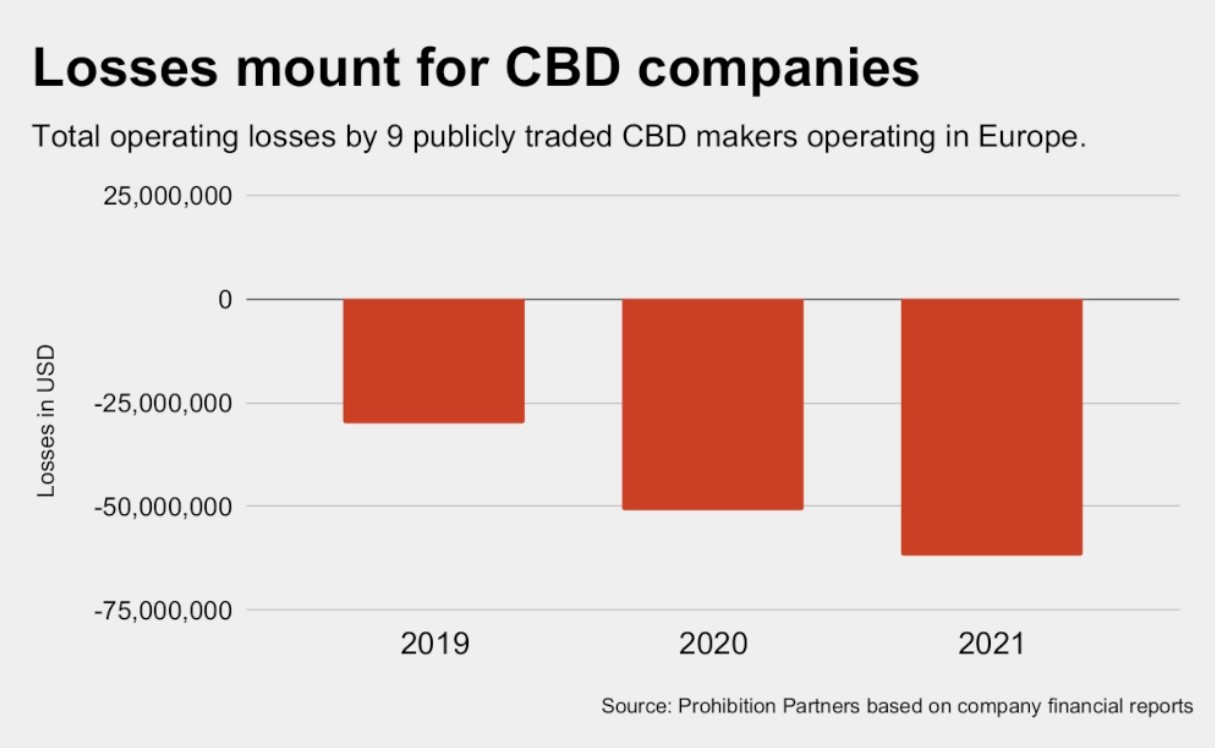
Companies analyzed included: CBD of Denver; HemPoland; Goodbody Health; Kanabo; Love Hemp; Chill Brands; Akanda; Futura Medical; Synbiotic; MGC Pharma; and Yooma Wellness.
A drastic imbalance between revenues and expenses shows publicly traded companies are overstretched in the European CBD market and continue to rack up massive losses, a UK cannabis analyst says in a recent report on the sector.
Eleven public companies researched by London-based Prohibition Partners had combined operating losses of €62 million for 2021. Six of those companies increased their operating losses by an average of 400%, while losses of three others averaged 65% that year, according to the report.
“Virtually no public company operating in the European CBD market is making an operating profit as of mid-2022. Indeed, as the number of operators increases and they each increase in size, the losses are mounting,” the report observes.
‘Early’ market
“This is attributable mostly to the early nature of the market, and the fact that most companies are still fighting for market share before regulations which properly support the industry are in place,” the report observes, calling the results of its study “troubling for those involved in the sector.”
“It should be noted that most companies are making less than €10 million in revenue per year, which speaks to the drastically fragmented market in European CBD,” the analyst said.
Stakeholders in Europe are pushing national authorities to set regulations for CBD after the European Commission ruled in 2020 that the compound is not a narcotic, can be qualified as food, and that CBD products should enjoy the same free movement of goods between and among member states as other legal products. But changes are coming slowly.
In the UK, CBD makers submitted nearly 12,000 CBD products to the Food Standards Agency’s process for approval of new or “novel foods.” That process has been troubled and also slow to develop, and the delays have contributed to some publicly traded companies being on the ropes.
Who will survive?
Meanwhile, amid the shortage of specific laws and regulations for CBD, the gray market continues to flourish across Europe and the UK, the report notes.
“CBD is now potentially the largest CPG (consumer) product in Europe which is, in the majority, sold under legally ‘grey’ conditions,” the authors write. “This situation is evolving fast, with new laws, regulations and enforcement practices changing at the European and national level on a quarterly basis.”
As those rulemaking and certification regimes develop, only producers which turn out high-quality products and are working their way down regulatory pathways, will survive, Prohibition Partners predicts in the report.
“Operators who are currently self-regulating to high standards or are participating in the novel foods applications will be the ones who will still be operating in five years,” the analyst writes.
Retail prices rebound
Retail prices for CBD products have returned to or surpassed 2019 prices after dipping roughly 25% in the intervening years, according to the report. That’s despite the fact that the cost of hemp flower biomass used to make CBD has plunged by as much as 75% since 2019, a reality the Prohibition Partners report gives short treatment. Some companies seeking to meet upcoming standards in Europe and the UK may be keeping prices high to recover costs associated with regulatory compliance, the report suggests.
In other observations, Prohibition Partners said:
- The vast majority of revenue in the CBD sector is being captured by private companies without any obligation to report to anyone.
- The CBD supply chain is likely to shift somewhat back towards European producers as the number of producers in the U.S. gradually declines and the EU’s Common Agriculture Policy continues to protect farmers from low-cost areas for cultivation.
- Fifty-one percent of current users surveyed said they expect to consume the same amount of CBD in the next 12 months as they did in the last 12 months.
- Large online marketplaces like eBay and Amazon are expected to offer full suites of products to European consumers.
California cannabis regulators seized more than 144,250 pounds of unlawful cannabis in 2022, which represents a 246% increase over the 41,726 pounds of cannabis seized by the agency the year prior. The Department of Cannabis Control (DCC) said arrests related to illegal cultivation tripled from 17 in 2021 to 56 last year.
In all, the cannabis seized by the agency last year was valued at $243,017,836. The DCC led 155 search warrant operations in 2022, which was a 150% increase from the 62 operations in 2021. The agency eradicated 264,196 cannabis plants – a 1,274% increase over 2021 levels (19,221 plants). In its operations, the DCC said it had seized 54 firearms last year – 14 more than 2021 – and seized nearly $1.3 million in cash.
Bill Jones, chief of DCC’s Law Enforcement Division, said the enforcement actions ensure “California maintains a well-regulated and legal marketplace that benefits Californians.”
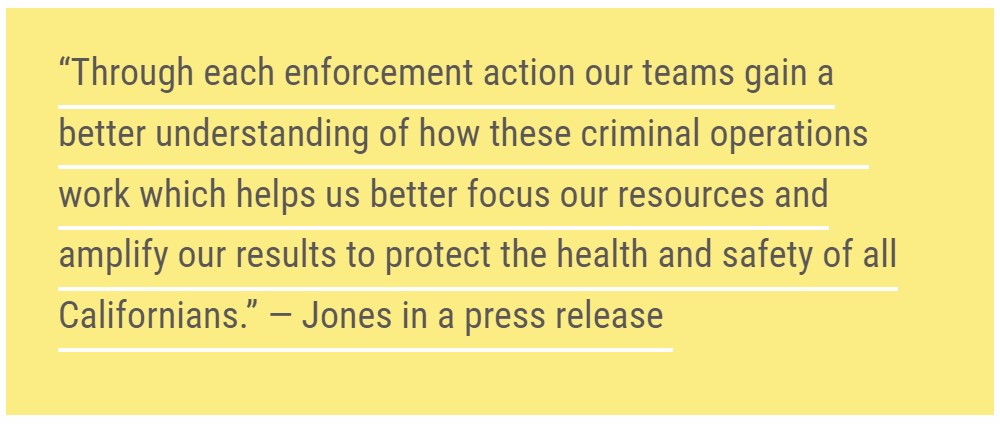
The DCC also assisted on 144 cannabis enforcement operations last year. Those operations led to the seizure of nearly $494 million worth of illicit cannabis – including 295,546 pounds of processed product. The operations eradicated 696,016 plants, seized $542,981 in cash and 85 firearms, and led to 119 total arrests.
Adult-use cannabis sales in Michigan topped $1.8 billion during the 2022 fiscal year, according to the Michigan Department of Treasury. Municipalities that have opted into sales – 224 in all – will receive a share of $59.5 million from cannabis excise taxes collected on sales.
For the state’s 2022 fiscal year, each eligible municipality and county will receive more than $51,800 for every licensed retail store and microbusiness located within its jurisdiction, the Treasury Department said, noting that some municipalities host more than one licensed cannabis business.
Recipients of the tax revenues include 81 cities, 26 villages, 53 townships, and 64 counties.
In a statement, Cannabis Regulatory Agency (CRA) Executive Director Brian Hanna said that the funding that makes its way to local governments “is an important benefit of the regulated cannabis industry and the CRA is committed to doing our part in supporting our law-abiding licensees.”
In all, $198.4 million from excise taxes is available for distribution. In addition to the $59.5 million headed to municipalities and counties, $69.4 million was sent to the School Aid Fund for K-12 education, and $69.4 million was sent to the Michigan Transportation Fund, according to the Treasury Department.
The revenue was collected from 574 licenses throughout the state.
Annual cannabis sales in California declined in 2022 for the first time since the state launched its adult-use market five years ago, according to state data analyzed by MJBizDaily.
Retailers generated just over $5.3 billion in taxable sales of recreational and medical marijuana last year, down 8.6% from roughly $5.8 billion in 2021, according to the latest statistics released by the California Department of Tax and Fee Administration.
Taxable sales in the fourth quarter dipped to about $1.3 billion – the third straight quarterly decline – down nearly 12% from the same period a year ago.
Depressed wholesale prices, which have made products cheaper for consumers, and the continued lack of retail outlets across wide swaths of the state have been two big drivers of this trend, according to California cannabis industry consultant Hirsh Jain.
“California’s ‘dual-licensing’ system has made it very difficult for new dispensaries to open in the years since adult-use sales began,” said Jain, the principal of Los Angeles-based Ananda Strategy.
Under California rules, cannabis businesses must obtain local authorization from the city and/or the county in which they operate before they can apply for a state license.
This system has caused major delays in issuing annual licenses since the launch of adult-use sales in 2018.
Those delays continue to plague operators throughout California, including Mendocino County.
Marijuana growers there are asking state regulators to intervene because the local government has failed to “establish a process capable of moving good-faith cannabis operators towards state annual licensure,” the Mendocino Cannabis Alliance claimed in a Feb. 8 letter to California Gov. Gavin Newsom and Department of Cannabis Control Director Nicole Elliott.
“This has artificially limited the size of the state’s legal cannabis market, causing it to prematurely plateau and now regress,” Jain added.
The state’s illicit market, which some industry insiders estimate is double the size of the regulated industry, has also played a role in stumping sales at licensed stores, a trend that materialized during the medical marijuana era, years before California voters legalized possession and adult-use sales in November 2016.
California cannabis businesses generated nearly $1.1 billion in taxes in 2022, down 21% from roughly $1.4 billion in 2021.
The decline partially stemmed from the elimination of the state’s cultivation tax on July 1, the start of the fiscal year, as well as the aforementioned economic and regulatory challenges.
It’s no secret that price compression has become a significant challenge for cannabis operators over the last several months.
One market that has taken a hit with plummeting prices is Michigan. In December 2022, the average retail price for an ounce of adult-use flower dropped to $91—an all-time low for the state's market. That number is a 51% decrease compared to $185 per ounce in December 2021 and a 74% decrease compared to $351 per ounce in December 2020, according to monthly sales figures from the state’s Cannabis Regulatory Agency (CRA).
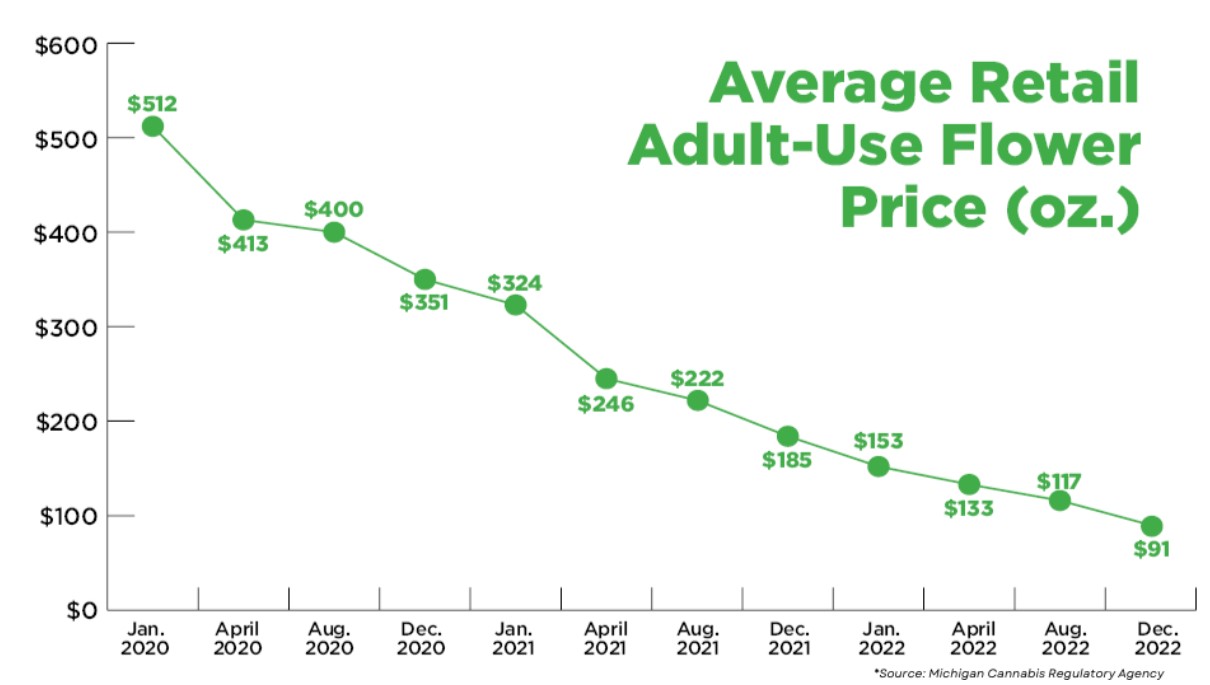
Despite prices declining significantly in Michigan, consumer demand has increased, and sales figures are record-breaking—leaving some to wonder about the forces behind Michigan's plummeting prices.
Race to the Bottom
Will Bowden, CEO of Grasshopper Farms, a Michigan-based premium sun-grown cannabis provider, says while there is no softening of demand in Michigan, the retail price per ounce and wholesale price per pound of flower is decreasing.

Bowden says one factor impacting prices could be that operators have trouble navigating a "transition period," which typically happens between years three and six of legalization, he says. Michigan launched adult-use sales in December 2019.
"So, when a market comes online, there is typically a natural occurrence where there is greater demand than supply. So that keeps the prices abnormally high, and that's why a lot of operators really seek to get into that year one and year two opportunity in any newly regulated state," he says. "But what I think happens is people don't always have their plan for the transition period. … and what happens is supply will eventually catch up to demand, and then you'll have people who will start having price wars so that they can try to carve out their piece of their market share."
He says this leads to that "race to the bottom," particularly at the wholesale level. According to Cannabis Benchmarks, Michigan's spot wholesale flower price averaged nearly $2,750 a pound in January 2021 and dipped 66% to $925 per pound in October 2022. That number increased slightly in December 2022 to $1,036 per pound, but so far in February has averaged $995 per pound.
"I'll focus on flower for a second, but this happens with all the products out there. So basically, what will happen is all the cultivators, regardless of discipline, indoor greenhouse or outdoor, will start dropping their prices down just to stay on shelves, and it gives a tremendous amount of power to the retailers to negotiate," he says. "The main thing that will impact that negotiation is consumer demand. So that's one of the things in the race to the bottom that happened, just pure supply and demand."
Bowden adds that operators may not be prepared to navigate normalized wholesale prices, which, in turn, causes them to sell the product at a lower price than the cost to produce it.
"They're losing money just to keep shelf space, and they think they'll be able to raise the price later," he says. "It's very hard to raise your prices later. When you lower your price, you've actually just set your new price. ... That's my philosophy."
Market Event
Bowden says another factor that can impact prices is a "market event."
He referred to one of the largest cannabis product recalls in Michigan to date, which happened on Nov. 17, 2021, when the state's Marijuana Regulatory Agency (MRA)—now the CRA—recalled more than $200 million in products tested by Viridis Laboratories between August and November 2021. At the time of the recall, that lab was testing as much as 60% to 70% of the products on the market, Cannabis Business Times reported.
The recall led to a court case where Virdis Laboratories sued the MRA and said it was "unjustified, prejudiced and retaliatory," CBS News reported. On Dec. 3, 2021, "Michigan Court of Claims Judge Christopher Murray granted Viridis Laboratories a preliminary injunction for a recall of products that one of its labs tested but denied a preliminary injunction for a recall at another of the company's labs." This decision led to nearly half of the recalled products being released, CBT reported.
Despite this, Bowden says the initial recall caused a lot of chaos among operators, as many were worried that they would not only be competing with other recalled product, but also product that wasn’t subject to the recall.
"So that created this panic, and prices dropped,” he said, adding that the price per pound for flower dropped from between $1,500 and $2,000 a pound to $300 and $600 a pound.
“That was more of a market event,” he says. “But at the same time, suppliers were producing enough to compete with each other. So, it's kind of a perfect storm.”
Bowden says that while he doesn't think the product recall is still impacting the market, it may have triggered that race to the bottom.
"It accelerated normalization and maybe a little bit beyond normalization ... but the way that at least supply works, your indoor growers are trying to turn five or six times a year, your pure outdoor growers maybe one time a year. We've cleared both of those hurdles, since then, so we're well beyond that market events supply, or the subject of that supply being an influence on today's market, but I don't think we would be where we are today without that market event," he says.
Increasing Supply and Demand
The number of cultivators in Michigan has also increased significantly in the past year, leading some to believe that oversupply is impacting prices.
For example, as of December 2022, Michigan had 825 active grower licenses for its adult-use market, as well as 133 excess grower licenses held by many of the largest companies in the state, according to CRA’s December 2022 report. Those numbers are almost double compared to December 2021, when there were 518 active grower licenses and 59 excess grower licenses.
"This is where it gets a little harder because the reports that Michigan puts out, they'll tell us how many cultivators are out there, but they're not saying what each cultivator is doing with their product, meaning most of the outdoor farms are pure biomass farms because they're not able to actually grow flower that's going to be able to sell out there at a price that makes sense for them," Bowden says. "So that's one thing we must consider when talking about this."
He says that the CRA's reports also don't show which cultivators may be slowly ceasing operations.
"It's hard to predict some of those things at this stage in the market," he says. "I think what's happening is that starting with that recall, we started the clock on an 18- to 24-month window in which people are going to exit out slowly. They're just trying to grab revenues before they do with existing products, existing growth, things like that. I think that this year will be the last outdoor grow for some of the folks who are doing outdoor grow. I think that we're going to see a change in that."
While there is an increase in supply, there's also a significant increase in demand, aside from the medical market, Bowden says. For example, Michigan retailers sold a record high of cannabis products in December 2022, bringing in $221.7 million—with more than $208 million coming from adult-use sales, CBT reported.
Furthermore, CBT reported that Michigan's total medical sales for all of 2022 declined almost 47% from 2021, which is also tied to falling prices.
"The caregiver numbers are declining because the price of cannabis has gotten so inexpensive at the retail marketplace [that] it's now cheaper to actually purchase cannabis than it is to cultivate it and grow it yourself," Rick Thompson, owner of the Michigan Cannabis Business Development Group and executive director for Michigan NORML, recently told CBT. "So, people that were utilizing the privilege of growing in order to save their patients money are no longer doing that; it's not advantageous."
As the average flower price per ounce continued to decrease, the number of qualified caregivers and patients started to dwindle. As of Dec. 31, 2022, there were 179,863 qualifying patients and 19,053 primary caregivers approved in Michigan—a significant decrease compared to Jan. 31, 2020, where there were 267,068 patients and 36,136 caregivers, according to CRA data.
Despite this, the increase in consumer demand continues to outpace the falling dispensary prices. For example, adult-use retailers sold 68,432 pounds of flower in December 2022 and nearly 523,000 pounds of adult-use flower in total for 2022—representing a 181% increase compared to 2021, CBT reported.
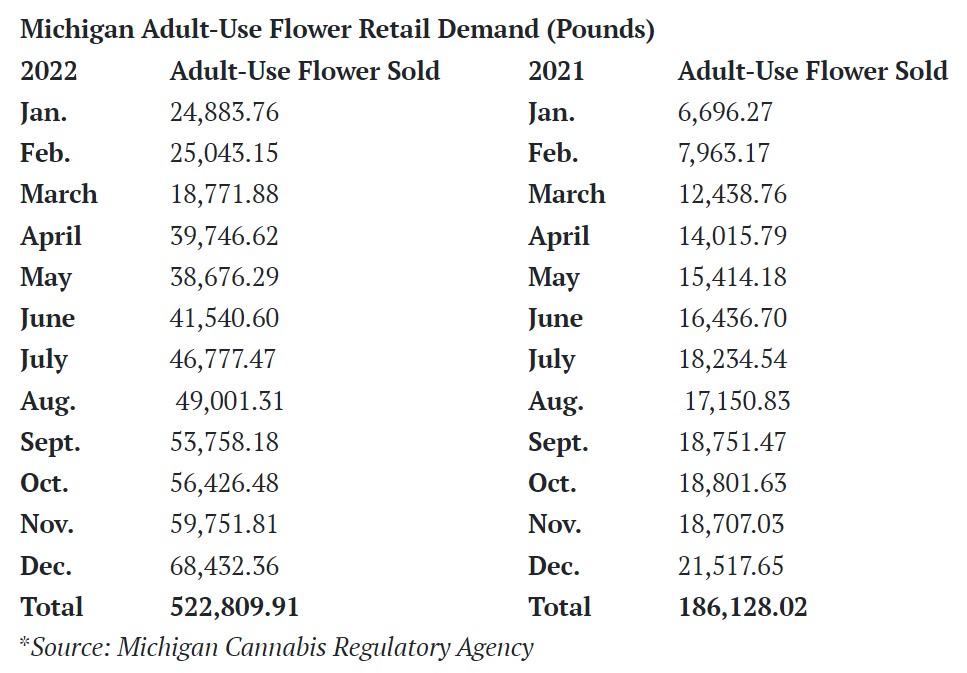
Navigating the Market
To navigate this market downturn, Bowden says that Grasshopper Farms has worked to differentiate itself in the marketplace and focuses on creating high-quality products for its consumers.
"First and foremost, you have to deliver a great product that is accepted by your retailers and accepted by the consumers," he says. "You have to talk to both of those groups differently to make sure they know who you are, what you're doing, and know what to expect when they get your product."
Bowden adds that product consistency is key and that your retailers and consumers should always know what to expect when they purchase/consume your product.
Moreover, he stresses the importance of being strategic with your pricing strategy.
"So while there are farms out there who are selling somewhere around $350 a pound, we have never dropped our prices below the $500 to $700 range depending on the quantity that they are buying because we're confident in our product, and consumers at this point are confident in our product too," he says. "All of the retailers we sell to, they sell out in four to six days after they get our product, and that's regardless of the quantity that they have on their shelves."
He also mentions that a solid business model is crucial as supply continues to increase.
"I do not think that we have too much supply in the state of Michigan; I think that there's plenty of space for people," he says. "It's a matured market now, even though it's still young, it's matured, which means now you've … got to have a business plan; you've got to have a sales and marketing plan; you've got to have a plan for your inventory, and how you manage your inventory."
Bowden says he thinks Michigan operators will either start to stabilize or exit this year.
"I think we'll start to see if the prices might change a little bit based on operators who are able to sustain a viable business," he says. "I don't know how much further the wholesale price will go up. It might just kind of sit where it is right now, but I don't think it'll go down more, though, at this point.
"I think that what's going to happen is, if there is anybody else who comes in and tries to saturate the market, I think they're going to have to make a name for themselves, and this is where that sales and marketing plan better be a part of your business plan. And you better be able to speak about your company so that people know what they're getting. And then you have to be consistent with your supply."
Hemp-derived synthetic forms of THC, the psychoactive element in cannabis, do not meet the federal definition of hemp and are therefore controlled substances, the U.S. Drug Enforcement Administration (DEA) has asserted.
The agency’s statement on delta-8 THC-O and delta-9 THC-O is the latest input into the ongoing debate in the USA sparked by the proliferation of delta-8 products, which are widely available in convenience stores and smoke shops in the absence of a clear understanding of their potential effects on consumers.
Made in the lab
Delta-8 and delta-9 THC naturally occur in hemp but only in trace amounts. Producers have turned to the laboratory to make products with higher concentrations of the two THC forms, both of which are based on CBD produced from hemp.
“Delta-9-THCO and delta-8-THCO are tetrahydrocannabinols having similar chemical structures and pharmacological activities to those (naturally) contained in the cannabis plant,” Terrence L. Boos, head of the DEA’s Drug & Chemical Evaluation Section, wrote when queried about the two forms of THC in a letter from Rod Kight, a North Carolina-based cannabis attorney.
Producers started making delta-8 THC products amid the drastically diminished fortunes of the CBD sector, where demand did not reach inflated expectations and oversupply caused prices to plunge by as much as 90% over the past three years. Some analysts have said at least 75% of the current supply of CBD is going into the production of unregulated delta-8 products.
Gaps in law
Federal lawmakers failed to account for synthetic forms of THC produced from CBD when they legalized hemp through the 2018 Farm Bill. Under that measure, hemp-derived products are not subject to the same THC testing requirements as marijuana. Producers have argued that because the Farm Bill made hemp and its downstream products legal, delta-8 is therefore also legal. A U.S. appeals court ruled last year that a strict interpretation of the Farm Bill makes delta-8 legal, noting that lawmakers can correct that situation with further legislation.
Opponents suggest the Farm Bill never intended hemp to be used to make psychoactive compounds and that nefarious players are exploiting the bill’s language to sell highly potent synthetic THC products that are often rife with contaminants, inaccurately labeled, and marketed in manners that could be appealing to children.
“It has always been my view that THCO is a controlled substance under federal law,” Kight said in a recent blog post. “Although it can be made from cannabinoids from hemp, THCO is not naturally expressed by the hemp plant. It is a laboratory creation that does not occur in nature, at least not from the hemp plant.”
Landscape unfolding
In the absence of federal rules, some states have outlawed delta-8 THC altogether while others are treating it under rules for products that carry delta-9 THC naturally derived from marijuana plants.
Meanwhile, CBD, the base material for both forms of synthetic THC, itself remains unregulated by the federal government, although some states are establishing local rules for the compound. The U.S. Food and Drug Administration (FDA) last month called on Congress to set a framework for CBD through legislation, saying current federal safety standards are insufficient to manage the products.
In a major policy shift, Twitter is allowing “approved” and state-legal cannabis companies and other advertisers to post ads in the U.S. for regulated THC and CBD products, accessories and services, the social media platform has disclosed.
“We permit approved Cannabis (including CBD– cannabinoids) advertisers to target the United States” provided a slew of conditions are met, Twitter said on its website under the heading, “Drugs and drug paraphernalia.”
AdCann, a cannabis marketing and advertising website based in Toronto, first reported the development in a social media post.
AdCann noted that, “effective immediately,” Twitter will permit “advertisers to promote brand preference and informational cannabis-related content” for certain products and services, including:
CBD and similar cannabinoid products.
THC and similar products.
Cannabis-related products and services, including delivery services, labs, events and more.
“American cannabis companies, brands and purveyors will need to pass through a Twitter advertiser approval process to ensure they are legitimate and educated on the platform,” AdCann reported.
“Once approved, industry marketers will have access to Twitter’s entire suite of advertising products including promoted tweets, promoted product opportunities, location-specific takeovers, in-stream video sponsorships and partner publication features.”
Cannabis industry executives welcomed the news.
“This has been in the works behind the scenes for a while,” Patrick Rea, the managing director at San Francisco-based venture capital firm Poseidon Garden Ventures, said in a tweet Tuesday night.
“Cannabis is a leading topic on @Twitter and should be a big channel for #cannabis advertising, depending on the details of the program. #progress,”
Rosie Mattio, CEO of Mattio Communications, a cannabis-focused marketing and communications firm in New York City, tweeted: “Kudos to @twitter for being the first major social network to welcome Cannabis advertisements.”
Under its new guidelines, Twitter said that cannabis advertisers – presumably companies – will be subject to a variety of restrictions and conditions:
- “Advertisers must be licensed by the appropriate authorities, and pre-authorized by Twitter.
- “Advertisers may only target jurisdictions in which they are licensed to promote these products or services online.
- “Advertisers may not promote or offer the sale of Cannabis (including CBD– cannabinoids). Exception: Ads for topical (non-ingestible) hemp-derived CBD topical products containing equal to or less than the 0.3% THC government-set threshold.
- “Advertisers are responsible for complying with all applicable laws, rules, regulations, and advertising guidelines.
- “Advertisers may not target customers under the age of 21.”
The sudden change in policy comes after billionaire Elon Musk completed his purchase of Twitter last October, buying the social media service for $44 billion.
Musk is well known for having smoked marijuana on Joe Rogan’s podcast in 2018.
Insider later reported that Musk – the CEO of space company SpaceX – was afterward ordered by the U.S. government to undergo random drug testing for a year.
SpaceX does considerable business with the federal government.
Musk’s purchase of Twitter immediately fanned speculation that the billionaire would loosen Twitter’s strict advertising policy governing marijuana.
“Up until now, only CBD topical brands were permitted to advertise on Twitter’s platform,” AdCann noted in its social media post.
“Moving forward – the social network will allow for the promotion of regulated THC and CBD-containing cannabis products, accessories, services and more.”
In its new guidelines, Twitter made clear it would not allow advertising directed toward minors.
The company also laid out several other restrictions, saying cannabis ads must:
- “Not appeal to minors in the creative, and landing pages must be age gated and sales must be age verified.
- “Not use characters, sports-persons, celebrities, or images/icons appealing to minors.
- “Not use minors or pregnant women as models in advertising.
- “Not make claims of efficacy or health benefits.
- “Not make false/misleading claims.
- “Not show depiction of cannabis product use.
- “Not depict people using or under the influence.
- “Not encourage transport across state lines.”
Twitter’s move comes on the heels of January announcement that Google Ads will no longer ban all hemp and CBD advertising in California, Colorado and Puerto Rico.
However, there will continue to be limitations to marketers, Google added in its blog post.
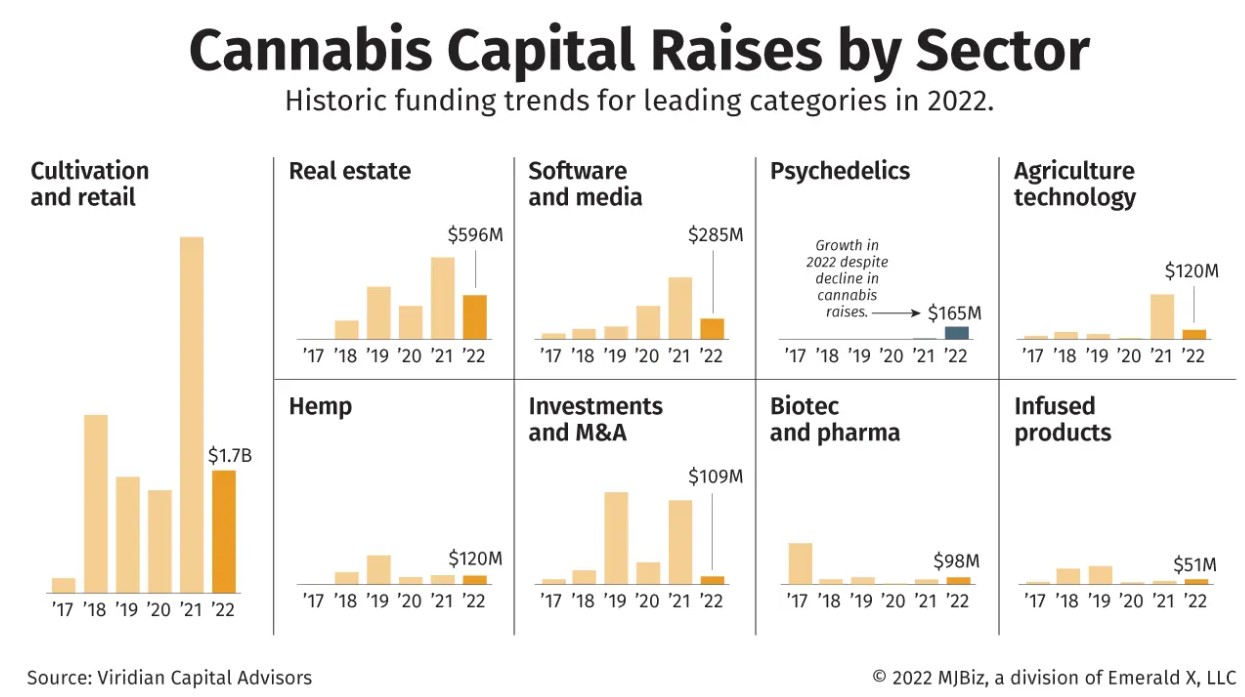
Many marijuana companies seeking capital are expected to find limited pickings and costly terms this year, providing little relief from 2022, when the amount of money ponied up by investors tumbled more than 60% from the year before.
Still, investors are expected to open their checkbooks for certain types of businesses and opportunities.
Analysts pointed to M&A deals aimed at scooping up distressed assets as well as ancillary businesses that often require less money to operate than plant-touching companies such as cultivators and retailers.
On the flip side, these same plant-touching businesses will likely face more obstacles raising capital, according to analysts.
Last year, nearly every cannabis sector tracked by Viridian Capital Advisors – from M&A to cultivation to real estate – saw steep declines in capital raises compared to 2021’s capital markets boom, which was driven by sales growth, less expensive capital and hopes for federal reform.
Just biotech/pharma, infused products and extracts and psychedelics grew in 2022. (Viridian, a New York-based capital, M&A and strategic advisory firm, started tracking psychedelics as a counterpoint to cannabis.)
“The equity side of the capital markets just completely went away at the end of last year for U.S. cultivators,” Frank Colombo, director of data analytics at Viridian, told MJBizDaily.
“And for the first three weeks of 2023, we had no debt deals, which was really surprising to me because that was the thing that was holding the market up.”
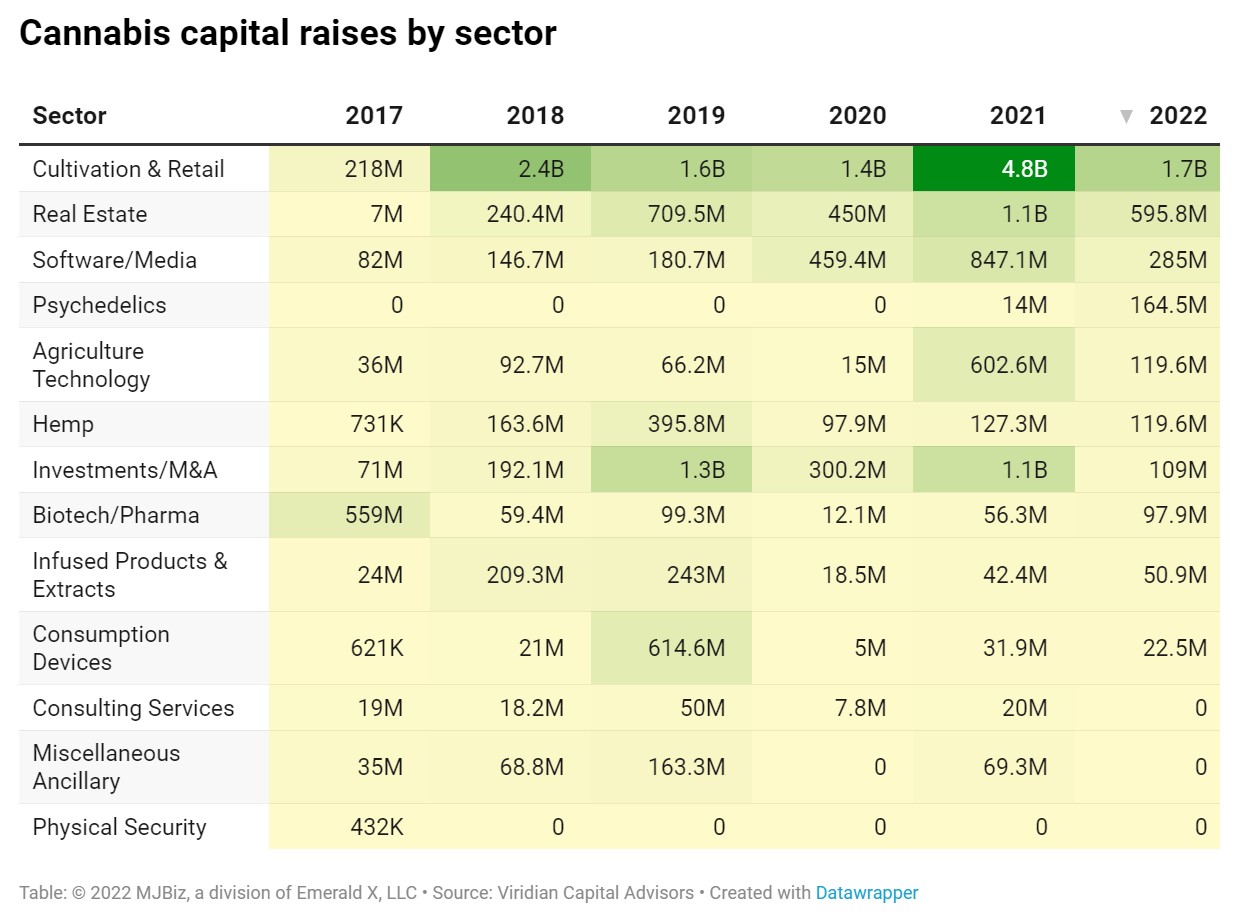
That’s until Massachusetts-based multistate cannabis operator MariMed announced in January it had secured a $35 million credit facility from lenders Chicago Atlantic Advisors and Silver Spike Investment Corp.
“It was good news because it showed that even medium-sized companies can still get debt capital,” Colombo said.
High cost of capital
On the other hand, Colombo said, the terms of the deal also show how expensive capital is and how important it is for that capital to be allocated strategically.
MariMed will receive $30 million at close with the option to borrow another $5 million over the next six months.
The loan carries a floating interest rate of the prime rate plus 5.75%, with 30% warrant coverage.
“I come from a high-tech background, so it took me a while to get over what the price of lending is in cannabis,” MariMed Chief Financial Officer Susan Villare told MJBizDaily.
“Never in my career had I done debt financing over 10%.”
But when Villare looked at the rates other players were paying in refinancing deals, the fact that the SAFE Banking Act failed to pass Congress and what MariMed could achieve with the $35 million, she decided it was the right deal.
After listing on the Canadian Securities Exchange last July, MariMed announced its $20 million acquisition of Maryland medical cannabis business Kind Therapeutics.
The deal came shortly before Maryland voters overwhelmingly approved adult-use marijuana legalization last November.
MariMed also plans to expand operations in Illinois, Massachusetts and Missouri.
“We could certainly do it with cash flow from operations. But we said, 'Hey, let’s accelerate that,'” Villare noted.
“We’ll do the secured financing to get that done. It’s pretty short term - three years - and we’re confident with cash flow from operations that we can pay it down, and we did negotiate hard to ensure that there would be no prepayment penalties should we pay it all down after 20 months.”
Growth opportunities
Both Colombo and Patrick Rea, the managing director at San Francisco-based venture capital firm Poseidon Garden Ventures, said they expect cultivators and cannabis license holders to pay a premium for capital and struggle to secure investment through 2023.
Even though software and media companies have been downsizing and, in the case of Denver-based Akerna Corp., exiting the industry entirely, non-plant-touching ancillary services are scalable, without the burden of licensing.
“I find a lot of the investors I spoke with are really just focusing on ancillary technology and taking a break from licensed operations because what we’ve learned about licensed operations is that they’re capital intensive. It takes a lot of money to get them up and going,” Rea told MJBizDaily.
“And when cannabis regulators and legislators realize that the sky didn’t fall and there’s no zombie apocalypse (after legalization), they issue more licenses. And every additional license they put out decreases the value of the existing licenses because there’s more competition.”
Colombo said more funds will likely be created with the purpose of raising money to invest in financially struggling operations and companies.
“We’ve both talked to people and heard secondhand of other groups trying to raise money to pursue acquisitions of distressed properties,” he said.
Similar to predictions that M&A would be dominated by acquisitions of distressed assets in 2023, capital raises will also go toward either distressed asset acquisitions or rescue financing for companies struggling to stay afloat.
Psychedelics
One area that is attracting investor dollars is the psychedelics business.
Viridian started tracking capital raises in psychedelics because the company was noticing the flood of capital going into the sector, Colombo said.
"So it's an incredible counterpoint that shows businesses that have incredible growth potential like cannabis," he said.
"And it's further behind the curve in terms of development of actual revenues."
"But it's way, way ahead of the curve in terms of regulatory approval," Colombo said, because some psychedelic drugs used in treatment clinics such as ketamine aren't Schedule 1 drugs.
That means the sector is perceived as less risky, with lots of opportunity for capital raises and M&A.
"If you had asked me three or four years ago if psychedelics would be more legal than cannabis, I would have said, 'What are you, crazy? You must be joking.'
"But that is indeed how it has transpired."
A much-hyped letter from California cannabis regulators to the state’s attorney general raises an intriguing question: Is the Golden State teeing up interstate trade in marijuana?
Top officials from the state’s Department of Cannabis Control (DCC) on Jan. 27 sent an eight-page letter to the office of California Attorney General Rob Bonta, laying out the legal argument for how California could sidestep federal obstacles if state officials decide to green light exports of cannabis across state lines.
The letter raised eyebrows among marijuana executives and legal experts, with industry players calling it a major development – but one that would take time, if it ever does come to fruition.
One key sticking point: California would need to find another state willing to take its marijuana, said Hirsh Jain, a California-based cannabis consultant.
“I know that there’s a lot of excitement,” he added. “But if you really think through the mechanics here, it’s unlikely anything will happen this year.
“California needs a dance partner.”
In their letter to the attorney general, the DCC’s executive director, Nicole Elliott, and general counsel, Matthew Lee, asked Bonta to issue an opinion on whether exporting marijuana to another state would “result in significant legal risk to California” under the federal Controlled Substances Act.
Elliott and Lee, for their part, argued “it will not.”
They noted the Commerce Clause of the U.S. Constitution bars Congress from restricting how states regulate their own interstate commerce.
Marc Hauser, principal of Hauser Advisory, a California-based consulting firm, sees this as another step in normalizing marijuana commerce across the country.
“It’s a big deal and important for the industry,” he said.
This comes after California Gov. Gavin Newsom in September signed Senate Bill 1326, which would create interstate commerce pacts if only one of the following criteria are met:
- Federal legalization, which is not imminent.
- A U.S. law is enacted that bars the federal government from spending money to prevent interstate marijuana shipments.
- The U. S. Department of Justice issues an opinion or memo allowing interstate marijuana commerce.
- The U.S. attorney general issues a written opinion that state law pursuant to medical or adult-use commercial marijuana activity will not result in “significant legal risk to the State of California under the federal Controlled Substances Act, based on review of applicable law, including federal judicial decisions and administrative actions.”
‘Bull by the horns’
Other states have taken steps to permit interstate commerce, though most depend on changes to federal cannabis law:
In Oregon, a recently filed lawsuit challenging state law could help move the needle to allow state-to-state sales.
New Jersey Senate President Nicholas Scutari filed a bill in August that would permit the governor to authorize interstate marijuana trade.
Washington state lawmakers approved a bill in January that would allow interstate marijuana commerce if federal law changes.
For large-scale growers such as vertically integrated California cannabis company Glass House Brands, the move could prove profitable.
“This makes all the sense in the world,” said Graham Farrar, president of the Santa Barbara-based business.
“The fact that California – the fifth-largest economy on the planet and the largest cannabis economy in the world – is taking the bull by the horns and saying, ‘We want to make progress to get consumers what they want by growing plants in the right environmental place.’ … This is awesome,” he added.
Farrar noted that the states – versus Uncle Sam – have spearheaded major developments in marijuana reform, from medical cannabis legalization to adult-use markets.
“Literally 0% has been led by the federal government,” he added.
“So there’s no reason to think that interstate commerce is going to be any different.”
Not so easy
However, while California’s move signals another step toward allowing cannabis companies to sell marijuana beyond state borders, the logistics of how it could work are unclear.
California’s Emerald Triangle region has long supplied the country’s illicit market with outdoor-grown cannabis, and some of those growers have gone legit and operate in the legal market.
Those cannabis growers would like to see the entire country opened up to legal trade to help ease overproduction.
And they would also like to establish an appellations program where California cannabis is treated and marketed much like France’s famed bubbly, Champagne.
But right now, if California could find a willing commerce partner, it would have to be a bordering state since marijuana air travel is regulated at the federal level.
But that, too, could prove problematic.
Oregon’s market is glutted. And there no signs that Arizona or Nevada need additional cannabis.
Another key wrinkle: Why would any state forgo the tax revenue and jobs and economic benefit of growing and manufacturing marijuana within its own state?
“The states are going to very strongly oppose this, whether it’s done politically or it’s done through the courts,” Hauser said. “Because they want to retain those tax dollars.”
He pointed out the states with mandatory vertical integration wouldn’t want this because it would disrupt the entire business-licensing structure.
“It becomes a lot more competition for the cultivators and manufacturers within the state,” Hauser said. “It can create a race to the bottom.”
That’s a problem the industry is already experiencing, as mature recreational cannabis markets across the country report falling prices and oversaturated flower sectors.
Could take time
Although a few other states with legal marijuana markets have taken steps to set up interstate trade, most have not.
Even if California does get that partner to dance, that state must agree to all the terms in SB 1326.
Among other things, the new law stipulates that the partnering state must meet all the same standards as California’s cannabis market, including testing, packaging and labeling.
“That’ll be a real obstacle,” Jain said.
“Just imagine a world in which California imposes really rigorous sustainability requirements on its cultivators, then it will have to impose those requirements on cultivators in other states or it will get a lot of flak right from its own cultivators.”
And if California’s cannabis market is known for anything, it’s for being the most heavily regulated market in the country.
“There’s going to be many diverse interests in both states that have different takes on these questions,” Jain said.
“And that will slow down the process of establishing agreements.”
Jain added that even after the governor comes to an agreement, he must submit it to a legislative committee that has 60 days to look at it and provide feedback.
Then the agreement must be posted on the state website for 30 days.
“This will take a really long time,” Jain said. “This is a signaling of the trickle that is to come that will take many years to actually build into a river.”
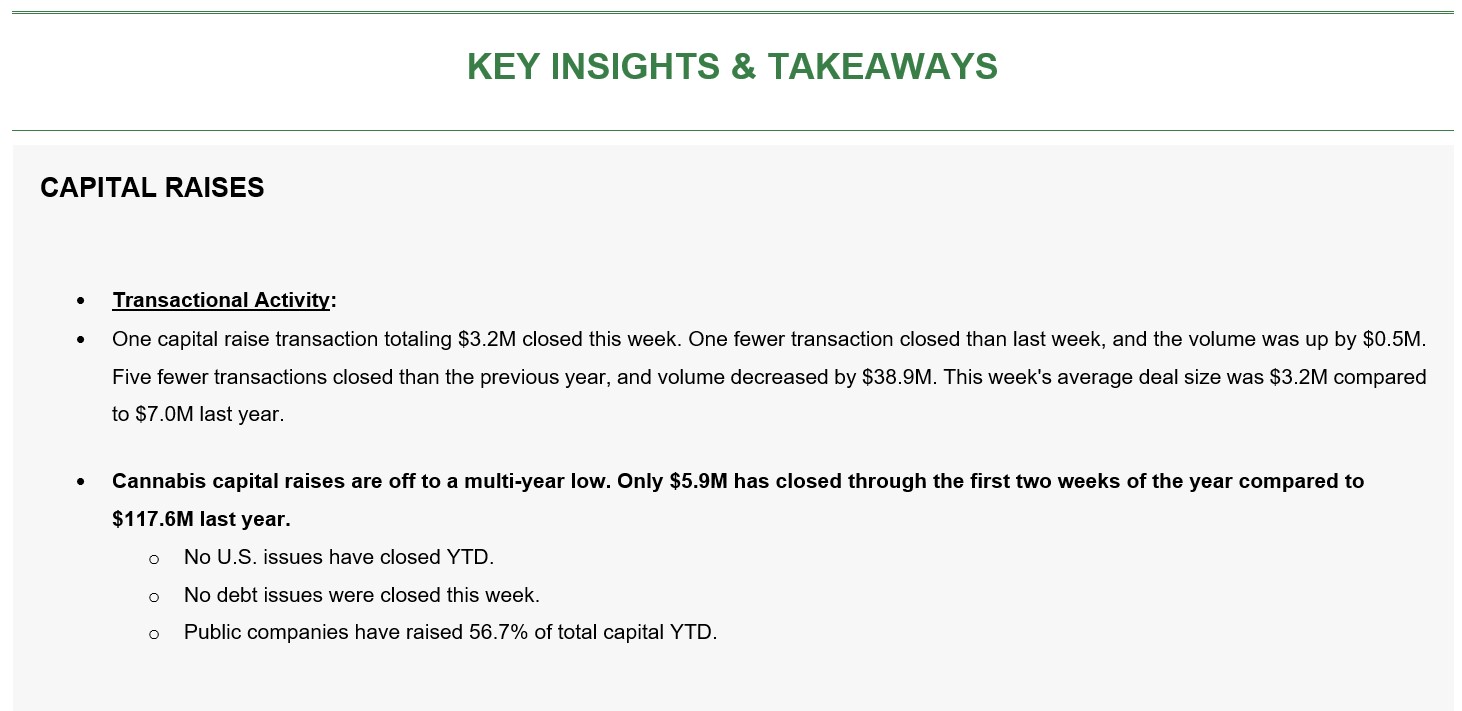
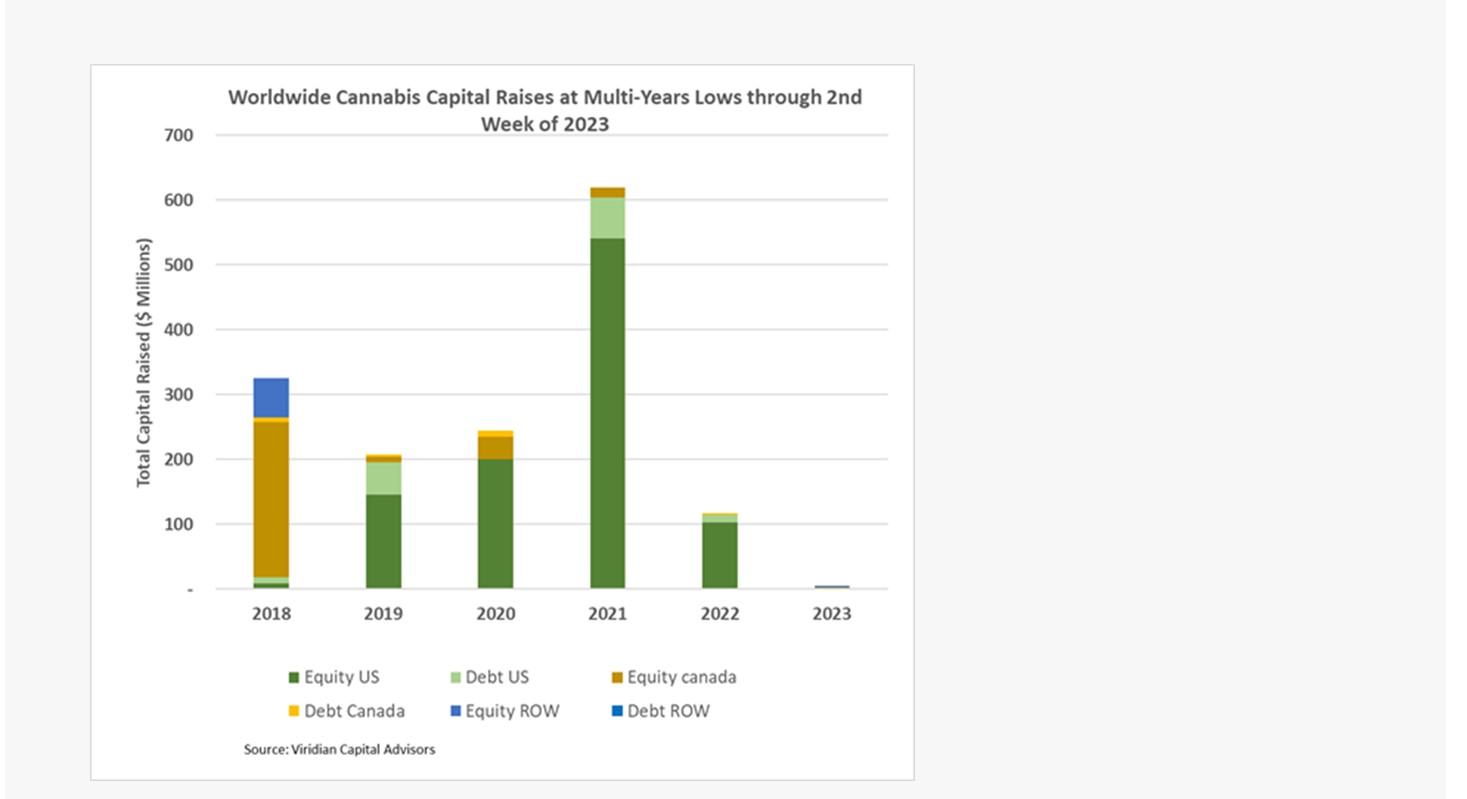
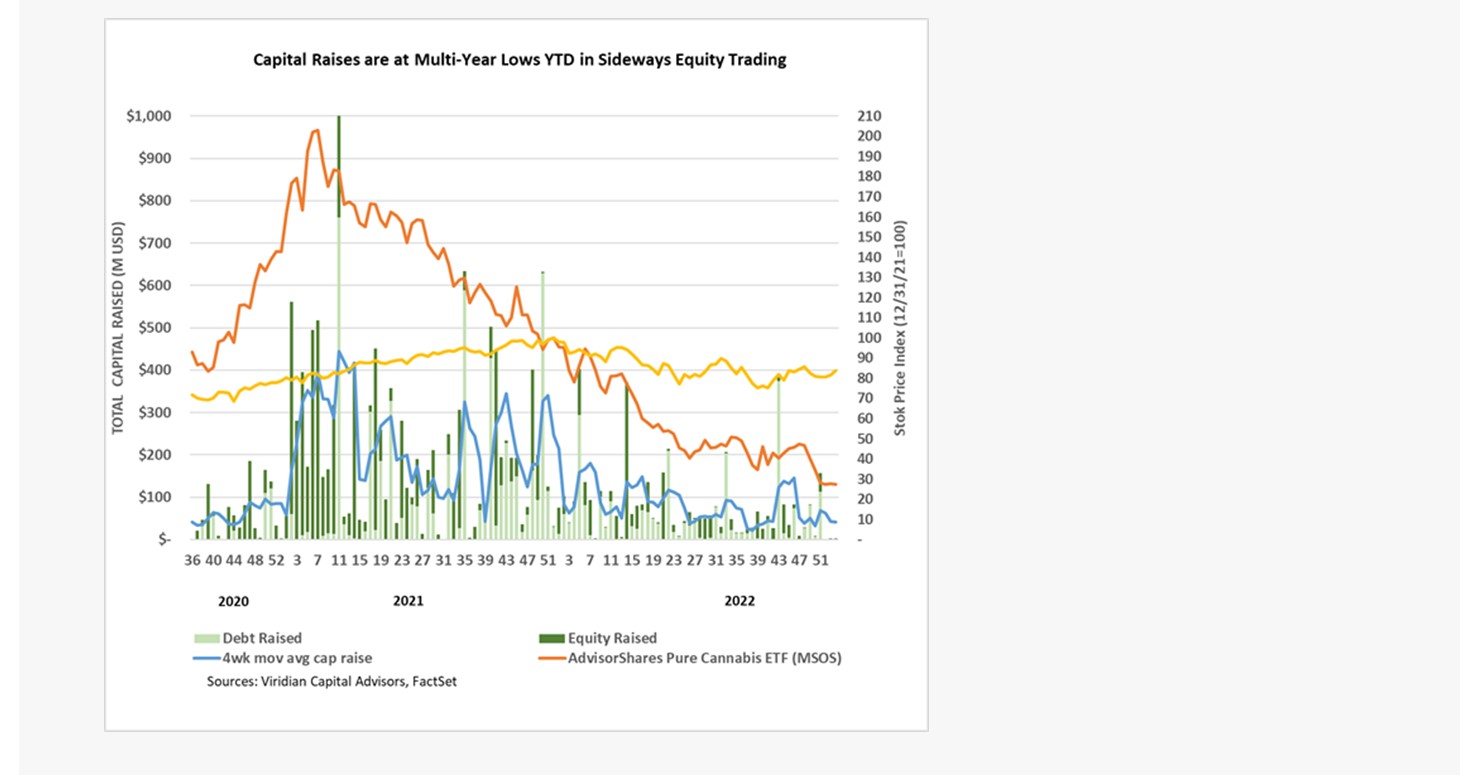
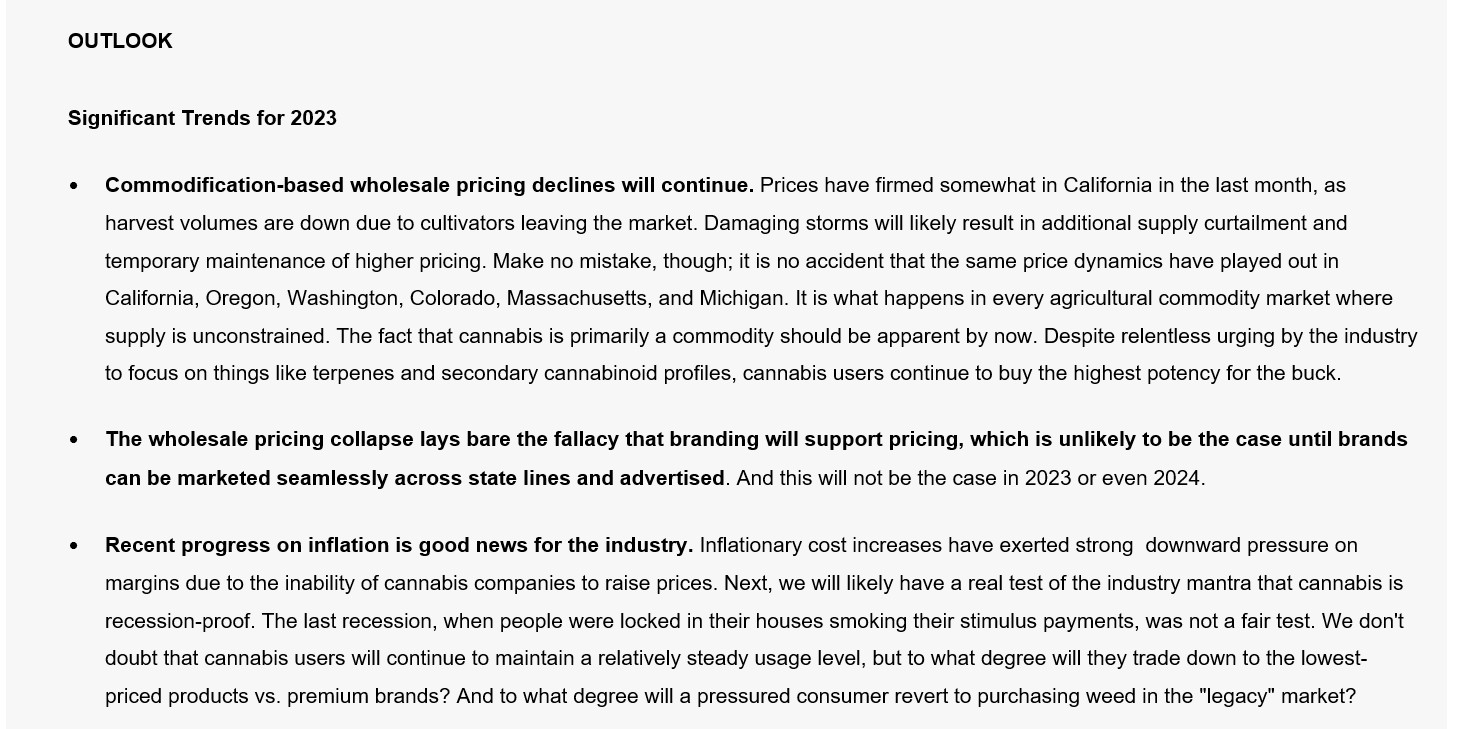
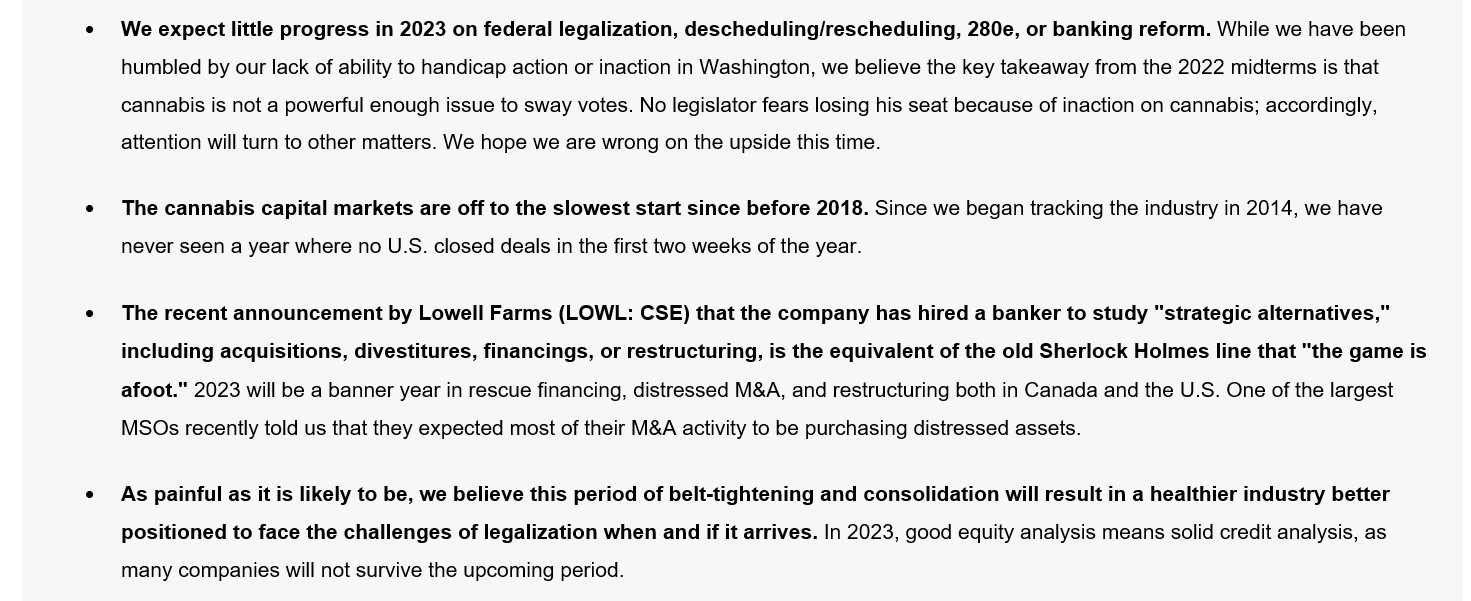
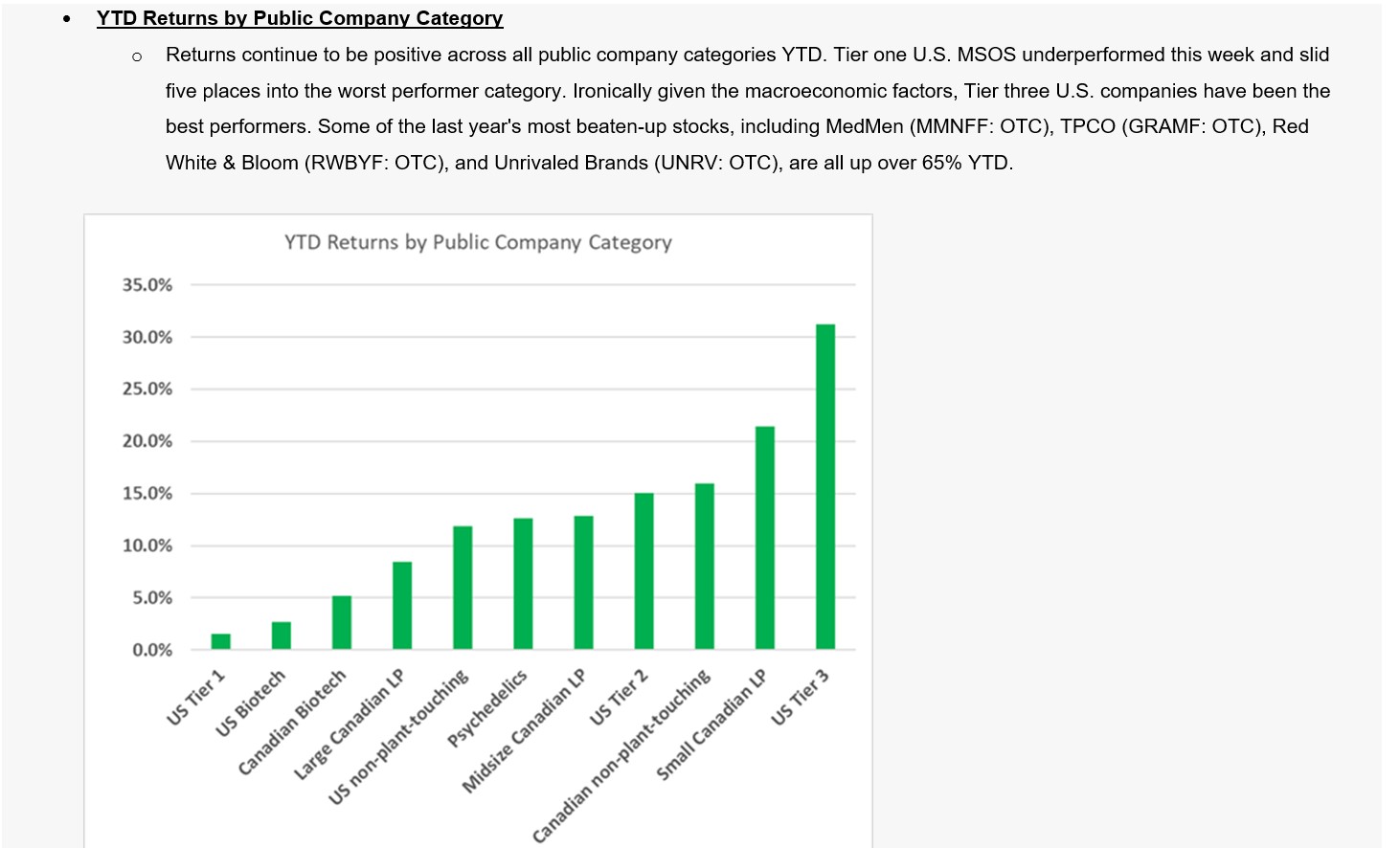
Saying federal safety standards are insufficient to manage the CBD industry, the U.S. Food and Drug Administration (FDA) has called on Congress to set rules for the products through legislation.
The agency said Thursday that not enough is known about CBD products to regulate them as foods or supplements under the FDA’s current structure.
“A new regulatory pathway would benefit consumers by providing safeguards and oversight to manage and minimize risks related to CBD products,” FDA Deputy Commissioner Janet Woodcock said in a statement.
Same old song
FDA has repeatedly cited studies that say CBD could harm the liver and male reproductive system, and said little is known about how it interacts with drugs, and its effects on children and pregnant women.
Hulled hemp seeds, hempseed oil, and seed-based protein powder are allowed as ingredients in human food by the FDA. But CBD, which is derived from hemp flowers, is not.
In calling for Congress to act, the agency said its existing foods and dietary supplement authorities are not able to manage many of the risks associated with CBD under rules for dietary supplements and food additives. “Given the available evidence, it is not apparent how CBD products could meet safety standards” for such products, FDA said in the statement.
Petitions rejected
The FDA underscored its position on CBD by simultaneously announcing it had denied three petitions from stakeholder groups that had asked the agency for rules that would have allowed the marketing of CBD products as dietary supplements.
Lawmakers and CBD stakeholders have repeatedly called out the FDA for its inaction on CBD. The Oversight Committee of the U.S. House of Representatives had said recently that it was preparing to investigate the agency over its regulatory jurisdiction.
Instead of supporting CBD research and making rules, the FDA has mostly cracked down on vendors with repeated waves of warning letters over the last few years.
FDA said recently that it is only months away from finalizing some recommendations for how cannabis should best be regulated, and called for a framework “that balances individuals’ desire for access to CBD products with the regulatory oversight needed to manage risks.” The agency said Thursday it will work with Congress to develop a cross-agency strategy for regulation.
The lack of rules for CBD, long-awaited by stakeholders, is a factor in stalled investment in the sector, which at any rate is massively downsized as a result of a crash that has lingered for more than two years. Interest in the sector could be revived if federal rules allow hemp-derived cannabinoids to be treated as food or supplements instead of drugs.
Swift criticism
Critics were swift to respond to the FDA’s announcement.
“Contrary to the FDA’s continued assertions regarding the safety of CBD, there is clear, established evidence of safety over the years,” said Jonathan Miller, general counsel at the U.S. Hemp Roundtable. “CBD products have been sold at retail for nearly a decade with no significant safety issues.”
Miller argued that existing dietary supplement and food pathways and regulations covering the manufacturing, labeling, and marketing of products are sufficient for CBD.
“We are going on five years with no regulation being blamed on concerns for health implications and we need those investments to support research that showcases the benefits and effectiveness of CBD use – and helps develop dosage guidelines based on those concerns,” Chase Terwilliger, CEO of Balanced Health Botanicals, told FOX Business.
Steve Mister of the Council for Responsible Nutrition, one of three petitioners which had asked FDA to allow the marketing of CBD products as dietary supplements,” told the Washington Post that the agency is “kicking the can down the road while ignoring the realities of the marketplace” by turning to Congress for a resolution.
“FDA has repeatedly disregarded evidence demonstrating safety that is relevant to CBD at the levels commonly used in supplements,” Mister said, claiming the agency’s concerns about CBD are based, wrongly, on indicators related only to high dosage CBD products, such as Epidiolex, a prescription drug that is the only cannabis-based product the FDA has approved.
Lawmaking
Congress has already been looking at CBD, having drafted legislation in 2021 that would have ensured that hemp-derived CBD and other non-intoxicating hemp ingredients could be marketed as dietary supplements. “The Hemp and Hemp-Derived CBD Consumer Protection and Market Stabilization Act of 2021,” which also would have required CBD products and hemp extract manufacturers to comply with existing safety rules for dietary supplements, appears to have died in a House committee early this month.
CBD could be dealt with in the 2023 Farm Bill which will be negotiated this year. Stakeholders have urged lawmakers to incorporate language into the Farm Bill that would designate CBD and other non-intoxicating cannabinoids as dietary supplements.
Curaleaf Holdings, Inc. (CSE: CURA) (OTCQX: CURLF) is finally exiting a trio of legacy western states in search for better profits. The stock was dropping over 5% in early trading on the news to lately sell at $3.61 not far from its 52-week low of $3.57.
The exodus will begin this month with the “proactive closure of the majority of its operations” including its production and cultivation facilities in California, Colorado, and Oregon, the company said on Thursday.
“Today’s announcement reflects a decision that we did not arrive at lightly, and one that makes sense for our business at this time,” CEO Matt Darin said in a statement.
10% of Employees Laid Off
“We have a fiduciary responsibility to our shareholders to improve margins and fortify our balance sheet by controlling what we can in our business. We believe these states will represent opportunities in the future, but the current price compression caused by a lack of meaningful enforcement of the illicit market prevent us from generating an acceptable return on our investments.”
At the same time, Curaleaf will also reduce its payroll by 10% “which, when coupled with other cost savings initiatives, it expects to realize $60 million in gross run-rate expense savings in 2023, exceeding its initial savings target by 50%.”
The MSO giant will also consolidate its Massachusetts cultivation and processing operations, with plans to record the actions as non-cash restructuring and impairment charges that it said it will detail on its March fourth quarter earnings call. The company said it will focus on generating cash flow in its core revenue-driving markets.
The news comes in a timely fashion, as Curaleaf has seen slowing growth amid a broader slowdown in the global economy and lulled efforts concerning U.S. federal legalization.
The company laid off around 220 of its employees ahead of the Thanksgiving holiday last year after its most recent earnings showed crimping margins and rising losses despite surviving revenue expectations.
In a Nov. 7 earnings call, founder and chairman Boris Jordan told investors that management is “acutely aware of the economic conditions our customers are navigating.”
“As such, we are taking appropriate actions to ensure we continue driving growth and margin expansion next year, irrespective of the economic climate,” Jordan said at the time.
Darin said during the call that the company is “comfortably transitioning from the asset accumulation phase to the asset optimization phase in our evolution. Importantly, we are at this juncture by choice, not market force.”
Illicit Market Cited
“These adjustments were necessary for the future success and profitability of the business and were made as a result of recent legislative decisions, price compression, and lack of enforcement of the illicit market,” the company wrote in the Thursday memo. “For context, these markets contributed less than $50 million in revenue to Curaleaf last year.”
Curaleaf expects the exits to be accretive to its adjusted EBITDA margins and positions the balance sheet for positive free cash flow generation “in excess of $125 million” in 2023.
“We are confident that these moves, made to improve our cashflow and margins, are the right ones to bolster the future success and profitability of Curaleaf,” Darin said on Thursday. “Optimizing the existing portfolio in this way allows us to enter 2023 in a position of strength and further enhances our visibility around continued margin expansion and highly profitable growth. We remain excited about our future growth prospects both domestically and internationally, and now can devote greater resources to tangible growth opportunities in emerging markets such as Europe.”
New York state regulators on Wednesday awarded another 30 licenses to operate recreational marijuana stores, though a pending lawsuit is still blocking adult-use retail in key locations across the state.
The Office of Cannabis Management has now licensed 66 retailers in the state, though as of Tuesday, only two have opened for business.
Both are located in lower Manhattan.
A third, in Manhattan’s Union Square, is scheduled to open Feb. 13, according to New York TV station WNBC.
Of the 30 licenses awarded Wednesday, 16 were issued in New York City – eight in Manhattan and four each in the Bronx and Queens.
There are still no licensed dispensaries in Brooklyn and four other areas upstate, all of which have been stalled because of a lawsuit filed by an out-of-state company alleging the state’s licensing scheme violates federal law by favoring New Yorkers.
All adult-use retail licenses in New York state are currently awarded to:
- Qualifying individuals with a previous cannabis conviction or a family member with a conviction and a history of running a successful business.
- A nonprofit with a history of serving people involved with the criminal justice system and with at least one “justice involved” board member.
Twenty-eight of the licenses awarded Wednesday went to qualified individuals. Those licensees are permitted to seek out their own real estate or operate in a “turnkey” location set up by the state Dormitory Authority.
The state’s existing 10 medical marijuana companies, including major multistate operators Columbia Care and Curaleaf Holdings, are still waiting to enter New York’s adult-use industry.
Michigan marijuana sales reached a record high in December, state data shows.
While medical cannabis purchases have gradually declined, the adult-use market has more than made up for that drop, with total sales hitting $221.7 million last month. That’s about $9 million more than the previous record set in September.
The state Cannabis Regulatory Agency (CRA) shows that December saw $208,318,037 in recreational cannabis sales and $13,419,377 from medical marijuana purchases, as New Cannabis Ventures first reported.
What’s more, the state is experiencing this total sales surge even as the average cost of marijuana has continued to dip, with the price of an ounce now hovering around $90. In December 2021, by contrast, the cost of an ounce was about $180.
Most of the cannabis purchases came from flower, followed by vape cartridges and infused edibles, CRA’s data reveals.
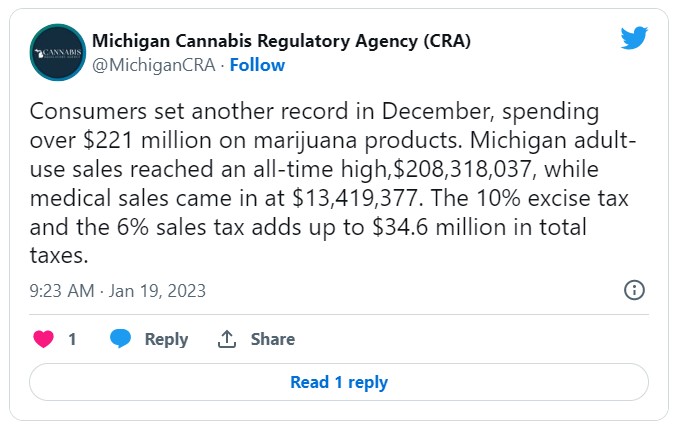
Arizona’s marijuana market has seen similar trends, with the state recently announcing that cannabis sales reached a record high in October. Medical marijuana purchases are also declining in the state, but the recreational market is on an upward trajectory.
Illinois marijuana sales hit a record high of more than $1.5 billion in 2022—and this past December marked the strongest sales month to date—officials announced earlier this month.
Meanwhile, Michigan regulators announced last year that they are issuing another round of grants to support research into the therapeutic benefits of marijuana for military veterans, using tax dollars the state generated from adult-use cannabis sales.
This time around, CRA said that it has recommended awarding $20 million in grants to two universities as part of the Veteran Marijuana Research (VMR) Grant Program.
Michigan officials also announced last year that the state would be distributing nearly $150 million in marijuana tax revenue, divided between localities, public schools and a transportation fund.
The state Treasury Department said that the funding—made possible from tax revenue generated from the state’s adult-use cannabis program—includes $42.2 million for 62 cities, 15 villages, 33 townships and 53 counties.
That’s more than four times the level of funding that the state paid out to municipalities with cannabis tax dollars in 2021.
Regulators also announced last year that the they approved the state’s first-ever social consumption site for adult-use marijuana in Hazel Park. It stands to reason that, as that sector of the marijuana industry grows, even more tax revenue may follow.
Lawmakers in that city also approved a resolution designating September as a month of awareness of the therapeutic potential of psychedelics—making it the second city to take the symbolic additional step after locally decriminalizing natural plants and fungi.
The once high-flying marijuana industry is expected to endure more layoffs and pain in 2023 – and perhaps beyond – after a tough year marked by companies cutting hundreds of employees amid falling wholesale prices and slowing demand.
The layoffs have involved a range of businesses, including large multistate operators such as Curaleaf Holdings and Trulieve Cannabis as well as smaller tech companies.
Several high-profile industry executives also have exited the scene, underscoring how the fallout has spread to the C-suite level.
“I don’t think layoffs have peaked. I think this will continue into 2024 for sure,” Sara Gullickson, CEO and founder at The Cannabis Business Advisors, told MJBizDaily via email.
Through the first part of the COVID-19 pandemic, people were receiving government assistance and many were working remotely. Sales exploded.
This environment fueled additional spending in the cannabis sector, according to Gullickson.
Now, consumers are spending less to prepare for a possible recession. Combined with a lack of movement on SAFE Banking or any major federal reform, investors have taken notice.
“Capital has gone by the wayside and businesses are having to course-correct,” Gullickson added.
“Cannabis market numbers at the end of 2020 and the beginning of 2021 were inflated in many ways and valuations were astronomical.”
The damage has been widespread. Over the past several months, layoffs have been reported by:
- Oregon-based cannabis retail technology firm Dutchie, which laid off 8% of its workforce last June and instituted another round of layoffs in November, according to a company spokesperson.
- Cannabis tech company WM Technology, which laid off 175 employees, or 25% of its workforce, in November. CEO Chris Beals, Chief Operating Officer Juanjo Feijoo and Chief Technology Officer Justin Dean subsequently resigned from the company, which operates Weedmaps.
- Massachusetts-based Curaleaf, which cut 220 employees in November and 50 in August. The MSO shuttered its Sacramento, California, facility.
- Seattle-based cannabis commerce platform Leafly Holdings, which cut 56 employees in October, or 21% of its workforce. COO Sam Martin departed in December.
- Florida-based Trulieve, which laid off as many as 36 employees in Pennsylvania in December and an undisclosed number in Florida.
- New York-based cannabis wholesale platform Leaflink, which cut 80 jobs in December.
- Denver-based compliance software company Akerna, which terminated 56 positions in May.
- Florida cannabis marketing technology company Springbig, which reduced its workforce by 23%, or 37 jobs, through “layoffs and attrition.”
- Green Leaf Medical, a subsidiary of New York-based MSO Columbia Care, which is cutting 73 employees in Saxton, Pennsylvania, effective Feb. 28.
Dutchie’s plight
Dutchie, in some ways, has underscored the cannabis industry’s roller-coaster ride since the outbreak of the pandemic in 2020.
The company’s initial round of layoffs last June occurred less than a year after Dutchie raised $350 million; the company was valued at a whopping $3.75 billion.
Co-founder and CEO Ross Lipson attributed the cuts to the “dramatic market shift” in the cannabis industry.
Last month, however, Lipson and his co-founder brother, Zach, were ousted from the company by the board. They are now suing to try to take back control of the company.
Meanwhile, the cannabis industry’s layoffs have dovetailed with cuts at mainstream companies.
Household names including Goldman Sachs, Twitter, Facebook parent Meta and Amazon have shed thousands of employees.
But the cannabis industry’s pressures are uniquely challenging, including:
- More consolidation and streamlining operations.
- Price compression in oversaturated markets.
- High interest rates and challenges raising capital.
- Formerly limited license states expanding license numbers.
Cannabis tech and the ‘trickle-down’ effect
Layoffs at Akerna, Leaflink, Leafly Springbig, Weedmaps and other software and technology companies serving the cannabis industry demonstrate how that sector was hit particularly hard in 2022.
In Akerna’s case, the layoffs were part of a larger cost-cutting plan to accelerate the company’s path to profitability, according to a news release.
The executive team also agreed to a 25% cut in compensation.
Last week, Akerna announced the sale of 365 Cannabis back to some of the business software firm’s previous investors in a deal worth roughly $2.8 million.
That was significantly less than what Akerna paid to acquire 365 Cannabis in 2021. Nasdaq-traded shares of Akerna (KERN) surged in response to the sale.
According to Gullickson, even though their services are specialized and needed by the broader cannabis industry, the problems facing cultivators and retailers are trickling down to non-plant-touching ancillary companies.
“We’re seeing a trickle-down effect,” she wrote.
“As capital and revenue declines on the plant-touching side, it strangles many of the ancillary businesses that rely on those operators for their customer base.”
Have tech layoffs peaked?
California-based consultant Andrew DeAngelo told MJBizDaily that in the case of cannabis marketing tech companies, some had recently reduced fees to compete in an increasingly cluttered market.
Others might have gone public and grown too quickly and are rightsizing as a result.
But he said fewer staff comes at a cost, and in the case of tech, layoffs might have peaked in 2022.
“I’m not sure they can cut any more people than they have without doing serious damage to their actual operations,” he said.
“But I worry about the plant-touching folks a little bit more in terms of layoffs continuing into this year.”
Ademola Oyefeso, international vice president of the United Food and Commercial Workers International Union (UFCW), encouraged cannabis workers to join unions, which he said benefits both employees and employers.
“At the same time that cannabis workers are benefitting from the job security that a union contract offers, like family-sustaining wages and affordable health care, their employers are also benefiting from the consistency and dependability that comes with a collective bargaining agreement,” he told MJBizDaily via email.
UFCW and Teamsters have been signing up marijuana workers in several states and will continue their work in 2023.
“It’s clear from the layoffs seen the past few months that the cannabis industry is not immune to the impacts of the rest of the economy,” Oyefeso said.
The contraction of mature adult-use markets
The most significant trend in cannabis in 2022 was declining sales in the mature recreational markets.
Most experienced double-digit declines versus the same period in 2021.
Although new markets showed healthy growth, it makes one wonder what that would look like in better economic conditions.
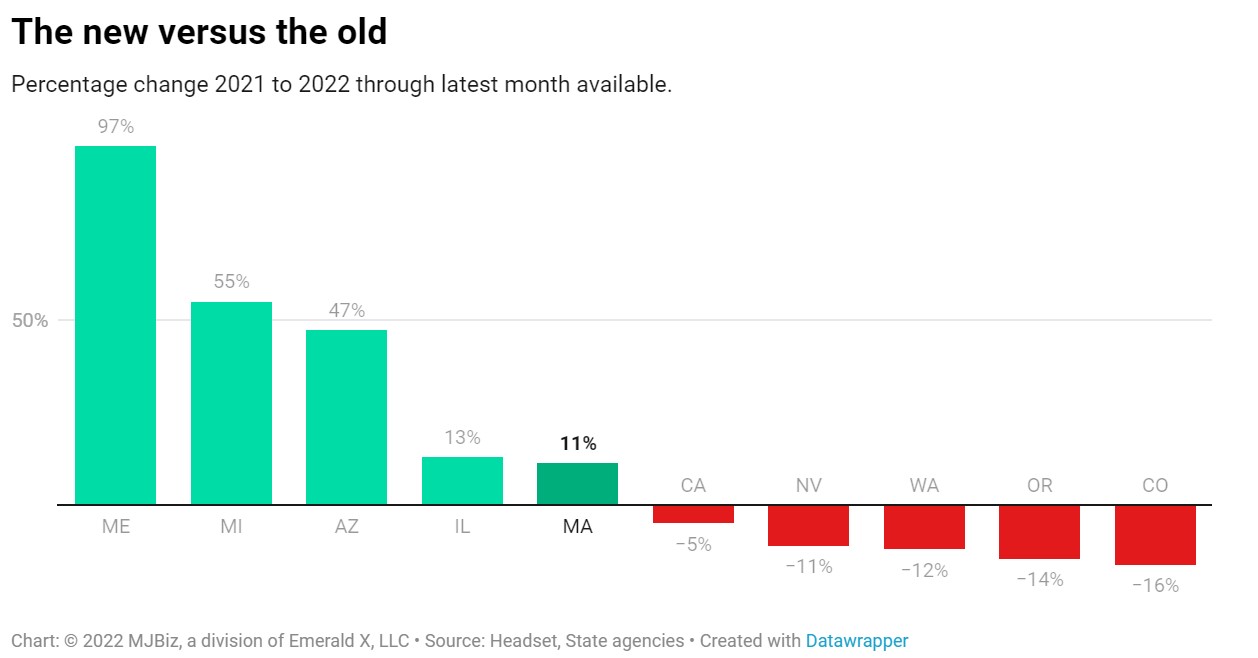
Sliding stock prices
The start of 2021 was full of hope for cannabis investors.
President Joe Biden took office in January, and the Democrats took control of the House of Representatives and Senate.
It all went downhill from there as banking reform failed to happen.
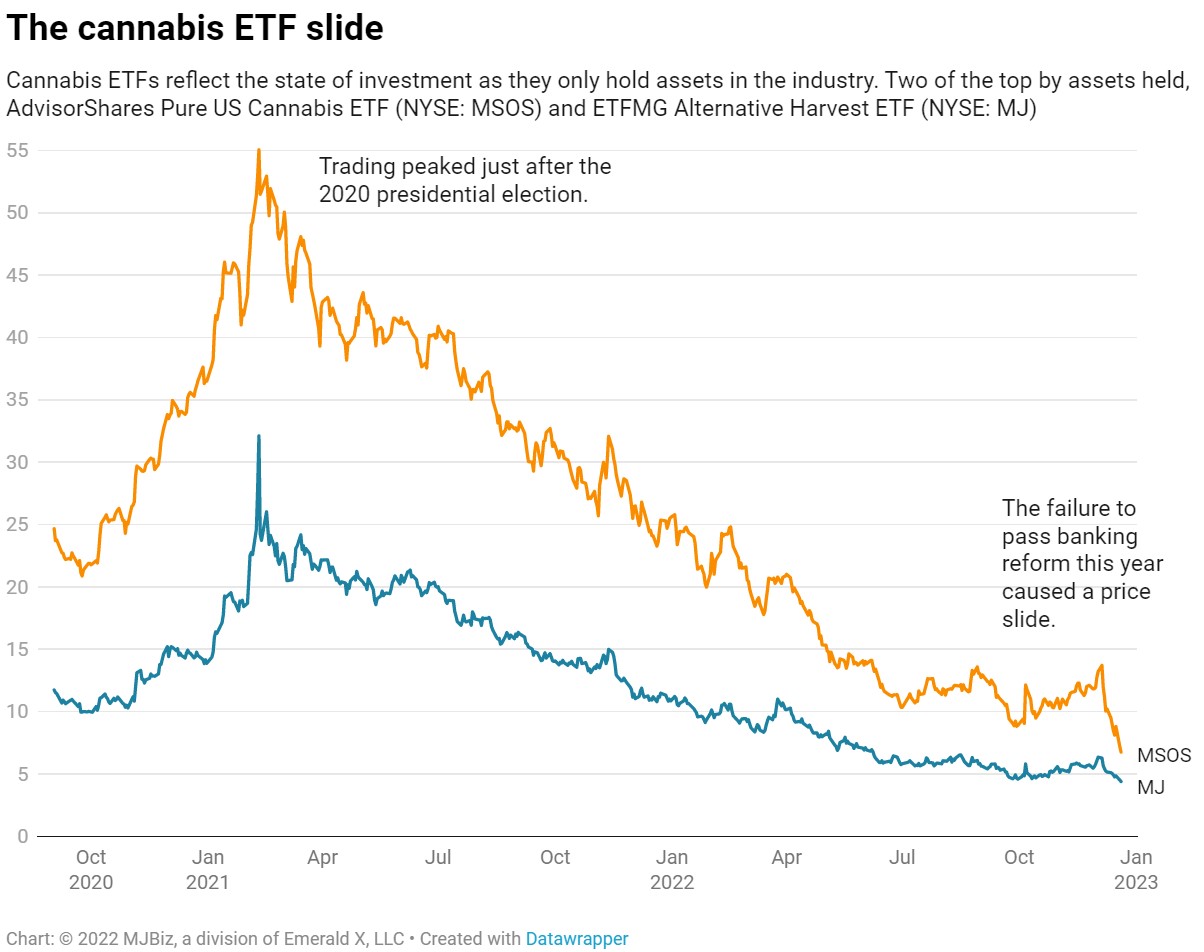
Five of the oldest cannabis markets in the U.S. are facing declining year-over-year sales figures for the first time since launching their respective commercial retail programs for adult use.
After pandemic peaks equated to record growth across much of the industry in 2021, Colorado and Oregon dispensaries are now facing the brunt of 2022’s correction, while Nevada and Washington retailers also are on track to report double-digit downturns in terms of percent decreases to their sales totals this year. And California, which began adult-use retail more recently, on Jan. 1, 2018, also is amidst a shrinking regulated market (as far as sales go).
With the exception of Alaska, which does not tax sales to end users and therefore does not keep records pertaining to those transactions, according to its Department of Revenue, those five states represent the most mature adult-use markets in the U.S. They also represent some of the oldest medical markets, too, with California pioneering that reform front in 1996.
And age has something to do with the trends of 2022, according to Cooper Ashley, analytics manager, and Mitchell Laferla, data analyst, at cannabis data and research company Headset.
“The biggest contributing factor to whether a market is growing this year is where it’s at in its market maturity,” the analysts said via email. “The separation is not actually geographical in nature, rather it’s about legacy markets (California, Nevada, Colorado, Oregon, Washington) versus new markets (Massachusetts, Michigan, Illinois).”
Specifically for states that track adult-use sales separately from medical sales, Maine, which launched its adult-use retail program in October 2020, Michigan (December 2019) and Arizona (January 2021) experienced the largest percent increases for adult-use sales through the first three quarters of 2022 compared to the same time period in 2021, according to data collected by CBT.
Editor’s note: CBT’s analytics for this article were derived from data from the Arizona Department of Revenue, California Department of Tax and Fee Administration, Colorado Department of Revenue, Illinois Department of Financial and Professional Regulation, Maine Office of Cannabis Policy, Massachusetts Cannabis Control Commission, Michigan Cannabis Regulatory Agency, Nevada Department of Taxation, Oregon Liquor and Cannabis Commission, and Washington State Liquor and Cannabis Board.
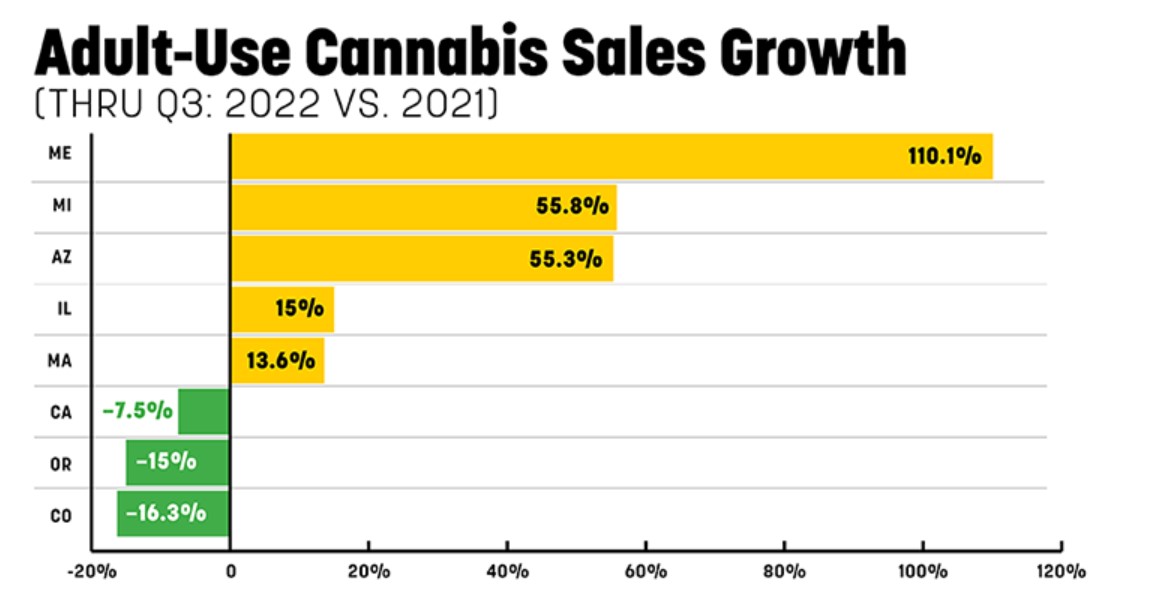
While Michigan and Arizona’s adult-use retail markets experienced in excess of 55% growth through the first nine months 2022 (compared to 2021), factoring in the shrinking medical markets in those states provides a more complete picture of overall growth.
Michigan’s combined adult-use and medical sales figures through the third quarter of 2022 represent a 27% increase over 2021, while Arizona’s combined figures represent a 5.4% increase. (See “Newer Markets & 2023 Predictions” section below, which includes a more thorough analysis of up-and-coming state marketplaces.)
“Michigan, for example, is the growth leader in 2022, and, as a state, it is still growing to meet the demand in a rec market that is [3] years old,” the Headset analysts said. “In Washington, for example, which has a very established adult-use market of nearly a decade, they are seeing the double-digit slides. In Washington, the market converged on local demand several years after sales began, so, without the ‘growth phase’ seen in Michigan, Massachusetts [and] Illinois, they are getting hit the hardest by some of the well-known industry pains such as price compression.”
Washington’s combined adult-use and medical retail sales shrank 13% in the first three quarters of 2022, compared to the same timeframe in 2021, while Oregon and Colorado’s market declines were further exacerbated by factoring in both patient and consumer sales figures.
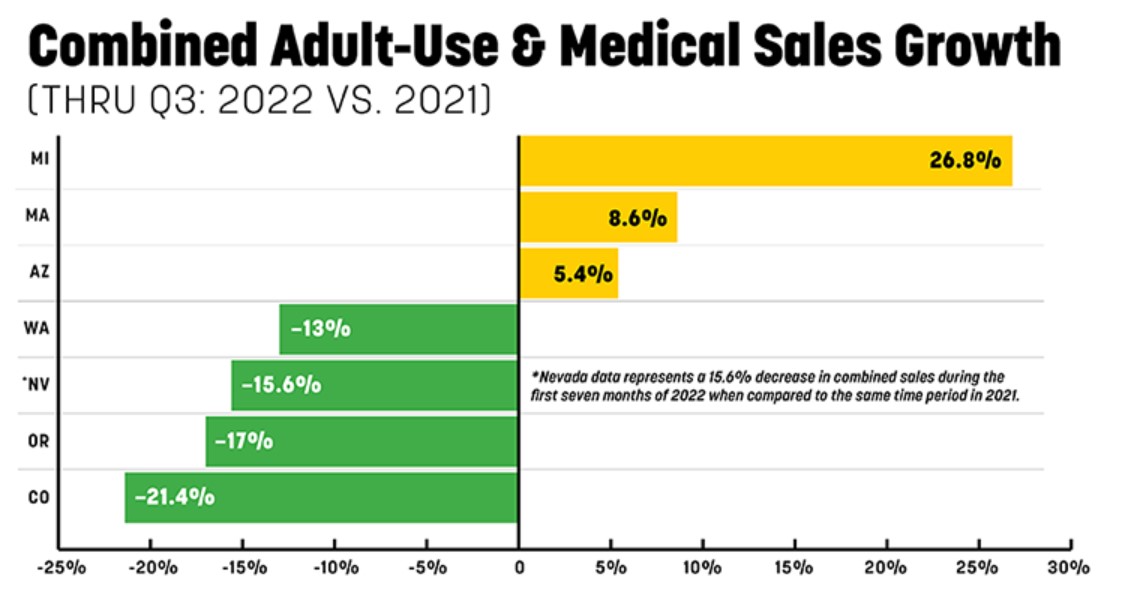
But why are Oregon and Colorado’s markets experiencing deeper downturns than a state like Washington, which is just as mature in the cannabis space?
“There are probably multiple reasons that Colorado and Oregon are loss leaders,” the analysts said. “Oversupply could definitely be contributing as both have been in the news for such issues this year. Oregon specifically has issued a licensing moratorium until 2024 to help with an oversaturated market. Pricing is definitely an issue in both of those markets. [We] also believe that both Colorado and Oregon had some of the largest sales surges during the pandemic, so, in a way, they had the furthest to fall in the market correction.”
Colorado
For example, Colorado’s combined adult-use and medical sales grew 63% from February to July 2020—highlighting the month right before COVID shutdowns began in the U.S. to the immediate aftermath of a pandemic boom for cannabis sales—according to data from the state’s Department of Revenue.
Stepping back to take stock of the bigger picture, Colorado’s monthly sales averaged nearly $192 million from March 2020 to May 2021—during the entirety of the pandemic boom—representing a 35% increase from the $145 million monthly average from January 2019 to February 2020 (a pre-COVID baseline).
Now in the post-pandemic market correction, Colorado’s combined adult-use and medical monthly cannabis sales averaged nearly $150 million through the first 10 months of 2022—much less than the boom period, but a little more than the pre-pandemic market.
As far as price compression goes, Colorado’s median market price for unprocessed dried flower from cultivator to retailer hit a quarterly peak at $1,721 per pound in January 2021. That rate fell nearly 62% to $658 to pound as of Oct. 1, 2022—the lowest price since the state launched its adult-use market in January 2014.
Based on 2022 monthly sales averages through October, Colorado’s combined adult-use and medical retail market is projected to hit $1.8 billion for the year, a bit shy of 2021 and 2020 tallies.
Here’s a snapshot of yearly sales totals since the state implemented both commercial markets:
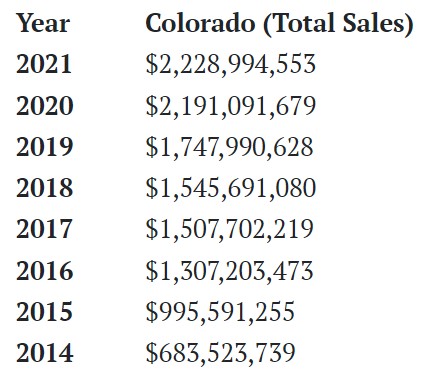
Oregon
Much like Colorado, adult-use pioneer Oregon is on its way to a double-digit decline in 2022.
Monthly sales peaked at nearly $111 million (combined adult-use and medical) in April 2021 but have steadily declined since, to less than $80 million in October 2022, according to data from the Oregon Liquor and Cannabis Commission (OLCC).
Oregon’s monthly sales averaged more than $99 million from March 2020 to May 2021—during the pandemic boom—representing a 49% increase from the nearly $67 million monthly average from January 2019 to February 2020 (a pre-COVID baseline).
Now in the post-pandemic correction, Oregon’s combined adult-use and medical cannabis sales averaged nearly $84 million through the first 10 months of 2022.
The post-pandemic market downturn comes as average adult-use retail prices for flower have dropped from $161 per ounce in the fall of 2020 to an all-time low of roughly $116 per ounce in November 2022, according to OLCC. The average wholesale price also dropped to an all-time low of approximately $600 per pound in recent months.
RELATED: Oregon Cannabis Prices Swing From Pandemic Peaks to Record Lows
Based on 2022 monthly sales averages through October, Oregon’s combined adult-use and medical retail market is projected to record roughly $1 billion in sales after coming just short of $1.2 billion in 2021.
Here’s a snapshot for the last five years:

Nevada
Market maturity, oversupply, price compression, less demand, the illicit market, basket sizes, licensing structures, taxes and myriad other factors can impact sales growth/declines in various state-legal cannabis markets.
In 2022, pricing drove a lot of the sales woes in legacy markets, according to Cooper and Laferla.
“For example, in Nevada, which we consider a mature market, has seen average basket size shrink by 12.6 percent year-over-year while average discount has increased 7 percentage points in the last year,” the analysts said. “In October 2021, average discount was 12.8 percent and has increased linearly to 19.8% in October of this year.”
Average item price and equivalized volume prices (the price per unit of product, such as price per gram or milligram) fell mostly across the board, which drove down that basket size, they said.
“And then retailers are discounting heavily on top of that to try to make up for low margins with generating more consumer volume,” the analysts said. “However, that just leads to more price compression, razor thin margins and smaller sales totals.”
In Nevada, that’s factored into the state’s $532 million in combined adult-use and medical sales through the first seven months of 2022, representing a 15.6% decrease compared to the same time period in 2021, according to data from the state’s Department of Taxation.
Based on monthly trends through July 2022, Nevada’s combined adult-use and medical retail market is projected to record nearly $900,000 in sales for the year after eclipsing the $1 billion mark in 2021.
Here’s a snapshot for the last four years:
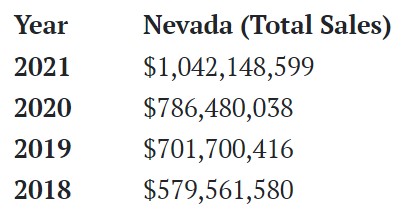
Washington
The nation’s second-oldest adult-use cannabis market, Washington’s state industry has run the gamut in recent years, from wildfires in 2020 to a heat dome in 2021 and a fatal dispensary shooting in 2022.
And despite being among the highest taxed markets in the U.S. (including a 37% cannabis excise rate), the Evergreen State has managed to somewhat lessen the impact of the post-pandemic correction compared to a few of its peers—notably Colorado, a fellow pioneer that also launched adult-use sales in 2014.
And yet Washington’s sales surge during the pandemic, featuring a 33% increase in average monthly sales compared to pre-pandemic monthly averages, tracks closely with Colorado’s 35% sales surge. Still, price compression has steered Washington’s retail figures to a 13% year-over-year slide through the first three quarters of 2022, according to data from the state’s Liquor and Cannabis Board.
Based on monthly trends through September, Washington’s combined adult-use and medical retail market is projected to come just shy of $1.3 billion in sales in 2022, after eclipsing $1.4 billion in each of the previous two years.
Here’s a snapshot for the last four years:
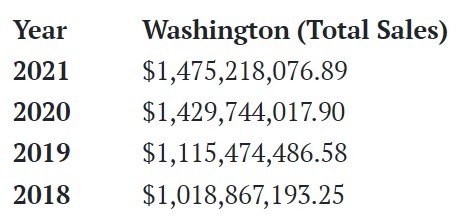
California
California’s cannabis retail market stood in an interesting spot in 2022: caught trending closer to some of the more mature markets in the West despite an adult-use sales launch that aligns closely with Massachusetts.
Through the third quarter of 2022, California’s adult-use dispensaries recorded just more than $4 billion in sales for the year, representing a 7.5% decrease from the same period in 2021, according to the state’s Department of Tax and Fee Administration (CDTFA). Meanwhile, Massachusetts, which launched a commercial adult-use market in November 2018, 11 months after California, is experiencing 13.5% sale growth through the third quarter of 2022.
The difference between one state’s sales decline versus another state’s growth in this instance offers a glance beyond the simplicity of market maturity as a driving factor for those trends. For starters, California has expansive rural regions in San Bernardino, Los Angeles, Riverside and Kern counties—where the illicit market can thrive—and elsewhere throughout the state. In particular, San Bernardino County is roughly twice the size of Massachusetts with 5 million fewer people.
Next, while California’s Department of Cannabis Control (DCC) has made strides in expanding the state’s licensed retail footprint—including by more than 20% in its first year after taking the streamlined reins as the state’s regulatory body—it still has a long ways to go. As of earlier this year, California had roughly 2.4 dispensaries per 100,000 residents, much fewer than its Pacific Coast neighbors, making it more difficult to answer demand in certain areas of the state.
And for Massachusetts, until Vermont launched sales in October 2022, it was surrounded by five other states that had yet to implement adult-use retail programs. While Massachusetts’ flower prices did plummet to an all-time low of $220 per ounce on average at adult-use retail in October, that compression wasn’t necessarily impacted by competition from bordering markets or the scale of the illicit operations as seen in California.
One thing working in California’s licensed operators’ favor in 2022 was the state’s elimination of its cannabis cultivation tax—a $161 rate per pound—on July 1.
Based on monthly sales trends through September, California’s adult-use retail market is projected to hit roughly $5.3 billion in sales in 2022 after recording nearly $5.8 billion in 2021. (Editor’s note: CDTFA first reported roughly $5.2 billion in sales for 2021 but has since added roughly $600,000 to that figure due to amended or late tax returns.)
Here’s a snapshot for the last four years:
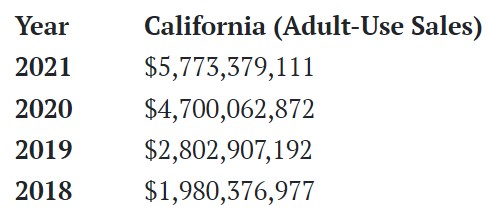
Newer Markets & 2023 Predictions
While California still stands alone as the largest cannabis market in the world, Michigan will take over the second spot in the U.S. when 2022 retail figures are finalized in the books.
Michigan’s combined adult-use and medical cannabis sales are projected to reach nearly $2.3 billion by the end of the year, according to data from the state’s Cannabis Regulatory Agency. That’s a 28% increase from the nearly $1.8 billion in sales from 2021.
The newer growth markets remain the “most interesting,” Headset’s Cooper and Laferla said.
“Michigan and Illinois are high population states, so [we] think they will end up being really big markets comparatively,” the analysts said. “Michigan is already a $2-billion market in 2022, the second largest that we track behind California with Illinois a close third.”
Through November, adult-use sales in Illinois have surpassed $1.4 billion in 2022, a 13.5% increase from 2021, according to data from the state’s Department of Financial and Professional Regulation. And combined adult-use and medical sales have eclipsed $1.7 billion through November, according to Headset.
Illinois, with roughly 13 million residents, and Michigan, with roughly 10 million, represent the second and third most populous states that have fully implemented a commercial adult-use retail market.
“Everyone wants to know when these markets will level out; in reality it’s very difficult to predict,” Cooper and Laferla said. “However, we may already be seeing small signs that they are converging on demand. Michigan, for example, had 52 percent brand growth between 2020 and 2021. From 2021 to this year, brand growth has only been 4.5 percent, indicating that things are potentially slowing down.”
Massachusetts, a state of approximately 7 million people, has recorded roughly $1.6 billion in combined adult-use and medical cannabis sales through November, representing a 7.5% increase from the same 11-month period in 2021, according to data from the state’s Cannabis Control Commission.
“For newer markets, [we] would be surprised to see such large growth again in 2023, especially given that they are experiencing a lot of the pricing issues of the market at large,” the analysts said.
Arizona, which launched adult-use sales on Jan. 21, 2021, has experienced somewhat slower growth in its overall cannabis retail market, as its medical sales have dipped at a sharper rate than adult-use sales have grown in recent months.
In February 2022, when both markets peaked, adult-use sales were at $73 million and medical sales were at $58 million, according to the state’s Department of Revenue. Fast forward to September, adult-use sales remained $73 million while medical sales dropped to $32.5 million. The overall market shrank by roughly $26 million during those eight months.
Based on current trends through the third quarter, Arizona’s combined 2022 sales figures will closely mirror the $1.36 billion of adult-use and medical cannabis sales from 2021.
And in Maine, which implemented its adult-use retail program in October 2020, dispensaries are projected to record roughly $158 million in adult-use sales in 2022 based on trends through November, roughly doubling the $82 million in adult-use sales recorded in 2021, according to data from the state’s Office of Cannabis Policy.
Beyond that, five state markets fully implemented adult-use sales in 2022, including Montana (Jan. 1), New Mexico (April 1), New Jersey (April 21), Vermont (Oct. 1) and Rhode Island (Dec. 1).
In addition, New York regulators continue to work toward launching adult-use retail before the end of the year, while Connecticut plans to commence adult-use sales on Jan. 10, 2023, and Missouri and Maryland, which passed ballot measures in November, also could ignite commercial programs in 2023.
Despite the 2022 slides experienced in legacy markets, newer markets in states like these “likely will bolster total U.S. market sales” in the year to come, Cooper and Laferla said.
I struggled for a minute, thinking about what this end-of-year digest should say. Typically, year-end missives consider what has happened while offering a forward-looking view, one that’s hopefully positive. I hate to kick a horse while it’s down, which, in this case, is the wider cannabis industry and culture, but the truth is: shit sucks right now. It would be putting lipstick on a pig to pretend otherwise. So, basically, I’m here to commiserate with everyone.
Even the Wall Street guys are pissed, so you know it’s bad. Usually, when the culture is upset, it’s because of dynamics that have big business grinning while the little guys get crushed. In this current climate, everyone is hurting. Jesse Redmond, a former hedge fund manager who writes the Green Giants newsletter, which details retail cannabis stocks investing, tweeted yesterday, “New all-time low on $MSOS. The ETF has dropped 88% over the past 686 days and is down 46% MTD. It will take an 830% return to get back to the all-time high.” MSOS is a fund that includes some of the most recognizable publicly traded multi-state operators, like Curaleaf, Trulieve, Green Thumb, and Verano.
The main reason they’re so pissed (this time) is because of repeated stalling on legislative action at the federal level, the most recent of which was SAFE banking’s demise. The Republican blocking of that legislation, while harmful to some actors in the cannabis space, is indicative of a much larger problem, one that affects everyone who touches cannabis in any way: weed is still politically radioactive for some factions of power, despite remaining overwhelmingly popular with voters. Because of this, a common refrain among advocates of all stripes is that federal legalization won’t come anytime soon unless Biden decides to truly go “Dank Brandon” beyond his half-assed pardon of federal marijuana prisoners incarcerated for possession (of which, there are not many).
That’s bad news for everyone. But things are infinitely worse for those on the ground, especially growers. California is, once again, experiencing oversupply, now with a bumper crop to boot, worsening the already severe problem exacerbated by high taxes. “Growers in states such as California, Colorado, Michigan and Washington [are] already seeing rock-bottom wholesale prices, a flood of cheaper, outdoor-grown flower hitting the market in the coming months could push prices even lower,” reported MJBizDaily’s Bart Schaneman in November. Also in California, a debt bubble exists in its supply chain, which finds retailers, distributors, and growers unable to pay taxes and bills. Currently, the state reports around $500 million are owed in taxes.
In New York, which just began legal adult-use sales, operators have been scrambling to keep up with ever-shifting legislation to get to that recreationally legal moment. A thriving grey market — arguably New York’s golden era of weed, for which I’m sure many will be one day nostalgic — threatens the health of said legalization, but the truth is there’s never been a better time for the average New Yorker to get killer buds. It remains to be seen how the above-board landscape will fare. So far, it hasn’t been great: a lawsuit threatens to overturn residency requirements for operators, holding up some would-be licensees from selling. The first 36 approved licenses in the state, which would benefit from a $200 million state social equity fund, have not received funding nor notification of how they might, stalling their openings. As of Dec 29, the first day of legal sales in the state, only one licensee can open.
Workers aren’t doing much better. Layoffs at companies like Dutchie, Weedmaps, Leafly, Curaleaf, Trulieve, The Parent Company, Leaflink, and many more abound. One worker died at a Trulieve processing facility in Massachusetts. Who knows how many other casualties there were in the greyer segments of the market.
As for the culture, it’s hard to argue that the mood is anything but down. Attendance at big events that attract more than just suits, like Hall of Flowers or the Emerald Cup Harvest Ball, was lighter this season — folks just don’t have the cash or are busy putting out literal and proverbial fires. A mold scandal infected a new grower-focused cannabis competition in Oklahoma, and so on. Many players are dropping out of the legal market, some unable to survive while others lost their taste for the rat race. Others in the traditional market gave up on the legal one years ago, and some never even tried to join up, sensing that things would likely go sideways.
Now other long-time pot advocates are abandoning support for certain aspects of legalization based on well-founded fears that the market is headed toward an inevitable monopoly. Reporter (and High Times alum) Mary Jane Gibson asks, “is legal weed doomed to be run by big business?” In her Vox piece, she reports that activists and advocates, including some from NORML, find that certain laws will just be twisted to suit the needs of corporations, like the aforementioned SAFE banking measure, or efforts to reschedule cannabis at the federal level. She details the efforts by organizations like the nonprofit Coalition for Cannabis Policy, Education, and Regulation (CPEAR), whose goal is to “advance a comprehensive federal regulatory framework for cannabis.” She mentions the group is funded by tobacco and alcohol brands, like, “Altria, the parent company of Philip Morris USA; the Molson Coors Beverage Company; Constellation Brands, the conglomerate behind Corona and Modelo; and the National Association of Convenience Stores, among others.”
But the die-hards persist, as they always have. Grassroots events, like Transbay Challenge, The New York Growers Cup, and Ego Clash, are still well-attended, representing an OG culture segment that won’t fold, regardless of whatever legalization hurls its way. The people are still imbibing, as they always have, I found while reporting for the New York Times earlier this fall, making the most of time-honored practices, accessibility and market challenges be damned. There’s hope there, for sure, however niche it may be.
If there are silver linings, it’s the same as there always will be in the age of legal cannabis: a few more states legalized this year, and fewer people are going to jail for the plant than ever. Brittney Griner came home. Consumers who lacked solid access to the traditional market now have other avenues to obtain weed. That it comes at a much higher price, especially for medical patients, and with degrees of varying quality (not to mention questionable testing results) puts some dull on that shine, however.
Dominic Corva, Assistant Professor of Sociology and Cannabis Studies Program Director at Cal Poly Humboldt, said he agreed with me that it’s a bad time in the history of cannabis culture. He especially feels for those in the legacy world: those who stayed, and those who made a run for legality based on the state’s promises that heading out of the shadows would benefit them.
“Because alternative livelihoods are disappearing at a time when they are desperately needed. How do you ride out the global polycrisis without a resilient informal economy?” he asks, referring to the variety of social and economic ills our society faces — not just in the cannabis universe. “The cannabis countercultural economy flourished because it was a refuge from the ‘Rat Race to the Bottom’ ruining everything since the 1980s, including the dissolution of previously significant formal social safety nets. Now we have neither. ‘Get racing, rats’ could be the slogan of actually existing cannabis legalization.”
There’s not much more to say than that. I bid adieu to 2022 and welcome 2023 with open arms. To better days ahead — I’m not sure when those will be or what they’ll look like, but I hope for them all the same.
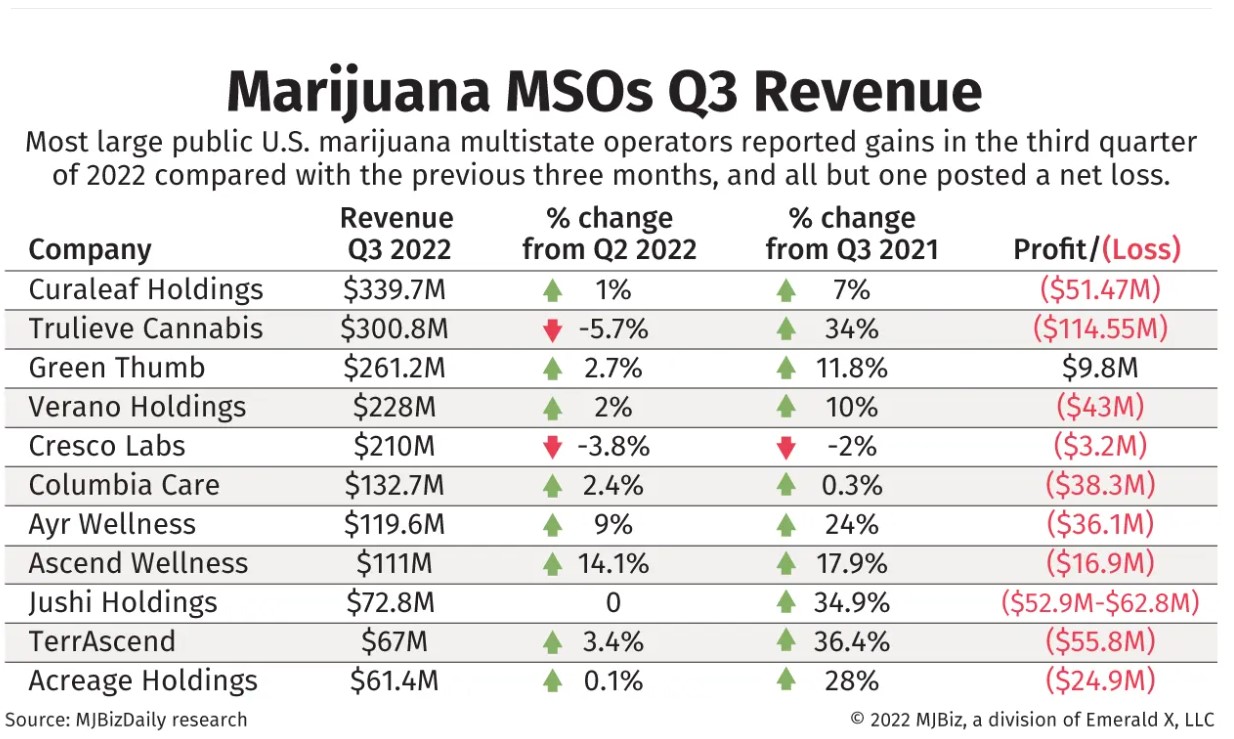
U.S. cannabis multistate operators weathered a storm of challenging economic factors through the third quarter of 2022, with most reporting modest to significant year-over-year revenue gains.
But only Chicago-based Green Thumb Industries reported a profit for that quarter, at $9.8 million.
That’s a 506% increase from a year ago, when Green Thumb reported a $21.6 million profit for the same period.
In a Nov. 14 newsletter, Frank Colombo, director of data analytics at New York-based Viridian Capital Advisors, attributed the industry’s challenges to:
- Price compression, which is affecting wholesale prices for flower and other products in more mature state markets.
- Inflation, which is eroding consumers’ buying power and increasing the cost of doing business.
- Delays to New York’s long-awaited adult-use cannabis market launch, which could be worth as much as $1 billion in its first year, according to the 2022 MJBiz Factbook.
- Ongoing difficulties in California’s regulated market, where legal operators are struggling with high taxes and a robust illicit market.
“Moreover, a true test of the recession/inflation resistance of the industry is at hand,” Colombo wrote.
“Already, basket sizes have been coming down in multiple markets as pressured consumers trade down to lower priced products.”
Still, Colombo noted, there’s a lot to look forward to in 2023.
“New Jersey has been a resounding success, and two big markets, Maryland and Missouri, legalized in the midterm election,” he wrote.
“Illinois sales are up 16% year-over-year ahead of new licenses coming online, and New York may yet get its act together.”
New Jersey reaps rewards
Indeed, the seven cannabis multistate operators that gained access to New Jersey’s new adult-use market, which launched in April, experienced revenue boosts.
They include Acreage Holdings, Ascend Wellness Holdings, Columbia Care, Curaleaf Holdings, Green Thumb, TerrAscend Corp. and Verano Holdings.
Massachusetts-based Curaleaf ranked highest in revenue for the quarter, at $339.7 million – a 7% year-over-year gain and a 1% sequential increase from the previous quarter – as it closed its acquisition of Tryke and its majority stake acquisition of Four20 Pharma.
New York-based Ascend Wellness reported strong results, despite an executive shuffle that sent one of co-founders and former CEO Abner Kurtin to the executive chair role after he was charged with battery last fall. The charge was later dropped.
In a Nov. 11 note to clients, Matt Bottomley, an analyst for Toronto-based Canacord Genuity, attributed the company’s 14% sequential revenue increase and 19.9% year-over-year increase to third-party wholesale sales, transitioning medical marijuana dispensaries to adult-use stores and new retail locations.
“Retail sales increased 9.6% quarter over quarter to $82.8 million, while net wholesale revenue grew 29.6% sequentially to $28.4 million, primarily driven by higher third-party sales in Illinois, New Jersey and Massachusetts,” he wrote.
New Jersey’s adult-use sales are expected to total about $2 billion by 2025, according to the 2022 MJBiz Factbook.
Hurricane Ian, other headwinds
Florida-based Trulieve Cannabis lost $114 million in the third quarter of 2022 but still had 34% year-over-year growth, reporting more than $300 million in revenue.
The company’s retail revenue decreased 5% sequentially, which the company attributed to the impacts of Hurricane Ian and lower net patient growth in its Florida medical marijuana market.
Arizona revenue declined because of increased pressure on retail prices and lower traffic coming into stores, according to Trulieve’s third-quarter investor presentation. But Pennsylvania revenue increased.
“As the company’s 750,000 square-foot Jefferson Park facility continues to ramp in mid-2023, we believe this will provide Trulieve with a meaningful cost and margin advantage versus its competitors,” Bottomley wrote, referring to Trulieve’s new indoor cultivation facility.
“Trulieve commented that given the macroeconomic headwinds, challenging consumer spending environment, increased promotional activity expected around the holiday season, and the impact from Hurricane Ian and Tropical Storm Nicole, it now believes it will achieve the low end of its full-year 2022 guidance of $1.25 (billion) to $1.3 billion in revenue and $415 (million) to $450 million in adjusted EBITDA.”
Chicago-headquartered Cresco Labs reported mixed results with $210 million in revenue for the quarter, a 2% decrease year-over-year and a 3.8% decline from the previous quarter.
“The decline was primarily attributable to ongoing price compression and increased competition on the wholesale front, which resulted in wholesale revenues declining approximately 2% sequentially from Q2/2022 to $93 million,” Canaccord Genuity analyst Derek Dley wrote in a Nov. 15 note to clients.
Analysts remain confident that Cresco’s acquisition of New York-based Columbia Care, which requires the divestiture of assets in Maryland and Ohio as well as a Florida license, is on track.
The deal also rests on approval from New York regulators of Sean ‘Diddy’ Combs’ acquisition of the companies’ retail and marijuana production assets in a deal valued up to $185 million.
“We think this meaningfully increases the probability that Cresco’s deal to acquire Columbia Care will close with no modifications,” Pablo Zuanic, managing director of New York-based equity analysis firm Cantor Fitzgerald, wrote in a Nov. 28 email to clients.
For its part, Columbia Care reported $132.7 million in revenue, a 2.4% sequential increase and a .3% increase year-over-year.
“Although the company continues to anticipate a challenging operating environment over the next 12-18 months, management is encouraged by the ongoing resilience it has seen throughout its markets.”
A California cannabis group has called for legislators to close loopholes in federal laws to avert a “public health disaster” caused by widely available delta-8 THC and other potentially intoxicating cannabinoid products it says are illegal and frequently adulterated.
In a recently released white paper, “Pandora’s Box: The Dangers of a National, Unregulated, Hemp-Derived Intoxicating Cannabinoid Market,” the California Cannabis Industry Association (CCIA) said Congress should establish a single federal regulatory framework that oversees both hemp- and cannabis-derived cannabinoid products for human consumption.
Unregulated sales
Alternatively, “absent a single federally regulated cannabinoid market . . ., the Farm Bill urgently needs to be amended to close the loophole allowing the unregulated sale of concentrated, intoxicating, and/or synthesized cannabinoids,” the paper urges. The next U.S. Farm Bill will be written in 2023 to take effect in 2024.
Lesser known than delta-9 THC most commonly derived from marijuana plants, delta-8 THC naturally occurs in marijuana and hemp but only in trace amounts. Producers, however, have been turning out products with higher concentrations of delta-8 THC by putting hemp-derived CBD through a synthetic process.
Amid the drastically diminished fortunes of the CBD sector, where demand did not reach rosy expectations and oversupply caused prices to plunge by as much as 90% over the past two years, producers have turned to delta-8 THC production. Some analysts have estimated that at least 75% of the current supply of CBD is going into the production of unregulated delta-8 products.
Legal uncertainty
Delta-8 proponents were bolstered by a court ruling last May which held that a strict reading of the 2018 Farm Bill’s definition of hemp “expressly applies to ‘all’ . . . downstream products so long as they do not cross the 0.3 percent threshold for delta-9 THC.” Advocates say that makes the delta-8 compound a legal derivative of legal hemp.
Regulators and even some hemp stakeholders have pushed back against delta-8, suggesting the 2018 Farm Bill, which legalized hemp federally, never intended it to be used for products that can be classified as psychoactive, and because delta-8 THC is not derived from the hemp plant in a natural manner.
Widespread problem
In the absence of federal rules, states all over the USA are grappling with delta-8 THC. Some states have outlawed the compound altogether while others are treating it under rules for products that carry delta-9 THC.
Noting that delta-8 products are not regulated, go uninspected, and are unapproved for human and animal consumption, the U.S. Food and Drug Administration (FDA) last May warned five companies over the illegal sale of products containing delta-8. A Virginia mother was indicted in November in the death of her four-year-old son which was attributed to over-ingestion of hemp-derived delta-8 THC from gummies.
Widely available
The strict definition of hemp in the current Farm Bill is “being exploited by ‘hemp’ product manufacturers to sell extremely potent, often chemically synthesized intoxicants that are more powerful than anything available in licensed cannabis dispensaries,” according to the paper, written by Tiffany Devitt, CCIA Board Vice President and chief of regulatory affairs at CannaCraft, a Santa Rosa-based marijuana producer.
“Intoxicating, unregulated hemp products are all too often rife with contaminants, inaccurately labeled, and brazenly marketed to children,” according to the white paper.
“Many of these so-called hemp THC and THC-like products are sold online and in convenience stores, gas stations, and smoke shops without age gates, testing standards, packaging and labeling requirements, marketing limitations, or even a proper understanding of their potential effects on consumers,” the paper observes. “It’s a public health disaster.”
The paper cites a number of studies that reported impurities in delta-8, and related dangers in vaping, including unlabeled adulterants, byproducts of chemical synthesis and heavy metals.
Call for enforcement
CCIA also called on California officials to enforce existing state laws that prohibit intoxicating cannabinoids in hemp products, whether naturally derived or synthetic.
The state should “immediately enforce prohibitions against selling intoxicating cannabinoids (whether “hemp-” or cannabis-derived) outside the regulated cannabis market where extensive consumer protections already exist,” the paper suggests.
In addition to delta-8, “approval of novel cannabinoids, like THC-O, THC-P, HHC and others, rightfully falls under the purview of the U.S. Food and Drug Administration,” the paper observes.
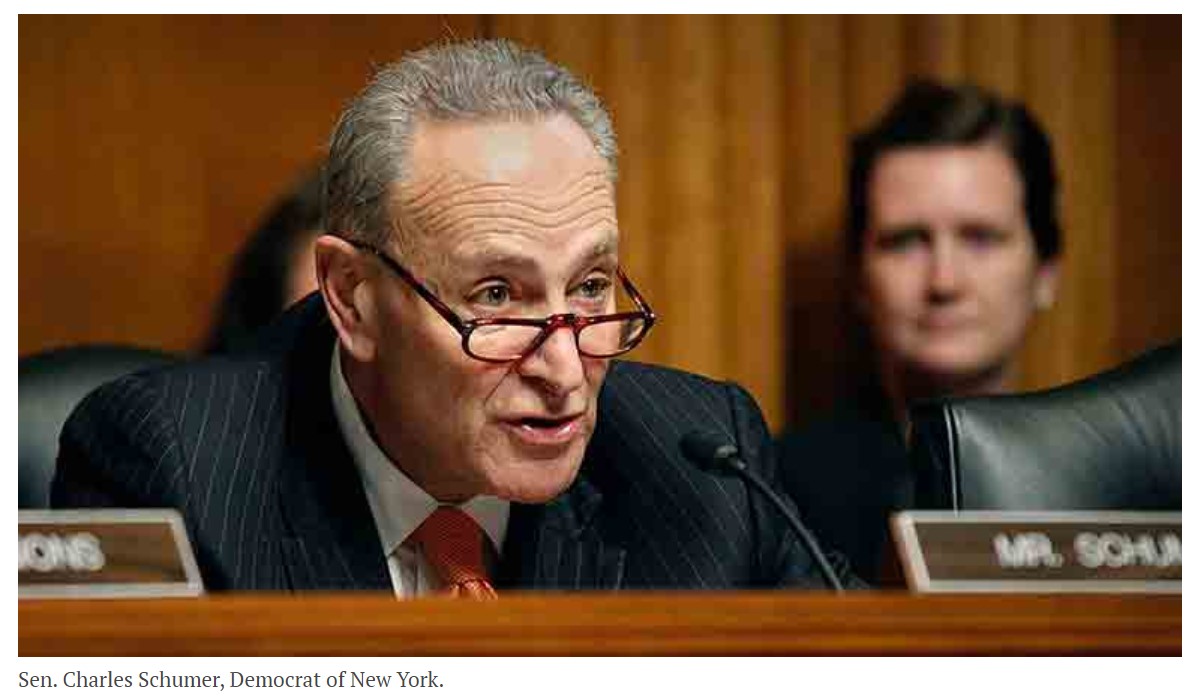
The U.S. Congress has failed to act on a banking bill that would have led the way to financial services for hemp and marijuana companies.
The bill, the Secure and Fair Enforcement (SAFE) Banking Act, will not be part of an omnibus spending package after Majority Leader Chuck Schumer, a Democrat from New York, didn’t call it to a vote in the Senate.
Passage was expected
While marijuana industry representatives had conceded that a broader measure on cannabis would not be passed by the current Congress, they had tipped the SAFE Act for passage.
The House of Representatives has seven times passed the banking measure, which would let banks provide financial services to hemp producers without more strict compliance standards set for the marijuana industry, most recently this past July.
Banks’ reluctance
The act, which addresses banking issues generally, includes language that would clear the way for hemp stakeholders’ to get loans, open bank accounts and use credit card services — all of which have been difficult for hemp firms to obtain despite full legalization of hemp brought on by the 2018 Farm Bill.
Under the Farm Bill, banks and payment processing companies already have the legal coverage they need to service industrial hemp companies, but many have been reluctant to do so.
Earlier deal failed
Banks want to serve hemp and marijuana producers, but say they need assurance from regulators that hemp is distinguishable from marijuana, the American Bankers Association has said.
Democrat lawmakers led by Schumer had hoped to tack the banking measure onto the annual defense spending bill earlier this year. But a deal for inclusion fell apart amid pushback by Senate Minority Leader Mitch McConnell, Kentucky, and Sen. Chuck Grassley, Iowa, both Republicans.
If the companies fully paid their federal tax bills, only one of the 10 would have more than 10 months worth of cash for operations.
Ten publicly traded multistate cannabis companies are carrying over half a billion dollars in federal tax debts, according to an analysis of financial filings by Green Market Report.
All told, multistate operators (MSOs) Acreage Holdings, Ascend Wellness, Ayr Wellness, Cresco Labs, Columbia Care, Curaleaf, Green Thumb Industries, TerrAscend, Trulieve and Verano Holdings owe the Internal Revenue Service an eye-popping $507,193,000, according to their second quarter financial reports.
Just two of the companies, Curaleaf and Verano, hold the bulk of the tax debt. Combined they owe the IRS $286 million.
Not only that, but if the companies were forced to fully pay their federal tax bills, only one of the 10 – Green Thumb Industries – would have more than 10 months worth of cash left with which to continue operating.
Verano Holdings would be financially underwater in a big way, with $161.4 million owed to the IRS compared with its $92.8 million cash on hand – meaning it owes 78% more in taxes than it had in cash at the end of its second quarter.
And it’s not clear when the companies plan on paying.
Creative Financing
Much, or perhaps all, of the tax debts have been deliberately not paid by companies so that the businesses can use the cash to fund operations or other plans, multiple sources said.
“Part of our capital allocation strategy is to lengthen our tax payment cadence,” Verano CEO George Archos explained to shareholders in an earnings call last month. “The strategy is not unique to Verano and has been utilized amongst other large U.S. companies. The cost of penalties and interest for this are significantly below the available cost of debt.”
Archos also noted that the company made a $37 million income tax payment in Q2, and that Verano has already paid $14 million in taxes for Q3.
“We continue to efficiently manage our income tax payable line and continue to manage as a cheap source of capital and generally keep about a trailing 12- to 18-month balance outstanding,” Archos said.
Still, the findings represent a troubling financial trend, first reported on by Seeking Alpha in May after first quarter financial reports were filed. And the trend likely extends to the broader industry, marijuana industry experts said, due to factors such as section 280E, the provision in the federal tax code which prohibits standard business deductions for those in cannabis.
That financial squeeze – which often results in a real-world tax rate of up 80%-90% for marijuana businesses and little to no profit – has led companies desperate for cash to undertake creative financing for expansion or even just to continue daily operations.
Delaying tax payments as a financing strategy can be a major risk in both the short and long term, several industry experts warned.
“I totally get it, and at the same time, I think it’s a very risky strategy, because it’s like Russian roulette,” said Roxane Peyser, a partner at Denver-based Fortis Law, who has worked with legal marijuana companies for over a decade.
“How are you going to justify that if you do wind up pulling the trigger that has the bullet in the chamber?”
Morgan Paxhia, co-founder at San Francisco-based Poseidon Investment Management, said he’s got “concerns” about the proliferation of that type of financing strategy, because he thinks it’s a high-wire act that’s tough to pull off.
“Intentionally now running up 280E tax debt as a means of conserving cash … ideally, that’s your last lever, or if you are going to pull that lever, it’s got to be very well-managed, tightly managed, there’s got to be a clear plan and a high probability of executing against it. Otherwise, I think you do get upside down,” Paxhia said.
Paxhia said the range of credit interests from private lenders these days is running about 12%-14% for those with good credit and upwards of 16%-20% for those whose credit is less than stellar. By contrast, IRS interest for deferred taxes is only 3% plus the prime short-term federal interest rate, which as of Monday was 6.25%, for a total of 9.25%.
That makes the IRS interest rates far cheaper than private capital, Paxhia pointed out.
“That’s why it’s interesting to some of these folks. Not that we’re justifying that,” Paxhia said.
The problem with the strategy of simply not paying the IRS is that the bill will eventually come due, perhaps as soon as next spring, although just when federal tax regulators will force the issue is the big question.
When that happens, the fallout could be catastrophic, said one tax attorney who requested anonymity due to his close work with several MSOs.
“They have to pay their taxes sooner or later,” the attorney said. “They’re going to fail, because so many of these managers are burying their heads in the sand, and what they should be doing is coming to grips with this and taking action. What they’re doing now is the worst of all possible worlds. They’re saying, ‘We admit we owe this tax, and we’re just not going to pay it.’
“That’s like alcoholic behavior. That’s like not opening your mail.”
The Numbers
The chart below provides details on each company’s financial health, according to Green Market Report’s analysis of the Q2 financial records.
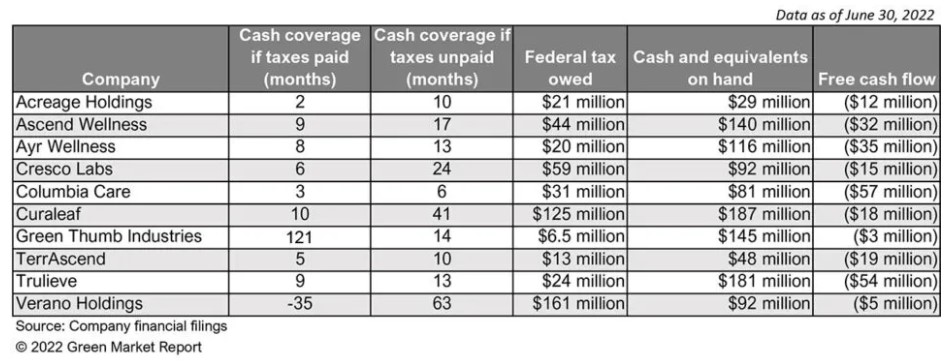
Interminable juggling act?
Part of the problem, noted Peyser, is none of the MSO’s are actually profitable; every one of them posted multimillion-dollar cash flow losses in the second quarter, which at this point is an industry standard.
“It stems from the fact that, if you don’t have enough cash flow, you’re robbing Peter to pay Paul,” Peyser said. “So where do you get the money? How can you do that? What can you juggle?”
Not paying taxes is part of the juggling act, Peyser said. Which raises the question, how long will the IRS wait before the agency will decide it’s waited long enough?
That’s about as clear as mud, said Nick Richards, a former IRS tax attorney who is now a partner at Greenspoon Marder in Denver, but he added that the agency won’t wait forever.
What the IRS will most likely do, he said, is work with companies to get them onto payment plans or the like, akin to the deal struck by Statehouse Holdings this past summer.
“If you have the money to pay the taxes, your options are really to pay the tax,” Richards said. “The IRS isn’t going to take all your money. They’ll let you into a payment plan. That’s what they did for (Statehouse).”
But, the IRS also won’t let companies keep not pushing out their tax bills in perpetuity, he said, pointing to Curaleaf’s $125 million tax debt and its $187 million in the bank.
“(The IRS) is going to want them to get onto a payment plan” if Curaleaf or others aren’t already making some payments regularly, Richards said. “If Curaleaf can identify why it’s necessary for their ongoing business, then the IRS will cooperate with that, so long as it’s being used to generate income-producing assets.”
The longer-term question, Richards and others said, is whether the MSOs will eventually start turning a real profit. If they don’t, and the income tax bills keep piling up, the IRS may eventually lose patience.
“Year after year after year of losses becomes a problem in working with the IRS. The IRS is going to say, why save that business?” Richards said.
Paxhia noted that each company has to be evaluated individually, based on more than just cash flow or tax debts.
He pointed to Green Thumb Industries as a leader among MSOs for its low tax debt and high cash balance ratio, and said the company’s relatively cautious approach to expansion thus far is serving it well.
Even Verano, Paxhia said, could likely “sell off a ton of assets” if the company really needed more cash with which to pay its debts, so he doesn’t see the business as being in immediate danger, even with the relative lack of cash and its sky-high tax tab.
“It really kind of runs the gamut,” Paxhia said.
There are other factors that are worth taking into account, however, Paxhia and others noted, including rising federal interest rates and an upcoming hiring spree at the IRS, with a macro-level plan to increase audits and federal revenue.
There’s also an industry-wide sales slowdown that’s happening, following the COVID bump that much of the cannabis sector enjoyed for over a year.
Interest rates going up has already made capital even more scarce and expensive, and the new IRS agents could in part be targeted at cannabis companies, since the IRS knows the marijuana sector is a particularly lucrative one for them.
Which means, according to the relatively optimistic Paxhia, that high tax debts are “going to be a problem” for at least some of the major MSOs.
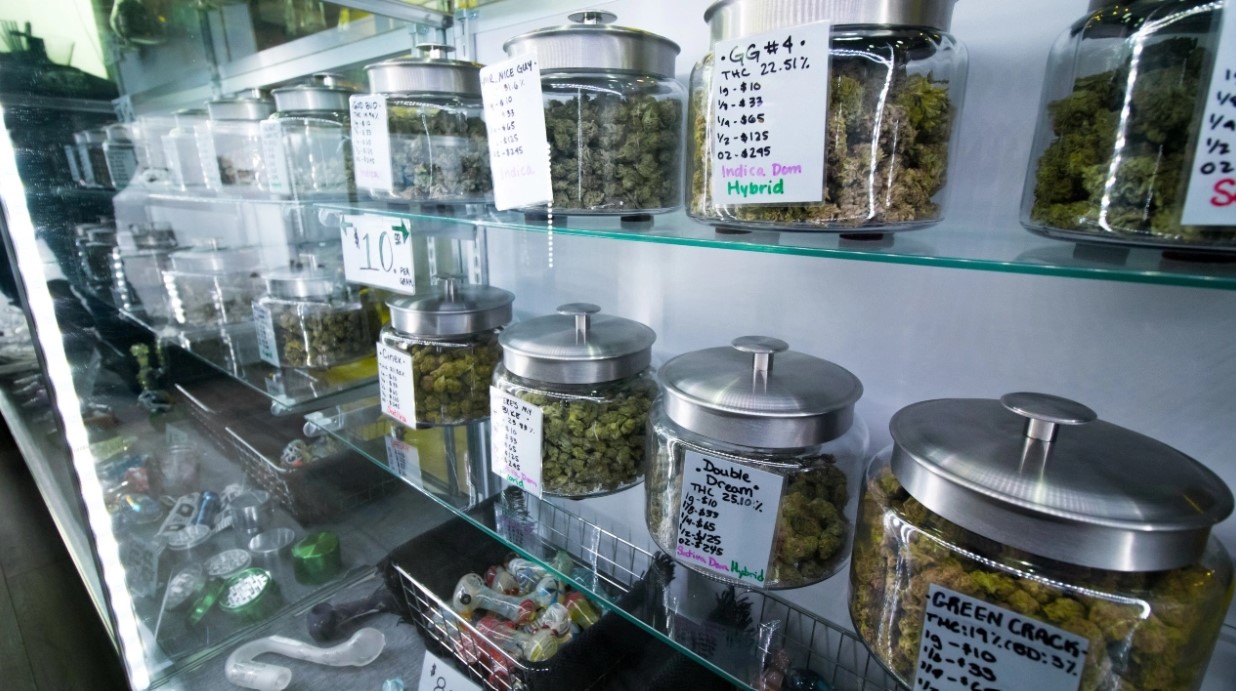
Michigan is the latest state where marijuana retailers are charging manufacturers and brands for premium shelf or display space – a practice expected to gain prominence nationwide as new recreational markets open and others expand.
Local advocates contend the practice of charging extra fees for coveted space is simply a cost of doing business and both partners benefit, particularly in Michigan’s close-knit, heavily vertically integrated industry.
But opponents counter that so-called slotting fees are just another economic squeeze, a pay-to-play ploy that could price out small operators, especially minority-owned companies and social equity licensees.
Slotting fees, common for decades in traditional retail, are a relatively new trend in cannabis.
California and Nevada retailers started implementing them within the past few years.
“As much as I hate to say it, this is a normalization of cannabis in the mainstream retail market model,” said George Sadler, co-owner of Gelato, a San Diego brand that sells cannabis products in Michigan.
“Grocery stores and retail outlets have established this practice for years. It is unfortunate, but it is a reality.”
Larger chains driving trend
Troy, Michigan-headquartered Cloud Cannabis Co. is among the companies weighing far more slotting-fee proposals these days from local retailers interested in offering the operator’s wholesale Mitten Extracts and Wonderbrett brands.
All the pitches are from larger state retailers – those with more than six locations – that want to lock in these fees across their retail network, according to Nic Shafer, vice president and director of marketing.
“Zero percent of them are mom-and-pop shops,” he said. “It’s all the larger chains.”
The company has slotting fee agreements at more than 25 outlets.
Deals are structured differently at nearly every store.
Flat monthly fees for premium placements, minor store renovations or build-outs in exchange for floor space as well as in-kind product and service tradeoffs are all part of the mix.
Most slotting fee contracts in Michigan, typically for three or six months, cost around $3,000 on the low end but can run as high as $25,000, according to industry sources.
Shafer said he has no problem paying slotting fees, which are typically on the lower end of that spectrum.
“These are all premium partner stores that purchase large orders on a monthly basis,” he said. “We’re working with them.”
Retailers ‘have leverage’
C3, which operates 11 stores in Michigan, was one of several retailers who told MJBizDaily it doesn’t charge slotting fees.
Neither does Cloud Cannabis at its dispensaries or Lume Cannabis, a major retail chain with more than two dozen locations across the state.
Troy-based Lume declined to comment beyond that, joining several other state operators who wouldn’t discuss the topic with MJBizDaily.
C3 co-founder and President Vishal Rungta doesn’t regard slotting fees as a sign of industry maturation.
He views them as a leverage play.
“Retailers know they have leverage,” he said. “Producers are desperate, and supply is high in the market.”
Wholesale recreational marijuana prices in Michigan have plummeted this year, a consequence of oversaturation as more cultivators enter a market with uncapped business licenses.
That has led to big price cuts on consumer products and fierce competition among brands and manufacturers to capture the attention of buyers in-store.
Industry chatter has also picked up recently regarding under-the-table slotting-fee deals, where operators pay cash off the books for store access.
“I don’t think there’s necessarily an even playing field in that regard,” Rungta said.
Competing for shelf space
Exclusive Brands, a vertically integrated cannabis company based in Ann Arbor, operates four dispensaries in the state.
None of them charge slotting fees, instead opting for a more traditional sales model.
“We bring a brand in – if it sells, we keep it on the shelves,” Chief Development Officer Narmin Jarrous said.
“If it doesn’t, we kind of phase it out. That’s worked well for us.”
Jarrous, who also serves as the executive director of Cannabis Business Association of Michigan, expects more retailers to start charging slotting fees, and she’s concerned smaller and minority-owned companies won’t be able to compete for shelf space.
“There are a lot of women-owned brands, people of color-owned brands, brands that were built in Black and brown communities, these communities that have been disproportionately impacted by marijuana prohibition,” she said.
“I hope they just take that into consideration. And they make exceptions in some cases.”
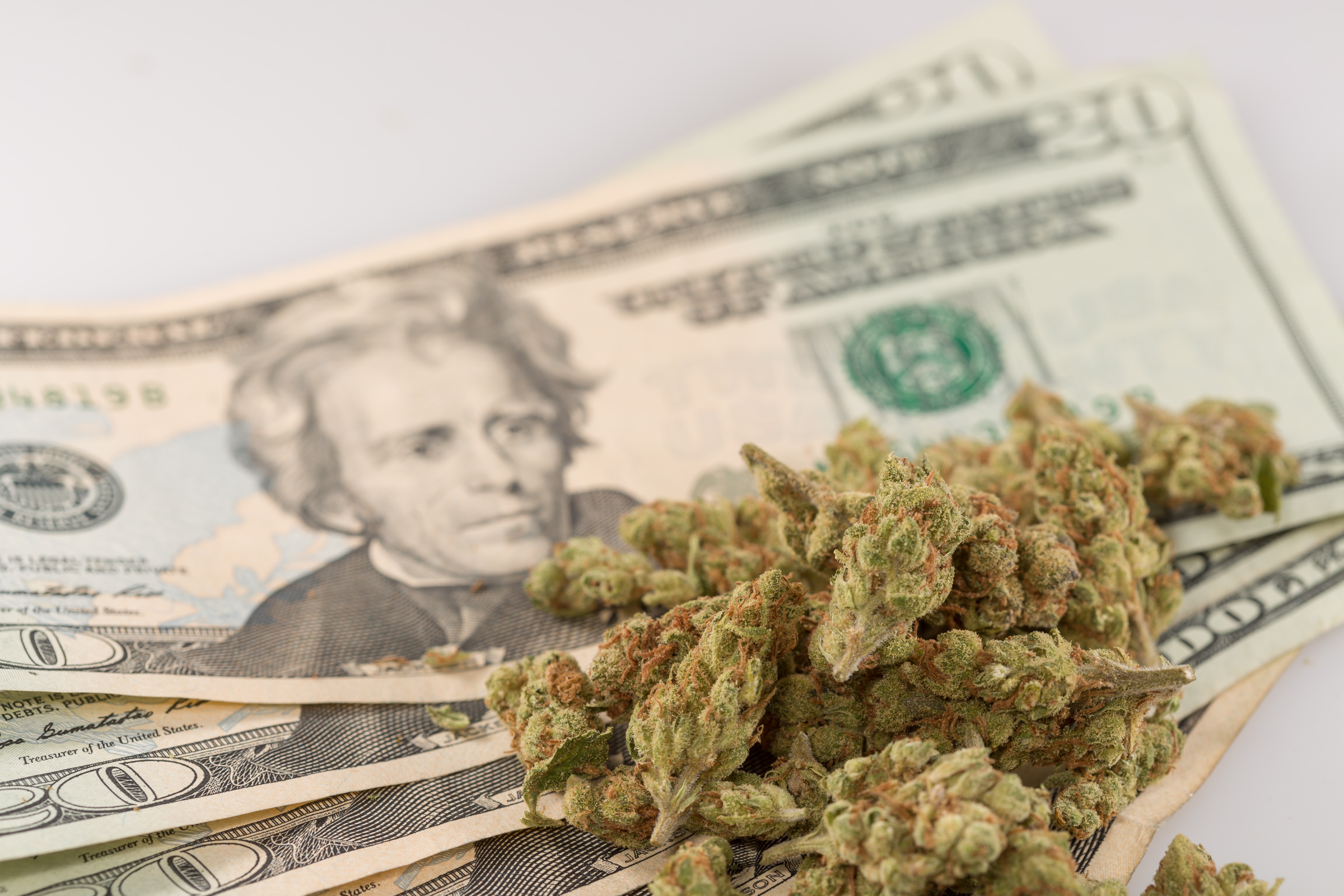
For the third time in 2022, Michigan saw a record-breaking month of marijuana sales, reaching $212 million in September, state data shows.
The state saw $195,349,995 worth of adult-use marijuana purchases and $16,629,957 in medical cannabis sales last month. That total is about $2 million greater than the previous record in July and $17 million more than the earlier April record.
As has been the ongoing trend, most of the marijuana purchases for both medical and recreational use were for flower products, followed by vape cartridges.
The data also shows a continuation of a sales trend in Michigan’s marijuana market, with medical cannabis purchases dipping and adult-use sales increasing. The first recreational shops opened in Michigan in December 2019.
Meanwhile, Michigan regulators recently announced that they are issuing another round of grants to support research into the therapeutic benefits of marijuana for military veterans, using tax dollars the state generated from adult-use cannabis sales.
This time around, Cannabis Regulatory Agency (CRA) announced that it has recommended awarding $20 million in grants to two universities as part of the Veteran Marijuana Research (VMR) Grant Program.
Michigan officials also announced in March that the state would be distributing nearly $150 million in marijuana tax revenue, divided between localities, public schools and a transportation fund.
The state Treasury Department said that the funding—made possible from tax revenue generated from the state’s adult-use cannabis program—includes $42.2 million for 62 cities, 15 villages, 33 townships and 53 counties.
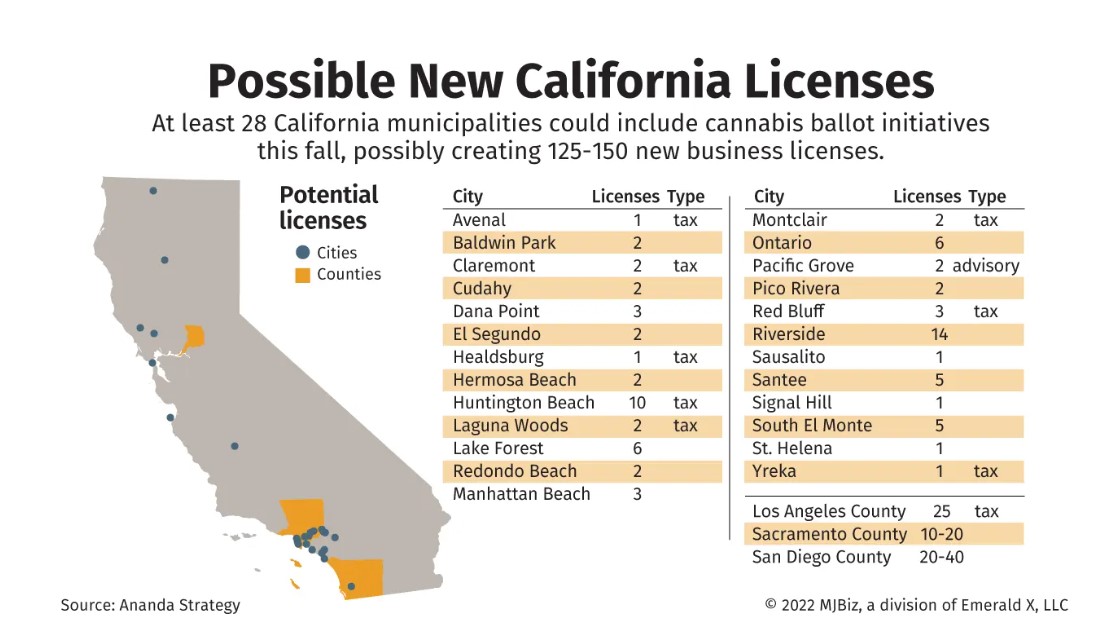
More than two dozen California cities and counties could establish new recreational marijuana markets through ballot measures in November, creating up to 150 retail licenses and countless other business opportunities for plant-touching and ancillary companies.
All in, at least 28 municipalities are in line to include some cannabis ballot initiatives this fall, the largest cohort since California started regulating adult use in 2018, according to MJBizDaily research.
“These upcoming ballot measures are encouraging,” said Dirk Voss, director of compliance and government affairs for Zen Cannabis, which sells edibles and other THC- and CBD-infused products in California and other states.
“If passed, it will open up additional operational dispensaries throughout the state if those cities move forward and actually license dispensaries at the local level.”
The majority of referendums will ask voters to approve or prohibit marijuana businesses, particularly retail.
A handful of municipalities, including Huntington Beach in Orange County, Healdsburg in Sonoma County and Avenal in the Central Valley, will address local prohibition through marijuana business tax measures that would essentially pave the way for regulated markets – provided they’re approved.
The voter-led ballot drives would eventually help minimize wide gaps in consumer accessibility, as a solid majority of cities and counties across the state still ban commercial marijuana operations.
“This could lead to 125 to 150 new retail licenses, which is significant,” said Hirsh Jain, founder of Los Angeles-based cannabis consultancy Ananda Strategy, which crunched the numbers.
Taking it to the ballot
Most of the ballot initiatives are centered near dense population centers in Southern California, particularly near L.A. and San Diego.
But some extend far north, including Red Bluff, where voters will decide whether to permit the first recreational marijuana businesses in historically conservative Tehama County.
If cannabis tax ballot measures pass as expected in the state’s most populous counties:
- Los Angeles County could approve as many as 25 stores.
- Sacramento County could OK 10-20 marijuana stores.
- San Diego County could license 20-40 retailers.
Those victories alone would add purchasing options for more than 15 million residents in the three combined counties.
The vast majority of retailers there are located in the counties’ namesake cities.
Elliot Lewis, the CEO of Catalyst Cannabis Co., is trying to change that.
The Long Beach-based retailer, which operates 13 outlets in the L.A. market, has bankrolled more than $500,000 with industry partners to fund signature and ballot campaigns this fall in several cities in the South Bay, including Redondo Beach, Manhattan Beach, Hermosa Beach and El Segundo, located only a few miles west of Los Angeles International Airport.
“When cities see us circulating something, they’re going to take us much more seriously,” Lewis said. “We don’t have to take everyone to the ballot.
“We want to peacefully negotiate with cities on some resolution.”
Other cities expected to have cannabis ballot measures include:
- Dana Point.
- Lake Forest.
- Ontario.
- Pacific Grove.
- Riverside.
- Sausalito.
A case study
Ballot initiatives have spurred some California cities to establish marijuana ordinances before putting the question to voters, assuming more local control of the issue rather than relying on the will of cannabis advocates or business interests.
Special-interest groups often write ballot measures and, in effect, policy.
El Monte, an East Los Angeles suburb, is often cited as a successful template by retail expansion advocates.
A voter-led initiative to allow marijuana businesses was set to appear on the El Monte ballot in March 2020, but the City Council instead submitted its own marijuana tax referendum, which voters ultimately approved.
With three marijuana stores having opened in the past year, El Monte has already exceeded its marijuana tax revenue projections by more than $100,000, thanks in part to the city’s lower cannabis tax rates.
Another three retailers are slated to open there in the next six months.
“By this time next year, El Monte’s cannabis industry should generate more than $50 million in annual sales,” Jain said. “Pretty solid for the 64th-biggest city in California.”
Canvassing cannabis deserts
According to the state’s Department of Cannabis Control, only 31% of 539 cities and counties in the world’s largest marketplace allow cannabis retail operations.
Licensing data through Aug. 29 lists less than 1,100 dispensaries in the entire state and roughly 470 delivery providers, the vast majority clustered in populous cities.
Retail-access deserts, which span more than 100 miles in some rural counties, and congested traffic routes in others – such as Orange County, where only one of 34 cities has operating marijuana stores – have led to a cascade of problems for the industry beyond accessibility.
A glut of marijuana product – a reason why the underground market flourishes – has plagued growers and distributors for more than a year, as thousands of pounds never make it to the legal market every harvest.
Depressed wholesale prices haven’t rebounded as expected, prompting many stakeholders to predict a mass exodus of businesses if conditions persist much longer.
Many retailers told MJBizDaily they’re struggling to make ends meet since they must keep product prices low to compete.
More retail expansion is desperately needed and could alleviate some of these bottlenecks, according to Voss.
“The state is vastly underserved,” he said.
Slow-moving gains
Despite the promise of widespread retail expansion after the midterm elections, many of the gains and ancillary benefits likely won’t be realized for a few years down the road in California, given the state’s high capital costs for entry, dual state and local licensing requirements as well as other regulatory hurdles.
Costa Mesa is a prime example. Voters in the Orange County city in November 2020 approved a marijuana retail tax measure.
Nearly two years later, a store still hasn’t opened.
The city’s planning commission did in June approve conditional-use permits for two retail storefronts.
“It often still takes years for these stores to come online,” Jain said. “The local initiatives that pass here in November 2022 won’t have an immediate impact, but we will feel their impact in 2024.
“It’s a slow unfolding process across the state, but it starts to add up.”
Michigan’s adult-use cannabis market presented a win-win for retailers and shoppers alike in August. For cultivators and wholesalers? Maybe not so much.
Not only did last month feature a record of $189.4 million in adult-use sales statewide, but customer wallets benefitted from an all-time low price of $116.84 per ounce on average for dried flower, according to data released Sept. 14 from the state’s Cannabis Regulatory Agency (CRA).
Through the first eight months of 2022, licensed adult-use retailers recorded $1.25 billion in statewide sales, representing a 56% increase from the same eight-month period last year.
An uptick in demand has been the main driver of that sales growth. For instance, in August 2022, licensed retailers sold more than 49,000 pounds of dried flower to adult-use customers statewide, representing a 186% increase from the 17,150 pounds sold in August 2021.
So, despite the average price per ounce at retail dropping more than 47% from August 2021 to August 2022, overall sales figures have increased by nearly 51% because more products are being moved across the counter and into the bags of those 21 and older.
But with prices dipping to record lows, smaller growers told state regulators during the CRA’s quarterly meeting Sept. 14 in Lansing that they worry larger operators are in a “race to the bottom,” which is making it more and more difficult to compete for certain industry players, MLive.com reported.
One of the complaints from commenters at the meeting was in regard to special “excess grower” licenses, which allow bigger businesses to exceed a 10,000-plant limit with an extra 2,000 plants. At the end of August, there were 125 active excess grower licenses held by 25 businesses that cumulatively were able to grow a total of 250,000 extra plants at one time, according to CRA’s monthly report.
Several commenters at the meeting called for a licensing moratorium on grow licenses in the 3-year-old market, including George Lynch, the owner of Simplicity Farms, a start-up in Niles, Mich., focused on small-batch quality cannabis from a 30,000-square-foot facility.
“It’s a race to the bottom,” Lynch said at the meeting. “There’s no end to it that we can see. It looks like it’s just going to get cheaper and cheaper and more and more flower every day.”
But commenters neglected to recognize that the total flower supply in the statewide inventory has actually decreased slightly in the past three months amidst the demand hikes at retail, according to data from CRA’s monthly reports.
And the increase in demand is not just for flower.
Licensed adult-use retailers sold nearly 4,800 pounds of vape cartridges—the second-biggest sales category in the state—in August 2022, representing a 173% increase from the 1,756 pounds sold in August 2021.
Also, dispensary operators sold nearly 210,000 pounds of infused edibles to adult-use customers in August 2022, representing an 82% increase from the 115,000 pounds sold in August 2021.
While Michigan is a newer adult-use market—with commercial sales launching in Dec. 2019—it has been well established in the space, as it was the 13th state to legalize medical cannabis after voters passed the Medical Marijuana Act in November 2008.
Ashley Hubbard, the director of cultivation of a fully aeroponic facility for Rair Systems, a vertically integrated Michigan operator, took time to dive into the make-up of the state’s consumer market during a recent webinar hosted by Cannabis Business Times.
“Being in a state that has been so well-established on the medical side, as well as being about three years in, four years into the adult use, you see two ends to the spectrum,” she said. “With that experienced style consumer, they are looking for specific things: the newest product lines and things that are maybe a little bit more concentrate-based or certain terpene profiles [or] specific products.
“While you have people that are new to the industry, you know, freshly legalized, you see a lot of consumers that are interested in entry-level things. So, we try to ensure that we have that full spectrum covered for anybody and what they might be looking for. I would say that that was something very unique here. I feel like you have a wide diversity of user experience.”
While that consumer diversity may (or may not) be attributing to the recent demand growth in the state, cannabis companies can take various approaches to increase retention and attract new clientele to their dispensaries, from creating a positive customer experience to product exclusivity and other marketing strategies.
At Rair, Hubbard said the key is keeping things “fresh.”
“We want to stay fresh in the industry but also understanding that as a grower and as a cultivation facility, you have to have specific timelines that you’re working on,” she said. “We’re working with living organisms. If you want to release a new strain, you’re looking at a six-plus-month timeline. So, if you’re trying to stay ahead of the game, you almost have to be predictive in what the next consumer desire is going to be, which sometimes you’re going to make it, and sometimes you’re going to have a miss.”
Predicting customer desires in 2022 has been a slam dunk at Michigan retailers based on recent buying trends.
But just because statewide sales figures are increasing year-over-year in newer adult-use markets like Michigan, Massachusetts and Illinois, doesn’t necessarily mean individual businesses are increasing their revenues. New store openings by competitors, among many other economic factors, impact that bottom line.
As of Aug. 31, 2022, there were 555 active retailer licensees in Michigan, 106 more than at the end of January 2022. That means retailers averaged roughly $341,000 in sales per dispensary statewide in August compared to roughly $277,500 in sales per dispensary in January.
Those increased run rates indicate new retail entrants haven’t necessarily created an overcrowded marketplace, but finding the balance between supply and demand doesn’t always go so smooth without the right licensing structure in place.
Behind the scenes in Michigan, the overall supply of cannabis flower—including at grow facilities, retailers and processors—hasn’t aggregated to exceed demand on a consistent month-over-month basis in 2022.
At the conclusion of February 2022, for example, the state flower supply included roughly 61,150 pounds at cultivation sites, 44,250 pounds at retail, 81,700 pounds at processor facilities and 133,900 pounds of fresh frozen flower at processor sites. The total supply equaled roughly 321,000 pounds.
That total flower supply rose to roughly 347,400 pounds in May, but then decreased slightly to 313,600 pounds in July and 313,100 pounds in August, according to CRA inventory data.
Based on current demand from August, there’s a healthy six-month supply in the state.
Michigan cannabis sales gained 12% compared to June with one extra day and increased 23% year-over-year to a record $209.9 million in July:
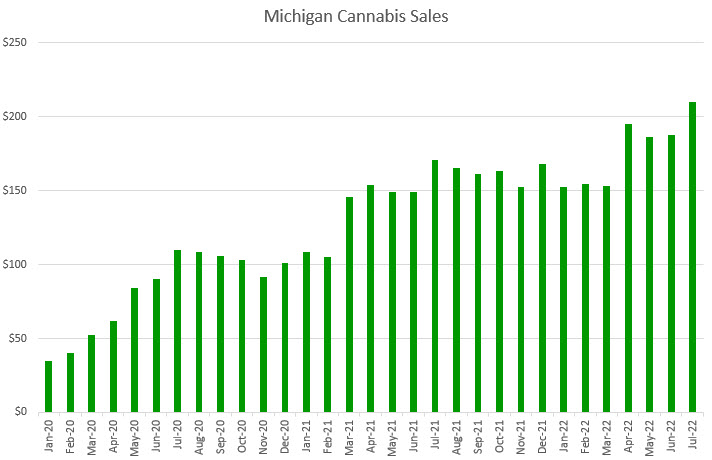
The Michigan Marijuana Regulatory Agency breaks out sales by medical and adult-use, with medical sales falling 50.6% from a year ago to $21.1 million, down 2% sequentially, and adult-use sales expanding 47.1% year-over-year to $188.8 million, up 13.8% sequentially:
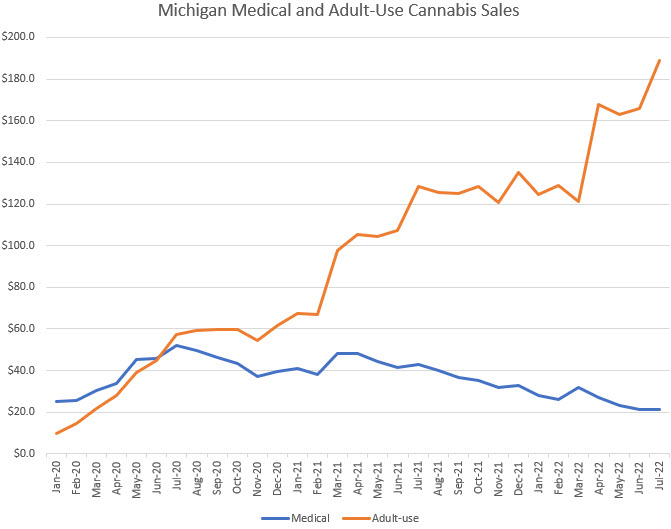
The state breaks out sales by category and provides pricing detail by category, for both medical and adult-use:
Medical Cannabis
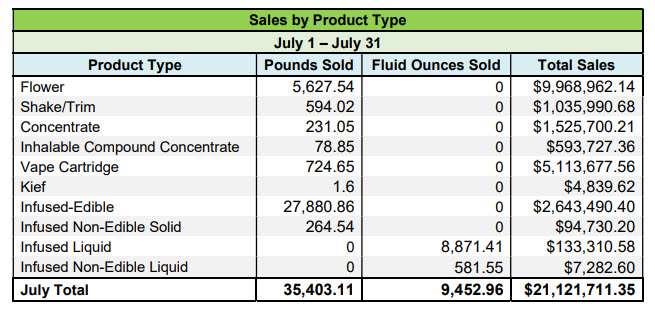
Adult-Use Cannabis
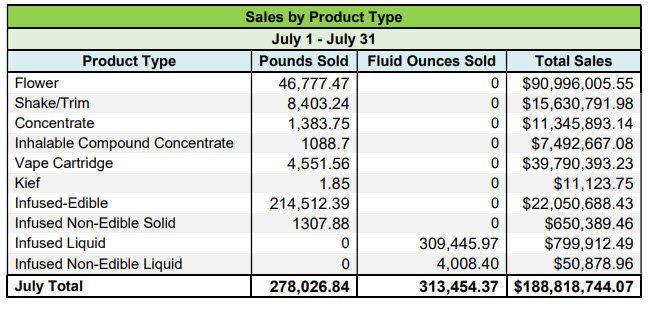
As supply continues to expand, flower pricing for adult-use has seen a dramatic decline. In July, the average price of $1945per pound rose 34% sequentially but fell 44% from a year ago:
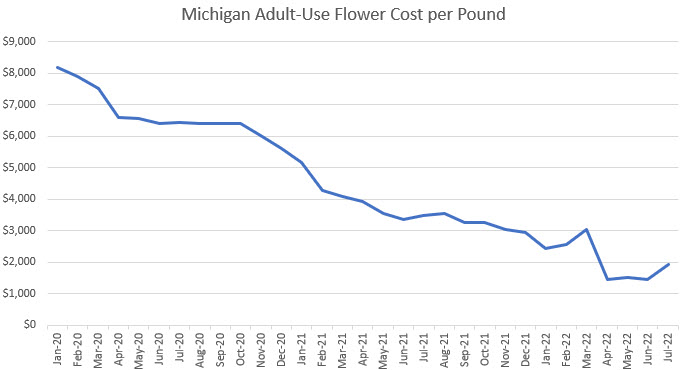
Michigan cannabis sales expanded 82.1% in 2021 to $1.79 billion and are up 26.2% thus far in 2022 at $1.24 billion. The program should continue to expand ahead as supply becomes more available and as distribution expands.
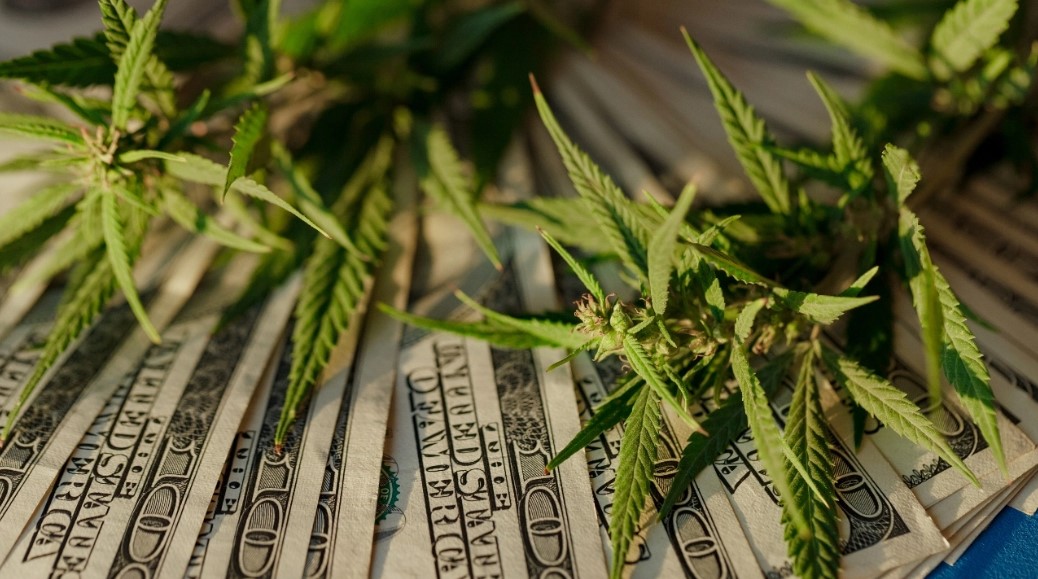
Prices of wholesale recreational marijuana in Michigan are now as low, or lower, than those in older adult-use states – underscoring how new markets are ramping up more quickly and, in some cases, becoming glutted.
Industry insiders say cannabis flower in Michigan is readily available for less than $1,000 a pound on the wholesale market – and often for much less – because of oversaturation as more and more cultivation companies come online in a state with no limit on business licenses.
Connie Maxim-Sparrow, a cannabis consultant and marijuana business license holder based in Muskegon, Michigan, characterized the state’s current market conditions as “unstable” – in particular, cannabis growers are spending at least $800 to grow a pound of flower and getting only $600 for it on the wholesale market.
According to Maxim-Sparrow, a year ago a midgrade pound of indoor-grown wholesale flower that tested at around 20% THC potency would sell for $1,800-$2,200.
Now, that same grower is lucky to get $600 a pound, and she’s heard of some selling for as low as $300.
The dynamics playing out in Michigan could offer a harbinger of what’s to come in other new markets.
In particular: As more multistate operators learn how to quickly set up shop in new regions with many producers, the pace of a newly legalized state’s market hitting an oversaturation point is speeding up.
This is more likely to happen in states without licenses caps or that have many growers – unlike limited-license markets that seem more common on the East Coast.
Michigan began marijuana sales at the end of 2019, and the wholesale market prices now more closely resemble those in older markets such as Colorado or Oregon, where wholesale prices have been falling for a year or more.
Colorado’s adult-use sales launched in January 2014, while Oregon’s market launched in October 2015.
Both markets took longer than Michigan’s to experience product saturation and falling prices.
Survival tactics
To survive, cannabis companies across Michigan are tightening their belts, relying on vertical integration and trying to build brand recognition to be more competitive.
Others are limiting their expansion plans or selling out as a wave of consolidation sweeps through the state’s industry.
A few Michigan marijuana retailers have downsized, including major retail chain Lume Cannabis, which closed four of its roughly 30 stores earlier this month.
Meanwhile, Michigan regulators in March implemented new rules, including lower application fees and the removal of licensing tiers, that will further open up the market.
“Everybody’s panicking,” Maxim-Sparrow said.
“Some of us knew this was coming – others are getting caught off guard by the oversupply issue.”
Any cannabis company executive who has been watching what has happened in other mature marijuana market with relatively unlimited licensing, including Colorado and Oregon, should have seen the market headed in this direction, industry insiders aid.
“We’ve seen this movie before,” said Tyson Macdonald, adviser to and former chief financial officer of Cloud Cannabis Co., based in Troy, Michigan.
“It is definitely happening with an accelerated pace in Michigan.”
Macdonald partially attributes that to a regulatory structure that allows for stacking of cultivation licenses, which has created very large facilities, many of which came online around the same time.
Not limiting licensing also sped up the situation.
Cannabis businesses executives “should have absolutely been aware that this market was going in this direction when there was not a single cap on a cultivation or processing license,” Maxim-Sparrow said.
The pricing situation
Over the past year and half, the state has seen a “ton of new capacity come online,” said Ankur Rungta, co-founder and CEO of C3 Industries, a vertically integrated Michigan marijuana company that also has operations in Massachusetts, Missouri and Oregon.
Rungta, who started out in the cannabis industry with a business in Oregon, said he saw a similar market drop there with overproduction in 2017 and again in 2018.
“Our first market was Oregon, so if anybody should have seen it coming, it was us,” he said.
Yet, Rungta said, the speed of how quickly the Michigan market has become saturated has taken him by surprise.
“We’re definitely getting into a fully supplied or even oversupplied marketplace,” he added.
“That’s definitely putting a lot of pressure on the wholesale market. People are buying the same amount of cannabis; it just costs half of what it used to cost before.”
That’s before the coming fall harvest of outdoor-grown flower hits the market.
“A lot of people are looking at this fall and saying, ‘What’s going to happen?'” Rungta said. “I don’t know that we’ve hit the bottom, to be completely honest with you.”
Macdonald said retailers and manufacturers can buy anything they need for less than $1,000 a pound for wholesale flower.
At Michigan stores, ounces of flower sell for as low as $59-$99, according to Macdonald.
“And a lot of that at the $79-$99 price point, it tests pretty well,” he said. “It’s not terrible product.”
Access isn’t the issue
Some municipalities in Michigan have opted out of allowing marijuana retail stores.
One major area that has yet to open a recreational cannabis store is metro Detroit.
The city finally began accepting license applications for adult-use marijuana businesses on April 20.
That doesn’t necessarily mean there’s a question of consumer access – despite many municipalities opting out of legal cannabis sales.
Maxim-Sparrow said most customers probably must drive only half an hour at most to find a store.
“If you look at a map of Michigan, there’s very few areas that don’t have access,” Rungta said.
Cities such as Ann Arbor are glutted with retail stores, said Mahja Sulemanjee-Bortocek, CEO and founder of High Haven, which owns cannabis business licenses in Bay City, Michigan.
She would like to see municipalities show a better understanding of the economics of cannabis before licensing too many stores in one place.
“They look at it as a revenue stream for them through taxes, which it certainly is,” Sulemanjee-Bortocek said.
But the towns and cities will lose that revenue stream if the retailers can’t turn a profit and stay open, she added.
“It’s a short win for them. Not a long-term situation,” Sulemanjee-Bortocek said.
Turning to vertical integration
Some companies are banding together to increase their brand power through collaborations and white labeling.
Others are trying to become vertically integrated but are running out of capital as they try to build out their retail or cultivation businesses.
Rungta said that a vertically integrated business structure is becoming more important, so a company can have a “hedge or cushion against some of the wholesale volatility that’s out there.”
He expects more businesses will head in that direction over time.
His strategy is to both move a “sizable chunk” of business through company-owned retail stores while also selling on the wholesale market.
The successful companies are those who saw this coming and built their business model around current pricing, not when the market opened and prices were much higher.
Rungta said the companies that will survive have a clear strategy such as offering a value product or a premium product with a business structured accordingly and a reasonable margin to support their operations.
By “reasonable,” he said a 40% gross margin is a good baseline.
“Those people are having success and, in some cases, continuing to even grab market share,” he said.
But, Rungta said, the branding and quality need to match the product for it to work.
As this all plays out, expect to see more consolidation as business are swallowed up by larger ones and some even go under. The amount of capital a business has could be the deciding factor.
“In this environment, it’s challenging for everybody,” Rungta said. “But it’s most challenging for the smaller businesses.”
MJ Biz Daily - Michigan Wholesale Marijuana Flower Prices Plummet
Michigan cannabis sales gained 0.5% compared to May despite having one less day and increased 26% year-over-year to $187.4 million in June:
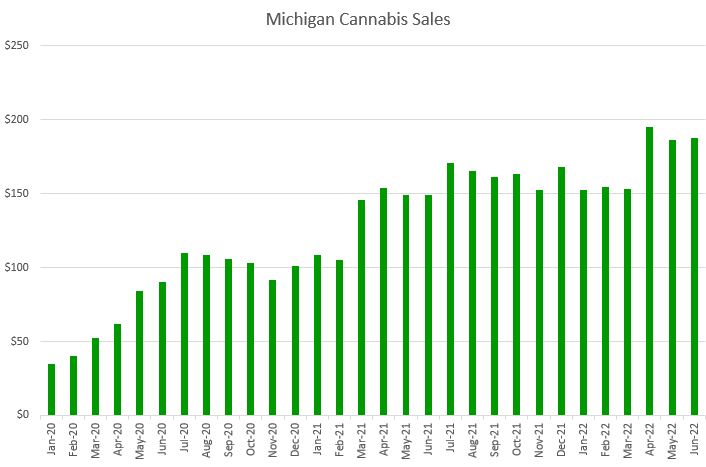
The Michigan Marijuana Regulatory Agency breaks out sales by medical and adult-use, with medical sales falling 48.4% from a year ago to $21.5 million, down 7.6% sequentially, and adult-use sales expanding 54.5% year-over-year to $165.9 million, up 1.7% sequentially:
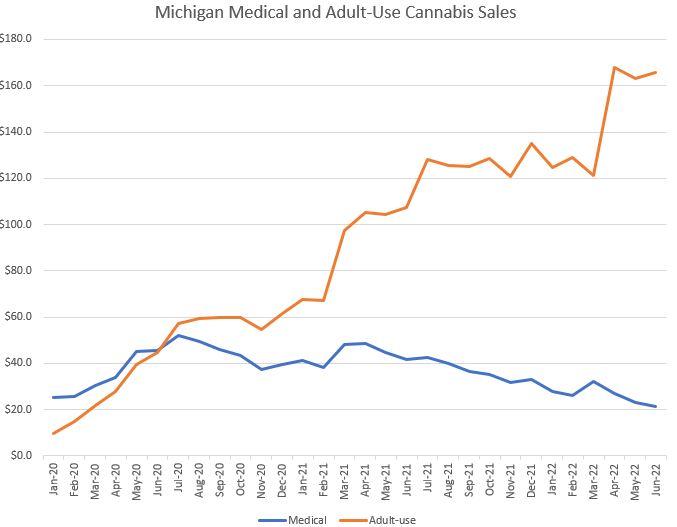
The state breaks out sales by category and provides pricing detail by category, for both medical and adult-use:
Medical Cannabis
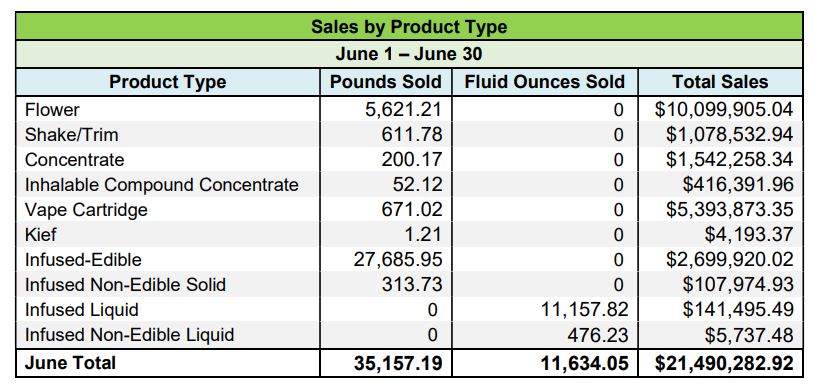
Adult-Use Cannabis
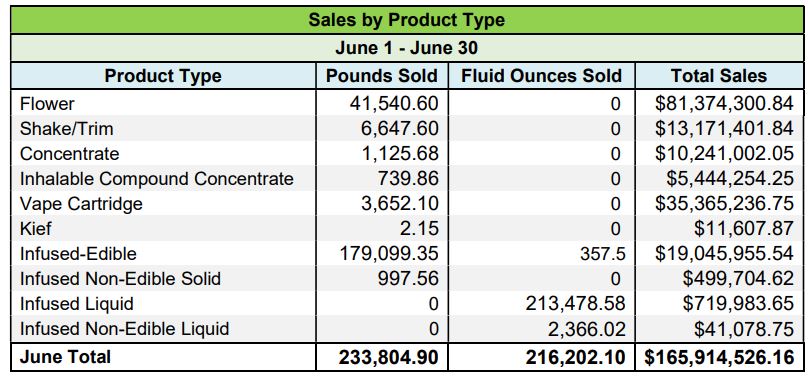
As supply continues to expand, flower pricing for adult-use has seen a dramatic decline. In June, the average price of $1959 per pound declined 6.3% sequentially and 41.6% from a year ago:
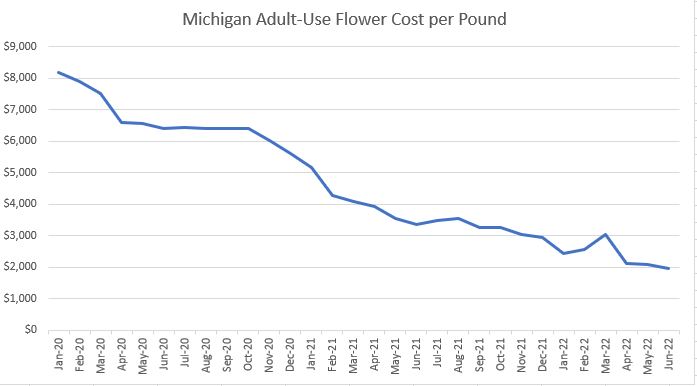
Michigan cannabis sales expanded 82% in 2021 to $1.79 billion and are up 26.9% thus far in 2022 at $1.03 billion for the first half. The program should continue to expand ahead as supply becomes more available and as distribution expands.
New Cannabis Ventures - Michigan June Cannabis Sales Increase 26% From a Year Ago
Hemp extractors worried about a federal crackdown over THC levels have dim prospects for getting help from the judicial system.
Instead, they’re looking to the words of the U.S. Drug Enforcement Administration in hopes the agency won’t put much effort into enforcing its 2020 rule about hemp extracts that go “hot,” or beyond 0.3% THC.
The hemp industry is largely keeping quiet in the wake of a June ruling by a federal appeals court in Washington DC.
The court sided with the DEA and ruled that hemp materials become illegal marijuana the moment they exceed the federal THC limit.
That interpretation alarmed CBD processors because common CBD extraction methods produce material with elevated THC amounts that are later remediated to meet the legal limit.
The court rejected arguments from the Hemp Industries Association and South Carolina CBD maker RE Botanicals, which argued that the DEA was violating the intent of the 2018 Farm Bill, which exempted hemp and its derivatives from the U.S. Controlled Substances Act.
In fact, the judges seemed nothing short of annoyed that hemp activists would challenge a rule that the DEA promised was a simple clarification of the new law.
Writing for a three-judge panel, U.S. Circuit Judge Laurence Silberman said the hemp plaintiffs were “wholly unable to show their injury” and that related arguments about prescription CBD were “frankly ridiculous.”
The decision frustrated Jody McGinness, head of the Hemp Industries Association, who told MJBizDaily after the decision that hemp arguments “weren’t given a real hearing.”
“We’re disappointed in the court’s ruling,” McGinness said.
One hemp company that was not involved in the case and does not perform extraction said the decision could harm all hemp operators.
“The result is bad for business and will continue to be a drag on investment, research and innovation in the hemp industry,” Cynthia Cabrera, chief strategy officer at Texas-based e-commerce hemp retailer Hometown Hero CBD, told MJBizDaily via email.
Next steps
The Hemp Industries Association and RE Botanicals have limited legal options after the defeat.
Because the case was heard before a federal appeals court, the only other court that could review the hemp claim is the U.S. Supreme Court.
Problem is, the nation’s highest court isn’t obliged to take any cases except when states sue each other (which actually happened over cannabis in 2014, when Oklahoma and Nebraska sued Colorado for legalizing adult-use cannabis; the U.S. Supreme Court declined to interfere).
In this case, the hemp activists concede that the Supreme Court is highly unlikely to intervene.
They could try another legal maneuver and ask for what is called an “en banc review,” where the appeals court takes another look. But even that is a long shot.
“The odds of that being granted are something less than 1%, statistically,” McGinness said.
The other plaintiff in the case, RE Botanicals, did not respond to requests for comment from MJBizDaily.
Silver lining
The DEA’s rule might appear to criminalize common methods of CBD extraction.
But the agency’s defense is giving hemp activists and attorneys hope that their lawsuit was worthwhile.
That’s because the DEA’s lawyers said in writing and in court they had no intention of overseeing the hemp industry beyond what Congress allowed in 2018. (The agency did not reply to follow-up questions from MJBizDaily.)
Andrea Steel, a cannabis attorney in Houston who followed the DEA case but didn’t work on it, said the challenge was useful even though the hemp activists lost. That’s because the DEA showed no interest in regulating hemp while it is being processed.
“It’s just not a priority for the DEA,” Steel said. “The DEA reiterated (that) nothing in this rule was meant to expand (the agency’s) authority.”
In fact, she hopes the DEA’s words might benefit manufacturers making delta-8 THC products from hemp. That’s because the DEA reiterated that marijuana is defined by a level of delta-9 THC, the molecule that cannabis plants make naturally.
Another cannabis attorney, Patrick Goggin, said he would advise hemp extractors to “proceed with the status quo” after the DEA decision.
Goggin, chief lawyer for the California Hemp Council, said the failed lawsuit could prove valuable because of the legal record it leaves behind.
“It’s useful in the sense that the DEA indicates that they’re not going to enforce (the rule),” he said, “and it took the challenge to get them to state that.”
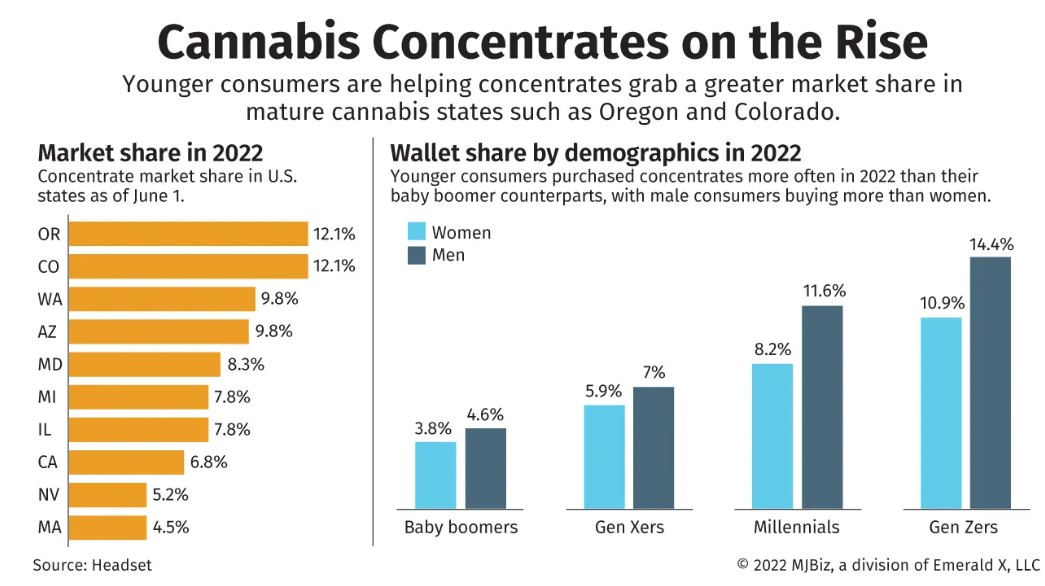
Step aside, 4/20. There’s another unofficial marijuana-related holiday that retailers can take advantage of.
7/10, or “Dab Day,” is dedicated to cannabis users who prefer concentrates such as live resin, shatter or hash rosin, to name a few.
The name for the unofficial holiday – which falls on a Sunday this year – comes from the word “OIL” turned upside down, forming the numbers 7/10.
According to Seattle-based business intelligence platform Headset, concentrate sales increased by 67.4% on July 10, 2021, while rosin sales increased by 213% versus the preceding four Saturdays.
“7/10 tends to be the third-biggest sales period of the year, particularly as awareness around the day and interest in the concentrates category grows,” said Steven Jung, chief operating officer of San Francisco-based vape pod maker Pax.
“This is especially true in more established markets like California.”
4/20 and Cyber Week, tied to the Thanksgiving holiday, are the respective first- and second-biggest sales periods of the year, according to Jung.
Many retailers across the cannabis sector are running promotions for 7/10, including C3 Industries, an Ann Arbor, Michigan-based multistate, vertically integrated cannabis company.
“It’s a holiday that I think every cannabis retailer needs to take advantage of,” said Jason Berkenstock, vice president of retail for C3 Industries.
“The folks that we look at as competition are absolutely participating.”
While not nearly as many cannabis users celebrate 7/10 as they do 4/20, it still offers a good opportunity for retailers to run promotions, provide consumer education and sell more concentrates.
“It’s not as aggressive as the spike we see on 4/20, but we definitely see a nice uptick, a nice increase in sales on 7/10,” Berkenstock said.
By the numbers
According to Brightfield Group, a Chicago-based emerging-markets research company, about 25% of all cannabis consumers have used concentrates within six months of the survey date, which varied as the report covered a compilation of data going back to the first quarter of 2020.
That number has stayed relatively consistent from before the COVID-19 pandemic until now.
“Which is quite interesting as we’ve seen other things increase, like vapes and gummies,” said Maddie Scanlon, cannabis insight analyst for Brightfield.
“Another thing to consider here is that cannabis users as a whole have been increasing.”
In other words, concentrate users tend to consistently make up about a quarter of a cannabis retailer’s consumer base, even as the market expands.
While only 7% of cannabis users told Brightfield that celebrating 7/10 was important to them, compared with the 20% that said the same for 4/20, it can still make for a sizable jump in sales volume.
Headset also reported that concentrates take up 8.3% of the U.S. cannabis market share.
Gen Z and millennial males tend to be the biggest concentrate consumers, at 14.4% and 11.6% of the total wallet share, respectively.
It is also important to note, according to Headset, that U.S. consumers vastly prefer live resin to other types of concentrates at 34% of users compared with:
- Rosin, 12%.
- Shatter, 7%.
- Hash, 2%.
Promotional strategies
Besides being an opportunity to sell more products through discounts and promotions, 7/10 can be an opportunity to create new concentrate users by educating consumers who are coming in to buy flower or edibles.
“We take the opportunity to educate customers around the holiday, and if they’ve never dabbed before, educate them on where would be the best place to start, what concentrate form would make the most sense for them,” Berkenstock said.
While concentrates traditionally appeal to more seasoned cannabis users, new extraction technology and improved processing methods have evolved to the point where a user does not need the traditional torch-and-nail dab rig setup to use concentrates.
Those consumers can opt to use products such as vape pens and distillate cartridges, which can be much easier to use.
“For a lot of customers, they may be uncomfortable with it, because they’re not familiar with the dab rigs, all the tools needed to enjoy a concentrate,” Berkenstock said.
That was one reason C3 decided to make its own in-house dab cartridges ahead of 7/10, something retailers who are vertically integrated with cultivation arms can take advantage of, he added.
Additionally, consumers can be introduced to concentrates through products such as infused pre-rolls or rosin gummies.
7/10 “is an opportunity day to get someone to try concentrates through our lens,” Brightfield’s Scanlon said.
It should also be noted that as perishable products, concentrates do go bad and lose taste, especially if they are improperly stored.
So 7/10 can be a good opportunity for retailers to offload older products before their expiration dates.
“Someone is being left behind if they’re not participating in 7/10,” Berkenstock said.
California’s regulated cannabis market just got a little bit more competitive with the robust illicit market that has continued to flex its power in the state.
Following Gov. Gavin Newsom’s signing of a $308-billion state budget on June 30, California’s weight-based cannabis cultivation tax was eliminated—effective July 1, 2022.
The cultivation tax, which imposed a $161-per-pound rate on licensed growers—regardless of the current market value of cannabis—was abolished via Assembly Bill 195, which was attached as a trailer to the state budget.
On June 29, the California Senate passed A.B. 195 via a 34-0 vote, while the Assembly passed the measure, 69-1. Assemblymember Rudy Salas casted the lone no vote before Newsom signed the budget the following day.
For Graham Farrar, co-founder and president of Glass House Brands, a Santa Barbara-based cannabis operator with more than a half a million square feet of cultivation space, A.B. 195 is in line with one of two main changes being advocated and echoed among the state’s license holders: less taxes and more retail.
“It’s huge,” Farrar said of killing the state’s cultivation tax. “You can charge a premium for licensed product because nobody prefers ‘bathtub gin,’ right? I think we’d all rather have licensed product, but there’s only so much premium people are willing to pay. So, less taxes narrows that gap [so the licensed growers have a chance to be competitive with the folks who aren’t paying taxes].”
Among the measures included in A.B. 195, the bill also maintains a 15% cannabis excise tax but moves the collection of that excise tax from distributors to point of retail sale by Jan. 1, 2023.
The tax reform included in the legislation will help brace the licensed industry, California Cannabis Industry Association (CCIA) Executive Director Lindsay Robinson said in a statement to Cannabis Business Times.
“The survival of the regulated industry is vital to providing ongoing tax revenues for the state and the advancement of public health and safety,” Robinson said. “Eliminating the cultivation tax is just one step towards stabilizing our industry but it’s an important one.”
California’s cannabis cultivation tax, which had been in effect since the state first launched adult-use sales in 2018, has generated roughly $500 million in state revenue: According to data from the California Department of Tax and Fee Administration (CDTFA), the cultivation tax has generated nearly $468 million through March 31, 2022, with $32.7 million generated in the first quarter of this year.
But by eliminating the cultivation tax, many industry advocates argue that the state’s total revenue from cannabis will continue to grow by way of greater participation in the legal market through less-burdensome policies that incentivize entry—both by growers and consumers.
A six-part study published May 4 in a 42-page report by Los Angeles-based Reason Foundation, a non-profit libertarian think tank, suggests eliminating the cultivation tax with no other changes to the state’s tax structure would still generate roughly $145 million in total monthly revenues by December 2024, while keeping the cultivation tax would generate $152.8 million—roughly 5% more.
That $145 million in the Reason Foundation’s projected total monthly tax revenue for December 2024 represents a 48% increase from the average total monthly tax revenue of $98 million generated in the first quarter of 2022, according to CDTFA data.
While A.B. 195 eliminates the cultivation tax and moves the collection of the state’s 15% cannabis excise tax to the point of sale, it also puts a freeze on that excise tax rate for the next three years.
“By consolidating the state’s cannabis taxes into a single excise tax imposed at the point of retail sale, the state can tax the entire cannabis supply chain—from cultivation to sale—in a manner that is more efficient and transparent, thereby lowering barriers to entry into the legal, regulated cannabis market,” language from the bill states.
The cultivation tax, in particular, had been a larger barrier to entry for outdoor growers, who were taxed at higher rates because their product is not worth as much on the wholesale market compared to greenhouse or indoor growers.
For instance, if a greenhouse grower endures a $160 cultivation tax for a pound of cannabis that wholesales at $1,000 per pound, and an outdoor grower endures the same $160 cultivation tax for a pound of cannabis that wholesales at $500 per pound, then the tax burden would be 16% for the greenhouse grower and 32% for the outdoor grower.
Mendocino County-native Jared Schwass, who practices law in the cannabis space as the founder of California-based Schwass Law Firm, said the new law will help small-scale growers too.
“The elimination of the cultivation tax is a huge win for small and homestead farmers in this highly regulated and highly taxed industry,” he said. “Hopefully, this will provide relief to the farms that have been struggling in the legacy cannabis-growing regions of California.”
Schwass also congratulated the advocates and stakeholders who have fought hard to cancel out the tax.
“Enjoy and celebrate the win but this is just the beginning,” he said. “There are several other reforms needed but this is a big step forward in the right direction.”
After three years, A.B. 195 allows state officials to revisit the excise tax and adjust the rate to what they estimate will generate an amount of revenue equivalent to the amount that would have been collected had the cultivation tax not been eliminated. However, in no case can the cannabis excise tax exceed 19% of the gross receipts of retail sale, according to the bill.
While the bill is not perfect, according to a CCIA news release, zeroing out the cultivation tax indefinitely and shifting the excise tax collection to retail are “big wins” for the state’s licensed cannabis industry.
“This bill represents genuine tax reform,” Tiffany Devitt, vice president of the CCIA Board of Directors, said in a statement to CBT. “Whether it is sufficient to transition the majority of consumers from the illicit to the licit cannabis market remains to be seen. Nonetheless, we commend and thank the Legislature and governor for making substantial progress.”
Per CCIA, additional measures in A.B. 195 include:
- Social Equity: Equity licensees will be able to retain 20% of the excise taxes they collect to reinvest into their businesses. They will also be eligible for a $10,000 tax credit.
- Tax Credits: Includes $40 million in tax credits, of which $20 million will be earmarked for tax credits for qualified storefront retail (Type 10) and microbusinesses (Type 12) dubbed cannabis “high road” employers, and $20 million for cannabis equity operators. The bill allows qualified businesses to claim tax credits of up to $250,000 for qualified expenditures beginning in the 2023 taxable year.
- Enforcement: Adds additional enforcement tools against the illicit cannabis market, modeled after legislation introduced in the Assembly. Specifically, it states that a person who knowingly rents, leases or makes available for use, with or without compensation, the property, building, room, space or enclosure for the purpose of unlawfully cultivating, manufacturing, selling, storing or distributing cannabis is subject to civil penalties of up to $10,000 per day for each violation. The bill authorizes a county counsel to file a civil action relating to unlawful water pollution and unauthorized water diversions due to unlicensed cannabis cultivation on behalf of the state.
- Labor Protections: The bill lowers the LPA threshold requirement from 20 to 10 non-management employees.
- State Reporting Requirements: Imposes additional reporting requirements on the state Cannabis Tax Fund providing greater accountability and transparency, so the industry and the public knows how cannabis tax revenues are being spent.
- Minimum Baseline: Maintains the $670 million minimum baseline for Allocation 3 (tax revenue to environmental groups, youth prevention groups, and law enforcement) until 2028 and will set aside $150 million in the General Fund to backfill any revenue loss associated with the zeroing out of the cultivation tax.
- Economic Impact Study: Requires that an economic study be conducted to measure the impacts of tax reform on tax revenues.
- Retail Access: Establishes a $20 million Cannabis Retail Access Grant Program to encourage cities and counties with existing bans on commercial cannabis retail to implement retailer licensing programs with funding prioritized for jurisdictions that incorporate social equity programs.
The global cannabis market is expected to reach $90.4 billion by 2026, according to a MarketsandMarkets report. This equates to a compound annual growth rate (CAGR) of 28% from the cannabis market’s $20.8 billion evaluation in 2020.
Within the cannabis market, concentrates are projected to have the largest CAGR through 2026 due to the wide variety of different types of concentrates including shatter, budder, rosin, wax, oils, and tinctures.
The medical cannabis sector is expected to dominate the market with the growing list of countries embracing medical cannabis and the increasing use of various types of CBD, the report says.
Additionally, the North American market is expected to continue expanding: Canada legalized adult cannabis use in 2018, the legalization process is in the works in Mexico, more U.S. states pass adult-use cannabis laws each year, and medical cannabis treatments across North America have never been more popular. The presence of large cannabis corporations like Canopy Growth Corp, Aurora Cannabis Inc., and Medical Marijuana Inc., will also spur investment in the North American market, the report says.
In Europe, Germany is moving forward with plans to legalize adult-use cannabis while Malta — the European Union’s first member nation to pass legalization — recently shipped its first medical cannabis export.
As mainstream businesses cope with surging inflation and the threat of a recession, many adult-use marijuana companies – growers, retailers and ancillary businesses alike – are struggling with their own host of problems.
Falling prices and a product glut in more established state marijuana markets are forcing companies out of business, triggering layoffs and setting off an industrywide scramble to stay afloat.
Colorado, Oregon and Washington state are among the more mature markets where wholesale cannabis prices have tumbled, because growers produced far more flower than retailers could absorb.
The falling prices have put added strain on cannabis growers and retailers.
Ancillary businesses also are struggling, with tech companies Akerna of Colorado and Dutchie of Oregon as well as California-based delivery operator Eaze recently shedding employees.
Compounding the problems of cannabis companies: Marijuana products are often taxed at a far higher rate than mainstream goods such as corn, milk and automobiles.
In Washington state, for example, taxes can account for nearly 50% of the price of marijuana products on store shelves, making it harder for owners to remain competitive – much less survive.
“My revenue has dropped month after month, year after year, and we are to the point now where we’re just barely able to keep our doors open,” said James Lathrop, owner of Cannabis City, a marijuana retailer in Seattle.
In response, retailers are using a variety of tactics to stay afloat, including:
- Offering consumers steep price discounts.
- Exiting the retail business altogether to focus on cultivation.
- Opening entirely new businesses – such as a marijuana-themed beer lounge – in order to drive traffic back to their stores.
“It’s going well for almost nobody,” said Matt Walstatter, who sold his Oregon store, Pure Green, in 2019 to focus on cultivation.
“When I go to industry events, I don’t really talk about my business, because everybody is talking about how terrible it is and what a bloodbath.”
Below is a snapshot of market conditions in three states:
Oregon
Marijuana companies in the state are struggling to cope amid a flood of businesses opening their doors after voters in the state legalized recreational marijuana in 2014.
Oregon adds a state tax of 17% to cannabis products, while municipalities are permitted to impose an additional tax of up to 3%.
Initially, there was no limit on the number of retail licenses the state doled out.
According to Walstatter, this led to a surplus of retailers and eventually forced the state to impose a moratorium on new cannabis licenses in April 2018.
“The retail market here is really, really, really crowded,” Walstatter said.
“It used to be when we got started that people would drive past stores to come to our store.
“And after a while it wasn’t that they were driving past two or three, it was that they were driving past 10 or 15.”
At last count, Oregon had 787 cannabis retail stores, according to the Oregon Liquor and Cannabis Commission. The state’s population totals about 4.2 million.
Walstatter said two high-volume retailers opened on either side of his store soon after he opened, which made it tough to remain competitive.
He said he has seen many businesses like his either sell their stores to multistate operators or close up shop because of the stiff competition.
A tight labor market isn’t helping.
“I was talking to one grower who we work with, and he has no employees left,” Walstatter said. “He waters 600 outdoor plants himself every other day; he literally cannot afford help.”
Colorado
After Colorado became the first state in the nation to begin adult-use sales, in January 2014, businesses there rode a steadily rising sales tide for years.
Now sales – and prices – are falling. Business owners are shuttering their doors or putting their companies on the sales block.
The state imposes a 15% excise tax on retail cannabis products. Localities add a sales tax of up to 2.9%.
While cannabis companies in newer state markets typically enjoy rising sales, Colorado operators have suffered a steep decline over the past year.
According to the Colorado Department of Revenue, marijuana sales in April totaled $153 million, a 25% decline from April 2021.
The price of wholesale cannabis flower is also down – 43% in the first quarter of the year compared to a year earlier.
Colorado cannabis retailers have also reported heavy oversaturation in the retail space, which recently led to the closure of all seven Buddy Boy stores in Denver.
The situation has been just as bad for growers.
Chris Becker, head of revenue and partnerships for Denver-based cannabis brand The Honeybee Collective, said the market price for a pound of wholesale marijuana flower has dropped from $1,600 this time last year to about $800.
“It’s been a tough year for cultivators,” he added. “Most people built their businesses around getting at least $1,500 a pound.”
With cost of production around $800-$900 a pound, Becker said, many of the smaller cultivators with 3,500- to 5,000-square-foot grows are likely to go out of business.
“I can’t see people growing in Denver for much longer,” he added.
John Andrle, owner of Denver cannabis grower and retailer L’Eagle Services, said the market indicates “some serious trouble for everyone in the industry, notably growers, but extending to stores, product manufacturers and more.”
Marijuana grows are selling for pennies on the dollar, if they’re selling at all, Andrle said.
“Stores aren’t faring much better, mostly because so many are for sale,” he added.
He estimated half the stores in Boulder are currently for sale.
Washington state
Marijuana businesses in the state are coping with steep taxes.
Washington state legalized cannabis for medical use in 1998, and adult-use sales began in July 2014.
The state has a strict licensing limit, with the number of retail licenses capped at 556 – well below the nearly 800 stores currently operating in neighboring Oregon.
The state’s population, by comparison, is nearly double that of Oregon’s, at 7.5 million.
And, at a whopping 37%, the retail excise tax on marijuana purchases is much higher than in Oregon or Colorado.
“This is in addition to the regular state of Washington sales tax, which, in Seattle, is 10.2%,” Cannabis City’s Lathrop said.
“So now it’s a 47.2% tax on a product that people can effectively grow in their closet if they want.”
Lathrop told MJBizDaily that while he might have less storefront competition than do retailers in other states, Cannabis City struggles to bring in customers who would rather shop on the illicit market rather than pay such a high tax.
“The only people that are winning are the high-volume stores that happen to be in an area where they’ve had a monopoly for a while,” Lathrop said.
Cannabis City has been open since 2014. But Lathrop said he will be forced to close his store if market conditions don’t improve.
He has even opened a cannabis-themed lounge – it serves beer, since marijuana clubs are banned in Washington state – in an attempt to drive traffic back to his dispensary.
But it’s been to no avail.
“I’m on the edge of, do I go bankrupt?” Lathrop said.
“Do I sell my store and walk away with nothing after eight years of being in an industry? Or can I still make it happen?”
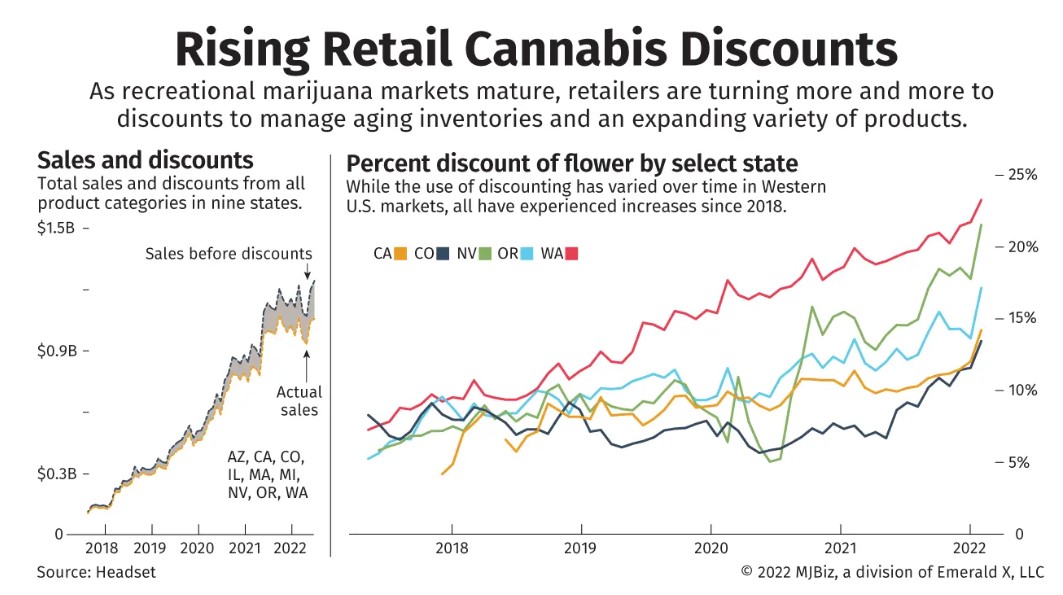
U.S. and Canadian cannabis retailers are discounting their products more and more, forgoing billions of dollars in revenue since the launch of adult-use markets in recent years.
It’s easy to blame recent events such as the COVID-19 pandemic for the price shaving.
But the increase in discounting, according to Krista Raymer, the founder of Toronto-based retail cannabis consulting firm Vetrina Group, likely reflects the rapidly growing number of adult-use brands and products available to retailers.
This has left retailers with a growing number of product options and rising stocks of unsold goods at a time when recreational sales, in particular, have slowed in a number of markets.
In response, retailers are relying on a variety of promotions, discounts and markdowns to boost sales and shrink bulging inventories – this at a time when overall consumer inflation is surging, having jumped 8.3% annually in April.
Raymer believes the cannabis discounting will continue until the industry has more experience and data to make better informed decisions about managing products, prices and inventories.
The combined discount on mainly recreational marijuana cannabis sales in nine U.S. states more than doubled over the past five years, from 7% in June 2017 to 15% in April 2022, according to retail data collected by Seattle-based analytics firm Headset.
Those states include Arizona, California, Colorado, Illinois, Massachusetts, Michigan, Nevada, Oregon and Washington.
Discount percentages vary by product, but all categories have experienced increases since recreational sales started in the various states and Canada.
Cannabis flower, the most popular and top-selling category, had double-digit discounts for April in several U.S. states.

Total flower discounts in Washington state reached 20% for the first time in November 2021 and topped 23% in April of this year.
Nevada also had total discounts on flower of more than 20%.
Among the states tracked, only Massachusetts had comparably low discounts rates.
Combined retail discounts in the state were 2.7% in April 2022, which is double what it was in 2018.
Canadian consumers might not be enjoying the same discount percentages as U.S. buyers are, but discounts are increasing.
Total discounts in all provinces increased from less than 1% in the beginning of 2019 to 3.4% in April 2022.
Of the provinces, Ontario had the highest discount percentage, 4.1% in April.
Alberta was next, at 3.8%, followed by British Columbia (2.6%) and Saskatchewan (2.4%).
That amounts to almost 5 million Canadian dollars ($4 million) in discounts every month.
The differences in discounts in Canada and the U.S. come from how the supply chains are set up.
Canadian cannabis retailers absorb most of the discounting cost because, in most provinces, wholesale prices are set by government-run provincial wholesalers.
Retailers purchase the product at a fixed price from the wholesalers, but they can sell it at the price they want.
U.S. retailers have more options when it comes to discounting because they can rely on partners to absorb some of the price difference.
Cannabis brands can set up programs such as those in mainstream consumer packaged goods industries, where product producers or distributors absorb the cost of the discount to help expose customers to their merchandise.
At the same time, cannabis discounting coincides with the rapid expansion of product available to retailers in Canada and the U.S.
For example, the number of cannabis products available to U.S. retailers in California, Colorado, Michigan, Nevada, Oregon and Washington state surged 80% from 2018 to 2022, with almost 5,000 brands producing 189,000 products in those states at the end of the first quarter this year.
California experienced a quadrupling in the number of cannabis products available to consumers since 2018, with 39,000 products being sold by retailers in the first quarter of 2022.
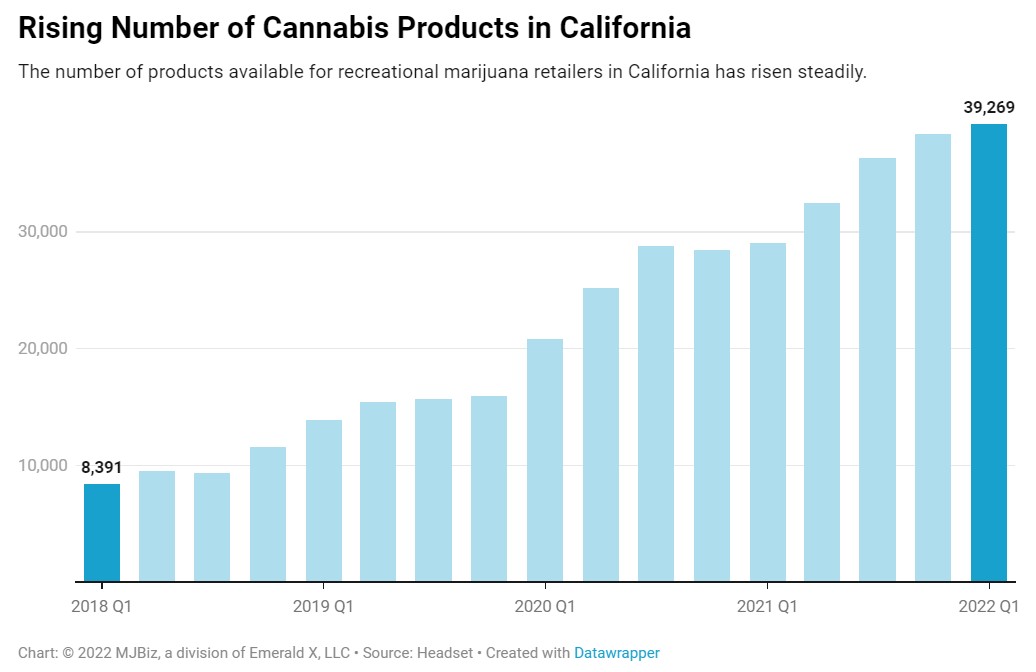
Product growth is also happening in Canada.
The country had 10,400 products for sale by 1,400 brands during the first quarter of 2022.
Not bad for a market that started in 2019 with about 500 products offered by 64 brands.
But there is a dark side to discounting, Vetrina's Raymer said.
“Discounting is used as a lever to increase the sales velocity of a SKU," she said. "The difficulty, though, is you have to increase the velocity enough to offset the cost associated with running the discount.”
And if you can’t do that on a consistent basis, Raymer said, discounting can be very detrimental to the business - and even the industry.
"We have to be really specific with discounting," she said.
Raymer recommends retailers understand the intended and unintended consequences to discounting and create a pricing, promotion and discounting strategy.
"There's been some big shifts in discounting - for example, discounting an entire category. Instead, we need to be more targeted with what SKUs we're discounting when and how much product is available in the store at discount at any given time."
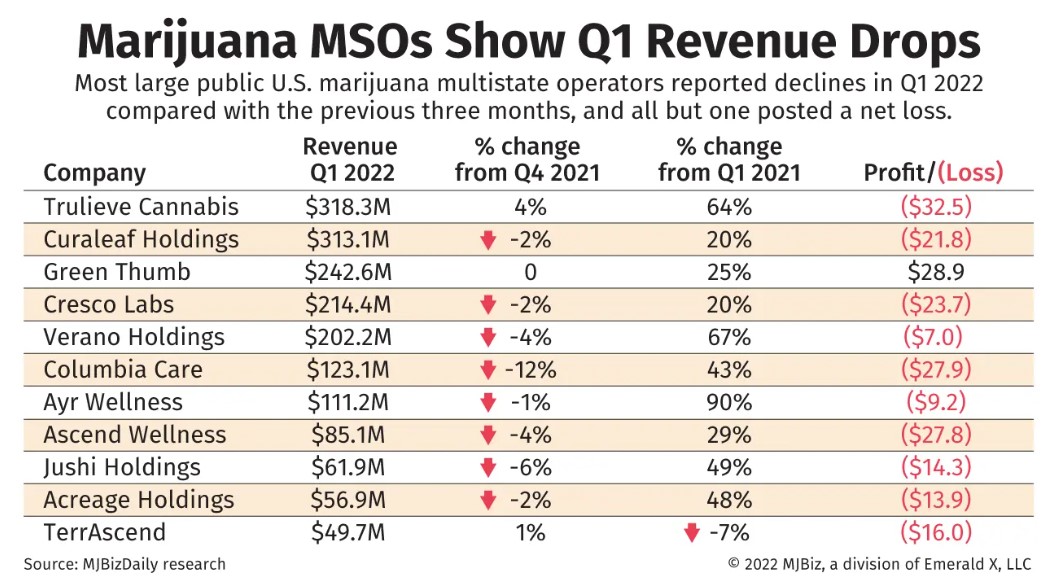
Most of the largest U.S. marijuana multistate operators experienced revenue declines in the first quarter of 2022 versus the previous three months, reflecting seasonal factors, declining cannabis prices and inflationary pressures that could be curbing consumer spending.
Of the 12 largest MSOs, only Illinois-based Green Thumb Industries posted a net profit for the first three months of 2022.
Florida-headquartered Trulieve Cannabis, meanwhile, inched ahead of Curaleaf Holdings for the top spot in revenue.
But, based on revenue guidance, Massachusetts-based Curaleaf likely will reclaim the top position, perhaps as soon as second-quarter results are announced.
In a metric closely watched by investment analysts, half of the 16 largest marijuana MSOs beat EBITDA (earnings before interest, tax, depreciation and amortization) estimates, while half missed their projections – about what one would expect in a given quarter, according to Frank Colombo, director of data analytics at New York-based Viridian Capital Advisors.
“What is striking is how little correlation there is between missing EBITDA estimates and how the stock did,” Colombo told MJBizDaily via email.
In fact, the company that outperformed EBITDA estimates the most on a percentage basis – Nevada-based Planet 13 Holdings – had the worst relative stock performance, according to Viridian.
“Meanwhile, the company that missed estimates by the most was TerrAscend (with offices in New York and Toronto), but the stock slightly outperformed the market,” Colombo wrote.
“Our conclusion is basically that investors shrugged off the quarter’s numbers.”
Marijuana stock prices have been battered in the past 18 months, largely because of the lack of progress by Congress in reforming the nation’s marijuana laws.
Colombo wrote that cannabis stock investors also are now considering the following factors:
- How well is a company positioned to take advantage of the emerging recreational marijuana markets in New Jersey and New York?
- Is a company a potential takeover candidate?
- How is the company’s liquidity situation? Will it need to raise money in what has become an unfavorable economic market to do so?
In addition, Colombo wrote, “it will be interesting to see if inflation and/or a weakening economy start to have an impact on margins.”
A new No. 1
Trulieve Cannabis captured the top spot in revenue on the strength of a 4% quarter-over-quarter increase, while Curaleaf’s revenues slipped 2% for the same period.
MSOs typically enjoy a strong bump in sales during the December holiday period, followed by weaker sales after the first of the year.
In 2022, marijuana companies also are facing such revenue-squeezing factors as declining prices.
Yet, the larger economy is experiencing inflation that affects the amount of money consumers have to spend on discretionary products such as cannabis.
Trulieve is the market leader in Florida’s billion-dollar-plus medical marijuana industry and has market-leading retail positions in Arizona and Pennsylvania, according to company regulatory filings.
But Trulieve doesn’t have a presence at this point in New York or New Jersey and is seeing more competition in Florida, where it once commanded roughly half the market share.
Trulieve still has nearly 50% of retail flower sales in Florida, according to the state’s May 27 weekly update, but its share of sales of other THC products has fallen to roughly 40%.
Pablo Zuanic, investment analyst at New York-based financial services firm Cantor Fitzgerald, estimated in a recent research note that Arizona, Florida and Pennsylvania combined account for roughly 94% of Trulieve’s sales in the first quarter. Of those three, only Arizona has an adult-use market.
Zuanic noted that Trulieve management reaffirmed full-year sales guidance at $1.3 billion to $1.4 billion, but he said the high end of that estimate “may be a stretch in the current environment,” especially if medical marijuana sales in Pennsylvania are adversely affected by residents crossing the border to buy recreational products in New Jersey.
He also noted that there’s “no clear signs its core markets (such as Pennsylvania) will go rec in 2022 or even 2023.”
But Zuanic does believe that Trulieve is “likely to remain opportunistic” in terms of potential mergers and acquisitions to add depth and/or breadth to its footprint.
Curaleaf, meanwhile, is well-positioned to take advantage of new East Coast recreational marijuana markets, with operations in Connecticut, New Jersey and New York.
Executive Chair Boris Jordan told MarketWatch last month that despite a tough first quarter, the company still is on track to generate $1.4 billion to $1.5 billion in revenue this year.
In a news release, Jordan said the company experienced strong month-over-month sales in March.
Curaleaf likely will reclaim the top-revenue spot from Trulieve, according to its revenue guidance and Jordan’s comments.
The company is expected to benefit from the recent launch of the New Jersey recreational marijuana market, a growing share of Florida’s MMJ market as well as cultivation and retail expansion in other key states.
Vivien Azer, an investment analyst with New York-based investment banking firm Cowen, had a similar take on Curaleaf after it posted its first-quarter results last month.
“Despite deflationary/consumer headwinds, margins (and revenues) should expand sequentially from here,” she wrote in a note to investors.
In this case, deflation refers to marijuana price reductions.
Eye on Cresco
Illinois-headquartered Cresco Labs is another company that investment analysts are watching closely, because it is in the process of acquiring New York-based Columbia Care for roughly $2 billion.
That acquisition likely will catapult Cresco into the company of Trulieve and Curaleaf, depending on how many assets are sold as part of the Columbia Care transaction.
Columbia Care’s 12% quarter-over-quarter revenue decline was the most among the 12 largest MSO operators.
Cresco has issued guidance for “muted growth” for the second quarter of this year, according to a recent investment note by Cantor Fitzgerald’s Zuanic.
But if and when it closes on the Columbia Care transaction, Cresco will be in eight new states, including New Jersey and Virginia.
The company also is expected to have the top or No. 2 spot in the Colorado, Illinois, Massachusetts, Pennsylvania and Virginia markets.
In addition, Cresco will have a strong foothold in New York.
But Zuanic also warned of possible investment risks: the integration of the Columbia Care acquisition, subpar growth trends and stiffer competition in key states such as Illinois and Pennsylvania.
The head of the U.S. Food and Drug Administration says he is “very committed” to making progress on CBD, but his agency needs more authority to do so.
The comments by FDA Commissioner Robert Califf came Thursday during a U.S. House of Representatives budget hearing.
Asked about “hemp products,” Califf noted there are an “amazing plethora of derivatives of the cannabis plant,” calling it “quite profound and astounding,” Cannabis Wire reported.
He acknowledged that hemp extracts and derivatives are “already in widespread use,” then noted that the FDA’s work to date has been focused on research to assess risks.
“I am very committed to taking a path on this,” he said.
But, for that to happen, Califf said Congress would need to give his agency more authority.
“And just to put a marker down, I don’t think the current authorities we have on the food side or the drug side necessarily give us what we need to have to get the right pathways forward. We’re going to have to come up with something new. I’m very committed to doing that.”
He did not elaborate.
A Wisconsin Democrat, Rep. Mark Pocan, pressed Califf to suggest a timeline for possibly allowing CBD as a food additive.
“The research so far has shown that there are some risks with CBD, so we’re going to need a different pathway than just the standard pathway,” Califf responded.
Delta-8 THC derived from hemp is “lawful” and eligible for trademark protection, a federal appeals court ruled in a vaping dispute.
The 9th Circuit Court of Appeals said in its ruling Thursday that because Congress legalized not just hemp but its “derivatives” and “extracts” in the 2018 Farm Bill, delta-8 THC is legal if it is derived from a hemp extract – in this case, CBD.
The ruling gives delta-8 vape maker AK Futures another opportunity to block fellow California company Boyd Street Distro from allegedly selling counterfeit versions of AK Futures’ “Cake” vapes containing delta-8 THC.
The three-judge appeals panel sided with AK Futures and said that delta-8 THC is not a controlled substance under federal law if it comes from hemp.
“Regardless of the wisdom of legalizing delta-8 THC products, this court will not substitute its own policy judgment for that of Congress,” Judge D. Michael Fisher wrote.
However, the ruling does not address the legality of selling consumable delta-8 THC products.
Though Congress legalized hemp derivatives such as delta-8 THC, it also directed the U.S. Food and Drug Administration to oversee how those products could be sold.
So far, the FDA has declined to authorize any cannabinoid products without a prescription, and the agency issued a consumer alert last September warning saying that delta-8 THC “may have potentially harmful by-products (contaminants) due to the chemicals used in the process.”
The confusion over delta-8 THC’s legality under federal law has prompted many states (including California) to limit or restrict how it can be sold.
The California vape case started last year, when AK Futures of Santa Ana sued Boyd Street of Los Angeles for allegedly selling counterfeit vapes and asked a court to block its sales.
Boyd Street argued that delta-8 THC is illegal under federal law and therefore ineligible for intellectual-property protection.
The appeals judges disagreed.
“If Boyd Street is correct, and Congress inadvertently created a loophole legalizing vaping products containing delta-8 THC, then it is for Congress to fix its mistake,” the judges wrote.
They went on to criticize Boyd Street for arguing both that delta-8 THC is unsafe and that the company shouldn’t be stopped from selling it.
“Agreeing with Boyd Street at this stage would not keep delta-8 THC products off of the market, rather it would let a store continue to sell counterfeit versions of unknown origin,” the judges wrote.
Delta-8 THC is an isomer of the psychoactive cannabinoid that occurs naturally in the cannabis plant, delta-9 THC.
Delta-8 THC is rare in nature but can be easily synthesized from CBD, giving rise to products that offer intoxicating effects without needing to be sourced from marijuana, which isn’t legal in all states and remains illegal under federal law.
An attorney for Boyd Street told the San Francisco Chronicle that the company is in the process of settling the trademark claim and likely won’t appeal the ruling.
Ohio could more than double its total number of medical dispensaries as early as next year, following the Ohio Board of Pharmacy’s awarding of 70 new RFA II provisional dispensary licenses in the state, on Monday.
“We will finally have dispensaries in all districts of Ohio. We made sure that we will finally have better coverage across the state in this process,” said Cameron McNamee, Ohio Board of Pharmacy’s spokesperson. “We know there is a need to expand the process and the drawing process helped turn this around much quicker.
The state currently has 58 licensed medical dispensaries.
“Hopefully we see them operational soon,” Ohio cannabis lobbyist Tim Johnson said. “I’m sure they’ll do well out there in the rural areas that have needed them.”
Other cannabis lobbyists and activists in the state say that while it’s not on the path towards recreational use, people such as NORML Appalachia executive director Don Keeney said that it is baby steps toward that progress.
The state expanded the number of available licenses to meet the demand of patients in the state, which McNamee, says was overwhelming and far exceeded expectations.
A 2020 study by the Ohio Board of Pharmacy showed that more than 60% of Ohioans travel more than 10 miles to go to one dispensary. The board believes that the new expansion will bring in 1,200 registered patients per dispensary district.
CT declines to loosen disclosure requirements for cannabis investors
Another stated goal by the board was to ensure the licenses are not overly concentrated in the biggest cities.
The application process drew more than 1,400 requests last year before its Nov. 18, 2021 deadline with a drawing for the winners happening in late January.
McNamee says that the board used a drawing process to expedite the process to award licenses at a quicker rate.The Ohio Lottery Commission conducted the drawings, before the Board reviewed their applications for compliance with Chapter 3796, according to the state’s announcement of the new provisional licenses.
RFA II license applicants must already have or plan to build a space that complies with state medical marijuana regulations and pass a state Board of Pharmacy inspection to receive approval to operate. Applicants will have a 270 day window – nearly nine months – to become fully operational.
Applicants must also prove that the proposed location is not within 500 feet of a prohibited facility such as a school or church, as well as have $250,000 available to build and operate a facility.
The original drawing pulled 73 applications to be approved. However, three cannabis businesses – Green Bud LLC, Cannabis Ventures, and Healing Through Cannabis – were still in the process of being reviewed by the board for unspecified reasons, as of May 18.
With only three licensed testing labs, Ohio testers work to keep up.
The governor of California unveiled an updated budget proposal on Friday that calls for the elimination of the state’s marijuana cultivation tax and revised cannabis tax revenue allocations.
Gov. Gavin Newsom’s (D) May revised budget would take steps intended to combat the illicit market and make the legal industry more competitive, in large part by zeroing out the cultivation tax that marijuana businesses currently incur.
It’s a move that stakeholders have been pushing for, especially as businesses have struggled to keep up with rising inflation and reduced demand compared to peak coronavirus pandemic levels. The governor emphasized on Friday that he was specifically committed to exploring ways to minimize the influence of illicit growers and sellers on undercutting legal, licensed businesses.
And while one might assume that removing the cultivation tax would hamper revenue streams for the state, a recent analysis from the Reason Foundation actually found that monthly tax revenue would increase by 123 percent by 2024 if the policy change was enacted.
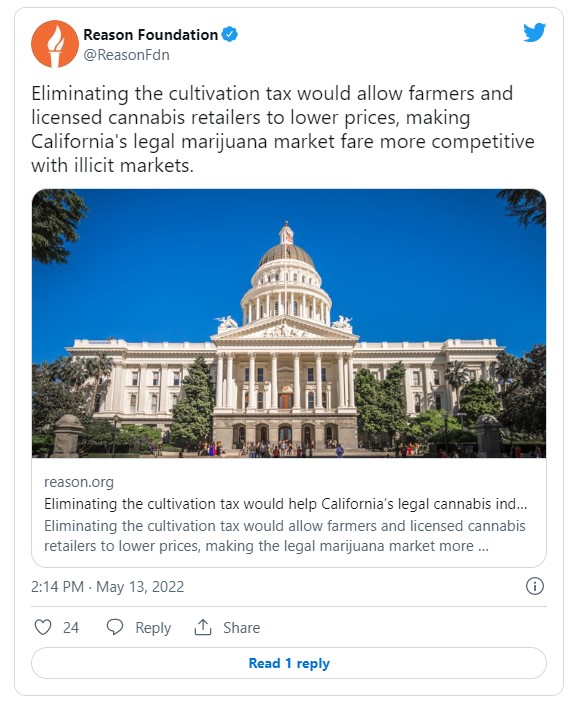
The report said that ending the cultivation tax would mean lower costs for consumers and, therefore, increased legal purchases that would more than offset any revenue losses over time.
Newsom’s proposal on its own isn’t binding, however. It would need to pass the legislature with at least a two-thirds majority in order to be implemented.
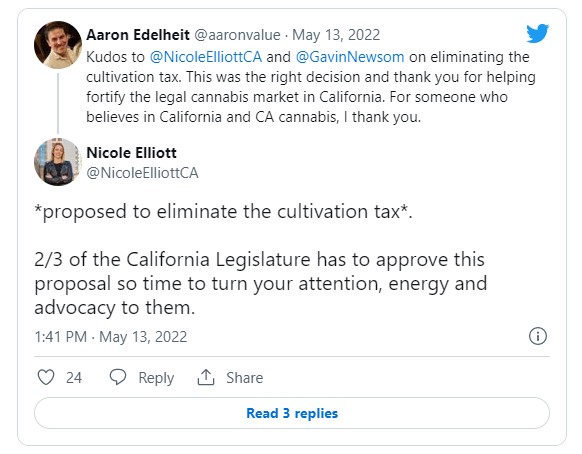
“We’ve been working very closely with legislative leaders, and we’ve made tremendous progress,” the governor said at a briefing on Friday. “We haven’t finalized any of that, so I want to be careful not to disrupt that progress.”
Sam Rodriguez, policy director for the cannabis farmers advocacy group Good Farmers Great Neighbors, praised Newsom’s move in a statement to Marijuana Moment.
“California farmers are pleased that the governor has taken a leadership role in addressing the ills of the illicit market with a starting point on tax relief,” he said. “We look forward in working the legislative budgetary process to obtain more tax relief necessary to stabilize the supply chain. The legal market in our state needs a real bootstrap approach from our state. Anything less will potentially devastate the newly created cannabis economy. And that would be a travesty.”
The governor’s revised budget proposal also includes updated estimates on tax revenue allocations for the 2022-23 fiscal year.
The state is expecting to distribute $401.8 million for education, youth substance misuse treatment and school retention; $133.9 million for environmental clean-up and remediation related to illicit cannabis manufacturing and $133.9 million for law enforcement purposes.
“These figures reflect a total increase of $74.7 million compared to the Governor’s Budget estimate,” the revised budget summary says. “These estimates also reflect the proposed statutory changes to restructure the cannabis tax framework and maintain a baseline level of funding for this allocation.”
Separately, the governor’s plan would involve shifting “the point of collection and remittance for excise tax from distribution to retail on January 1, 2023,” while maintaining the 15 percent excise tax rate on marijuana sales.
The budget further calls for the creation of a one-time “cannabis local jurisdiction retail access grant program” to support the development and implementation of local retail licensing efforts. The $20.5 million for that program would come out of the state general fund. Localities that license equity applicants could receive additional funding.
Newsom said the goal of the initiative is “addressing the persistent issue that is exactly what we anticipated would be a persistent issue—and that’s dealing with the black market, going after the illegal growers and the illegal operators.”
“This is beginning of a process,” he said. “From my humble perspective, in terms of my thinking, this will be a multi-year process to get that black market, get it on the retreat—not the ascendancy—and to get the retail and responsible adult-use market on steady ground.”
Nicole Elliott, director of the Department of Cannabis Control, said that the budget’s cannabis provisions would “remove unnecessary administrative burdens and costs.”
“We have heard from many of you who have said that the current cannabis tax framework is overly complex,” she wrote in an email to industry stakeholders. “We know that current tax policies disproportionately burden cannabis farmers and small businesses and create instability throughout the supply chain, ultimately undermining the societal benefits of a taxed and regulated market.”
Meanwhile, California officials announced in January that the state had awarded $100 million in funding to help develop local marijuana markets, in part by getting cannabis businesses fully licensed.
The state Department of Cannabis Control (DCC) distributed the funds to 17 cities and counties where there are a disproportionate number of provisional marijuana licenses, rather than full-year licenses. The department first announced that applications for the Local Jurisdiction Assistance Grant Program had opened in October.
Also last year, the state said it was awarding about $29 million in grants to 58 nonprofit organizations, with the intent of righting the wrongs of the war on drugs. The funding is being provided through the California Community Reinvestment Grants (CalCRG) program.
Grants are being awarded to qualifying nonprofits to support programs aimed at providing job placement, mental health treatment, substance misuse treatment and legal services for disproportionately impacted communities. The program was first announced in April 2020, and applications for those grants were initially opened in September 2020.
Officials with the California Department of Fish and Wildlife also said last year that they were soliciting concept proposals for a cannabis tax-funded program aimed at helping small marijuana cultivators with environmental clean-up and restoration efforts.
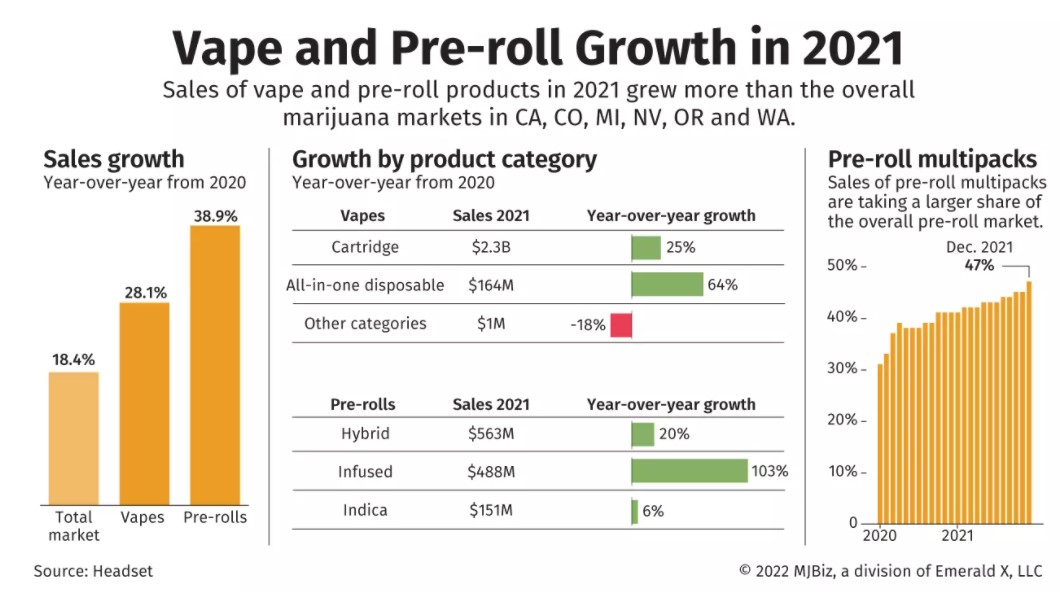
Vape pens and pre-rolls continue to grow in popularity among U.S. marijuana consumers seeking out more potent products, as well as those excited about innovations in each category.
Vapor pens were the second-largest category by revenue behind flower in the U.S. cannabis market during 2020 and 2021, netting nearly $2.6 billion in retail sales last year across six adult-use markets tracked by Seattle-based data-analytics firm Headset.
Those markets were California, Colorado, Michigan, Nevada, Oregon and Washington state.
Cooper Ashley, Headset’s senior data analyst, said the pre-roll category rose from fourth-largest to No. 3 with $1.42 billion in sales in 2021, unseating edibles from the top three highest-revenue categories.
Both categories had strong year-over-year growth in 2021, with vapor pens up 28.1% and pre-rolls up 38.9% from 2020, according to retail sales data from the six rec markets Headset tracks.
The total marijuana market, by comparison, grew 18.4%.
“These consumers are looking for more potent products and are willing to spend a premium for them,” said Brian MacIver, senior cannabis insights manager for Chicago-based analytics firm Brightfield Group.
Convenient, discreet
Cartridges made up the vast majority of vapor pen sales, but disposable vape pens had very strong growth in 2021, Ashley pointed out.
Arshad Lasi, CEO of the Nirvana Group, a vertically integrated medical marijuana company in Tulsa, Oklahoma, said he’s seen an uptick in people buying disposable vapes as consumers look for discreet, convenient products.
As COVID-19 pandemic restrictions are lifted, he added, “people want things that they can consume at a place like a sporting event.”
According to Brightfield data, vape products are “extremely popular” with younger U.S. consumers: Nearly half – 47% – of U.S. cannabis vape consumers are younger than 35.
For context, only 40% of U.S. cannabis consumers are younger than 35, according to MacIver.
Brightfield data also shows that vape consumers are generally heavier cannabis consumers than the average user.
Vape consumers, for example, are willing to spend more per month on cannabis, according to MacIver.
In particular, 51.5% of vape consumers spend more than $150 per month on cannabis. By comparison, 42.8% of the general cannabis consumer population spends that much.
Souped-up pre-rolls
The more standard forms of pre-rolls, such as those made with a single flower strain, experienced fairly small year-over-year growth, while other, more specialized segments saw strong growth, according to Headset’s Ashley.
For example, infused pre-rolls – often made by applying concentrates or cannabis oil to flower – stood out as the second-largest segment in both 2020 and 2021.
Sales of infused pre-rolls more than doubled in each of those years.
“This is definitely the pre-roll segment to watch in 2022,” Ashley said.
Nirvana Group’s Lasi agreed, saying that “consumers are looking for more potent products.”
For example, one cannabis company that Lasi works with in Oklahoma offers a product with concentrate oil applied to the outside of the product. It is then dusted with kief, or THC crystals.
Infused pre-rolls such as these can achieve levels of THC potency – testing in the 40%-50% THC range – that flower on its own cannot achieve.
“Generally, pre-rolls have become more interesting and exotic over time,” said Steve Gutterman, CEO of Falcon Brands, a vertically integrated cannabis company based in Irvine, California, that has multiple pre-roll products that are infused and dipped.
“They are much more interesting products than the pre-rolls that existed in the market five years ago,” he added.
Packs of pre-rolls – think a pack of cigarettes, but often only five to 10 pre-rolls – are also a growing trend.
“The sales share of these products within the pre-roll category has been steadily rising over the last several years,” Headset’s Ashley said, “reaching nearly 50% of all pre-roll sales by the end of 2021.”
Multipacks are often filled with smaller pre-rolls – commonly referred to as dog walkers – in the 0.25- to 0.33-gram range.
“There are people who like pre-rolls who need something to smoke quick during the day,” said Oliver Summers, a cannabis consultant based in Los Angeles who also serves as president of retail for the Unified Patient Alliance.
He sees the audience for pre-rolls as broader than the “hard-core” flower consumer. Pre-rolls come ready to smoke and don’t need additional preparation to consume – something new consumers appreciate.
Like vapes, 47% of U.S. pre-roll consumers are younger than 35, according to Brightfield’s MacIver.
Higher-quality flower, solventless extracts
What’s on the horizon in terms of innovations in each product category?
While the lion’s share of vape sales are for marijuana THC distillate, mature consumers – or cannabis connoisseurs – often want more from their products, including minor cannabinoids and terpenes.
That’s where vapes formulated with live resin and rosin come in. Both have grown in popularity recently and can offer a more “whole-plant experience.”
“People are leaning toward that pricier, higher-quality vape,” Lasi said.
MacIver said Brightfield is seeing an increase in live resin products.
“This trend, interestingly, is more of a production-driven trend rather than a consumer-driven one. But consumers are appreciating these products for their terpene content and ‘closer to flower’ flavor profiles, despite their often-higher price point,” he added.
Mike Martinez, director of retail operations at Las Vegas cannabis retailer Deep Roots Harvest, said he’s seen an interest in live resin and rosin vapes among connoisseurs.
He’d like to see more technological advancements on the production side, including extraction equipment that could produce such solventless products at a larger scale to help lower costs and meet consumer demand.
“People are starting to realize that there are these different types of vapes,” he added.
Brands looking to compete in the pre-roll sector should also consider using higher-quality flower than just shake or trim, according to MacIver.
Summers agreed, saying consumers want better flower quality in their pre-rolls.
“We have a lot more knowledgeable consumers who are more particular about what they consume,” he added.
“People realize there’s a huge difference between just the dried-up, shake joint and a fresh one.”
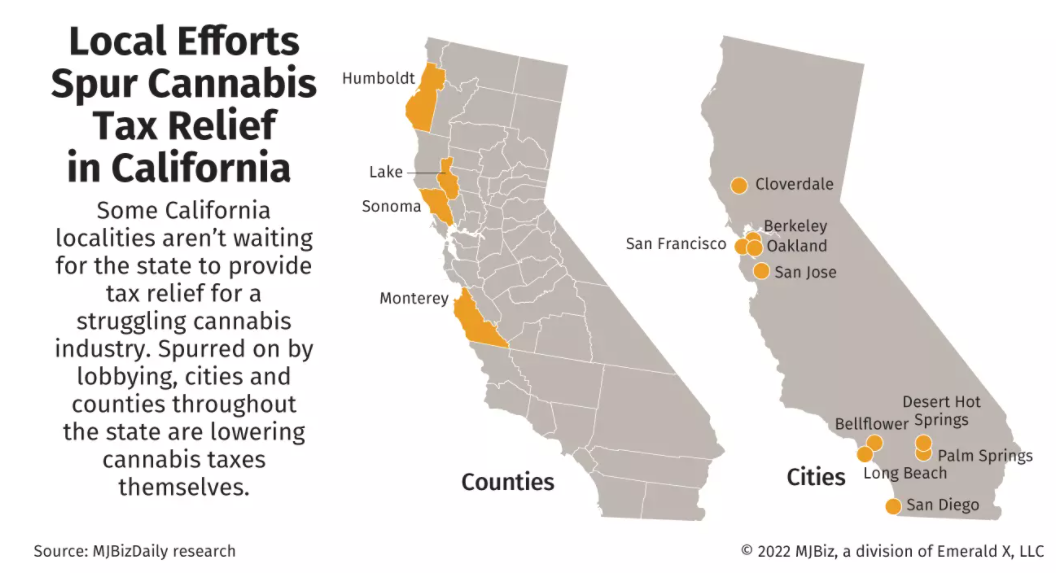
Since state lawmakers have been slow to lower marijuana taxes, local governments throughout California are scrambling to grant tax relief to cannabis businesses.
The tax rollbacks by cities and counties mainly reflect lobbying from industry organizations as well as local residents and businesses.
They argue that taxation at all levels of the supply chain is simultaneously choking cannabis companies’ ability to stay afloat while strengthening the illicit market.
The rush to grant tax relief began a couple of years ago and has since accelerated.
It has encompassed a range of localities, including the cities of Desert Hot Springs and San Diego as well as Humboldt and Sonoma counties.
“This is really a statewide issue,” explained Natalynne DeLapp, executive director of the Humboldt County Growers Association.
All this comes against the backdrop of a historic bear market for California wholesale cannabis prices, which plummeted last year in response to a supply glut.
Prices have only recently begun to rebound.
The tax rollbacks also come amid accusations from operators, local lawmakers and industry insiders that the state has not done enough to properly address tax reform, among other ills, leading to what many are calling a crisis in California’s cannabis industry.
Marijuana license holders in California are subject to a state cultivation tax of $161 per pound, as well as a 15% excise tax, in addition to taxes levied by city and county officials.
In January, Gov. Gavin Newsom pledged tax reform, though he was light on details.
Four bills at the state level addressing cannabis taxation have been introduced in the past few weeks: Assembly Bill 2792, AB 2506, Senate Bill 1281 and SB 1293.
SB 1281 appears to be the most comprehensive. Among other things, it would eliminate the cultivation tax and reduce the excise tax to 5%.
With constituents screaming for relief, localities are not waiting for any state tax changes to kick in, especially considering that such legislative actions wouldn’t take effect until 2023, at the earliest.
One of the most high-profile moves took place in Humboldt County on Feb. 7, when the Board of Supervisors voted to reduce by 85% the county cultivation tax locally known as Measure S.
Measure S previously required a $1-$3-per-square-foot payment, the amount of which was dependent on license type. Now, those fees will be calculated in the same manner, but growers will pay only 15% of the total amount.
Temporarily lowering the cultivation tax showed the county’s “commitment to growers who have committed $50 million to our local economy in the four years since Measure S was passed,” Humboldt County Supervisor Rex Bohn said.
The reduction was met with some opposition from locals who believe cannabis growers got off easy by not having to pay taxes before legalization.
Bohn said this came into stark relief once it became clear that many of the same growers are now choosing to leave their gardens fallow rather than risk planting and paying taxes on marijuana flower they can’t sell.
Though Humboldt might be one of the more significant of such actions taken, it’s far from the only one.
“Most cities and counties set their local tax rates based on an assumption that cannabis businesses were going to be wildly profitable,” DeLapp said.
“The reality is that, in many places, those tax rates are no longer sustainable, particularly for small and independent legacy businesses who are operating without outside capital.”
Cannabis lobbyist Nara Dahlbacka, a partner at the Oakland-based Milo Group, said that while tax relief is needed both at the state and local levels, localities enacting reform can “also be a huge help on the red tape side” for businesses.
“In order to expand their (marijuana) businesses, there’s a level of red tape and bureaucracy that have to be dealt with at the local and state levels,” Dahlbacka said.
The following localities have, or are considering, cannabis tax reductions and relief:
Humboldt County
This month, the Board of Supervisors voted to temporarily reduce its cultivation tax by 85% for one year.
Lake County
In January, the Board of Supervisors voted to postpone until May 15 the due date for cannabis tax payments and suspend the 25% late-payment penalty during the postponement. The board also directed staff to develop additional options for cannabis tax relief for ongoing discussion and voting in future meetings.
Monterey County
The Board of Supervisors is preparing to vote March 1 on an industrywide cultivation tax reduction, including eliminating automatic increases on all taxes and doing away with the distribution tax entirely.
After freezing an automatic tax increase on growers previously scheduled for 2021-22, the board voted last October to increase the number of times growers could amend the taxable square footage of their crop canopy from once to twice per year.
Sonoma County
In January, the Board of Supervisors voted to postpone first-quarter taxes from Jan. 31 to April 30. Total taxes levied for both quarters will be due without penalties or interest on April 30 unless the board approves another extension.
Bellflower
In October 2020, local officials reduced taxes for manufacturing and distribution from 7.5% to 2% and 1%, respectively.
Berkeley
In February 2018, local officials reduced the cannabis tax rate from 10% to 5% to remain competitive in the Bay Area.
Cloverdale
The City Council is scheduled to vote on March 9 to reduce tax rates for all licensees and tier the tax rates for different types of licenses.
Desert Hot Springs
In February 2021, local officials reduced the tax for cultivation from $25.50 per square foot to $10.20 per square foot for cultivation.
Long Beach
In 2019, the city lowered manufacturing, distribution and testing taxes from 6% to 1%.
In 2020, the City Council agreed to ditch a proposed tax increase and instead increased the hours of operation for cannabis retailers.
Oakland
In 2019, the City Council voted to lower the gross receipts tax on cannabis businesses that make $500,000 or less from 10% to 0.12%.
Palm Springs
In February 2019, local officials reduced the manufacturing tax from 10% to 2%.
San Diego (city)
In February, the City Council voted to reduce the manufacturing and cultivation tax from 8% to 2%, effective May 1.
San Francisco (city)
In December 2021, San Francisco authorities approved a second one-year suspension of the city’s marijuana business tax through 2023.
San Jose
In July 2019, local officials reduced the flat-rate taxes of 10% to 4% for cultivation, 3% for manufacturing, 2% distribution and 0% for testing.
Additionally, according to Dahlbacka, the following localities have passed resolutions formally requesting the state to amend its cannabis taxes:
- Alameda County
- Calaveras County
- Lake County
- Mendocino County
- Monterey County
- San Francisco (city and county)
- Santa Cruz County
- City of Berkeley
- City of Desert Hot Springs
- City of Oakland
- City of Rio Dell
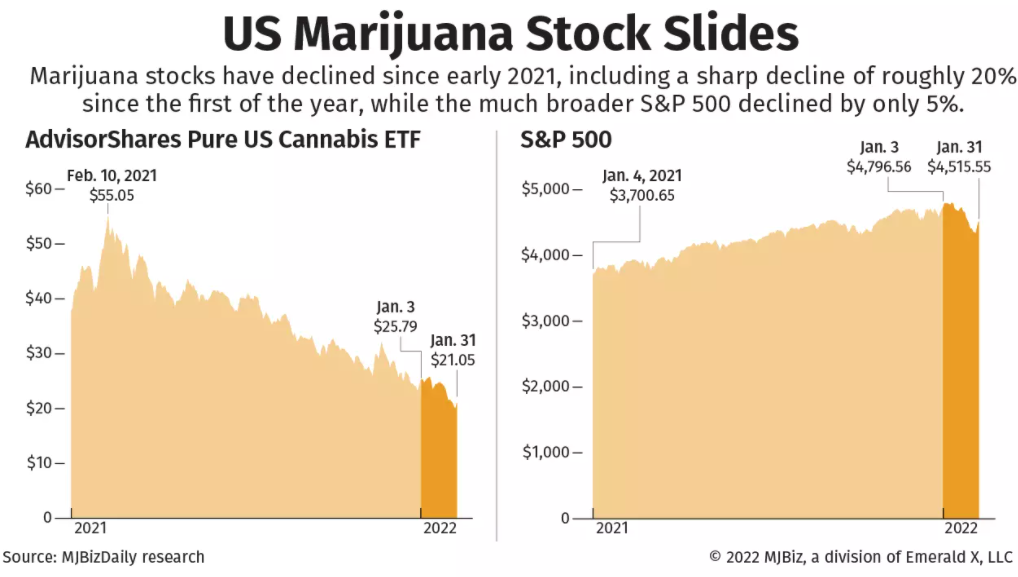
U.S. cannabis stocks suffered a rout in January, tumbling more than the broader market as hopes for federal marijuana legalization in the near future continued to fade.
The recent slide is expected to exacerbate existing issues confronting marijuana businesses, such as limited banking and funding options as well as higher taxes.
An exchange-traded fund that tracks U.S. multistate operators – AdvisorShares Pure US Cannabis ETF – tumbled nearly 20% in January.
By comparison, the much broader S&P 500 declined by a little more than 5%.
The January slide came after steady declines in cannabis-related stocks in 2021, as major federal marijuana reform looked less and less likely in the short term.
“Most of the downturn, in my view, is a cumulative slow-motion capitulation to the idea that there won’t be any federal legalization (of marijuana) anytime soon,” said Frank Colombo, director of data analytics for New York-based Viridian Capital Advisors.
The cannabis ETF, which trades on the New York Stock Exchange Arca as MSOS, went from about $40 a share in early 2021 to a high of more than $55 a share.
On Monday, it closed at $21.05, down from its 2022 opening price of $25.93.
Marijuana stocks soared in the first few weeks of 2021 with the heady optimism that resulted from a new Democratic administration and a flip in the Senate from Republican control.
“The few blips up (last year) all corresponded to times that there was a little bit of optimism (about reform),” Colombo said.
One inflection point occurred after Senate Majority Leader Chuck Schumer said in late January 2021 that he was going to introduce a sweeping marijuana reform bill. Schumer hasn’t yet introduced that legislation.
“All of the other positive news like states going rec didn’t really do much,” Colombo said. “The market is fixated on this whole legalization stuff.”
Monday proved to be the latest example.
After House lawmakers revived the SAFE Banking Act on Friday as an attachment to a technology and innovation spending bill, investors immediately responded: MSOS increased on Monday by 5.36% to $21.05.
Business challenges
Matt Karnes, founder of New York-based cannabis financial advisory firm GreenWave Advisors, agreed that the lack of progress on federal marijuana reform has exacerbated the market downturn.
“The cannabis industry – plant-touching and to a lesser extent ancillary – is likely more vulnerable to market volatility associated with overall economic uncertainty due to the inherent limitation/headwinds of federal (marijuana) illegality,” he told MJBizDaily via email.
Karnes noted that the market volatility exacerbates existing challenges for marijuana businesses, including:
Limited access to capital markets.
Stock trading restrictions.
The costs of prohibition, including higher taxes and higher debt costs.
For example, state-legal marijuana companies pay higher taxes than other businesses because of the Section 280E provision of the IRS tax code.
They also pay higher interest rates on debt than other businesses because of the riskier nature of the industry and the federal government’s prohibition governing marijuana.
In terms of trading issues, part of the price decline last year was attributed to Credit Suisse Group deciding to stop executing stock transactions of cannabis companies with U.S. operations.
Sales slowdown
Another concern that might play into stock pricing is the softening of sales in the fourth quarter of 2021.
Pablo Zuanic, an equity analyst for New York-based investment banking firm Cantor Fitzgerald, noted that the fourth-quarter sales data didn’t provide the “spark” needed for cannabis stocks.
Sales growth in most states slowed compared to the third quarter, with sales actually falling in some states such as Nevada.
“We realize that (the first half of 2021, especially the second quarter) was fueled by COVID stimulus (money) and child-tax credits, and now purchasing issues (inflation) are playing a part,” Zuanic wrote in an investor note.
One important inflationary measure rose at a level not seen since the early 1980s, and interest-rate hikes are expected in March.
Given the current economic context, Zuanic wrote, sales will be driven in the months ahead in the medical marijuana markets that are relaxing rules as well as in the states such as Connecticut, New Jersey and New Mexico that will be launching recreational cannabis markets.
Even with softer sales and inflationary pressures, Colombo noted, marijuana business fundamentals overall are strong, compared to late 2019, when stock prices dropped, merger and acquisition deals collapsed or were revised, and some MSOs struggled financially.
“It’s really a night and day difference,” he said. “Companies are so much more profitable and developed than they were even a year and a half ago.
“I still think of the industry as being in the toddler stage, but it’s not an infant anymore. It’s walking, talking, performing. Companies have positive EBITDA.”
EBITDA – or earnings before interest, taxes, depreciation and amortization – is a key metric to gauge the financial health of a company.
M&As still strong
Despite the market volatility, Zuanic expects M&A activity to “ramp up” this year.
M&A activity already has been relatively strong in the first weeks of 2022, with $476.2 million in transactions, according to a recent Viridian report.
That included Massachusetts-based Curaleaf closing in January on an acquisition of Arizona-based Bloom Dispensaries for $211 million.
Colombo said he expects debt raises to be relatively robust this year as well.
Florida-based Trulieve Cannabis just closed on its final, $75 million portion of an industry-record $425 million debt raise at an interest rate of 8% annually.
Equity raises, meanwhile, are being impacted by the stock volatility.
“Big companies don’t have the burning need to do financing,” and the depressed stock prices will generally keep them from doing equity raises, Colombo said.
Ultimately, the question is what will be the catalyst for driving stocks upward.
“It’s not going to be from the economy,” Colombo said. “It looks like inflation is definitely here, so the overall macro picture isn’t favorable.
“I don’t think it has to be full legalization (either) – but it has to be something like the SAFE Banking Act being reconsidered.”
More than a dozen California cities are opening new recreational cannabis licensing opportunities this year, either by embracing the legal marijuana industry for the first time or by increasing the number of available business permits.
Several other cities, meanwhile, are laying the groundwork for new markets down the road by drafting and/or developing cannabis ordinances.
The rollout of new adult-use markets and business opportunities come as cities across the state are eager to bring in additional tax revenue after the pandemic and other factors depleted public coffers.
The ongoing shift is a welcome sign for the state’s struggling marijuana sector, which remains forbidden in the vast majority of California cities and, at the same time, must compete against a thriving illicit market.
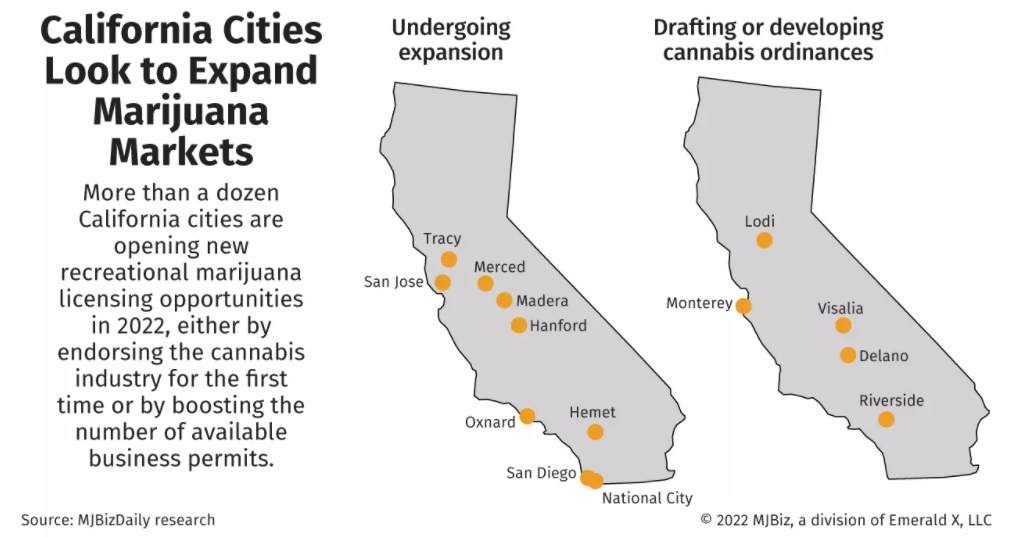
“Expanding doors is critical if we expect the legal cannabis market to survive,” said Harry Kazazian, chair and CEO of 22Red, a marijuana brand based in Pasadena.
“Communities that shut out legal retail stores will be serviced by the underground market.”
According to Hirsh Jain, founder of Los Angeles-based cannabis consultancy Ananda Strategy, only 115 of the state’s 482 cities, or roughly 24%, have a licensed dispensary open today.
But that is starting to change.
Retail expansion across the state
The retail expansion is far and wide, from urban centers in San Diego and San Jose to small towns such as Madera in the Central Valley and Oxnard along the Southern California coast.
Madera, about 25 miles north of Fresno, is issuing its first eight retail licenses, including two designated for social equity applicants.
The agricultural town, which hadn’t disclosed application timelines as of press time, also is offering unlimited permits for vertically integrated operators, an emerging shift among city and county governments in California.
Hemet, a midsized town in Riverside County that’s struggled to recover from the Great Recession of 2007-09, has foregone licensing caps altogether and is instead relying on zoning allowances to dictate the number of retail outlets.
“This represents cities moving away from this limited-license framework,” Jain said.
Elliot Lewis, CEO of Long Beach-based Catalyst Cannabis Co., welcomes the competition.
In October, the retailer was approved for a storefront in neighboring East Hemet, in unincorporated Riverside County.
“Without good, legal, safe access, the industry is drowning,” said Lewis, who expects to open the location in March. “It needs retail outlets.”
National City, bordering San Diego to the south, approved several licenses in November.
Applicants in National City may apply for retail, cultivation, distribution, manufacturing and transportation permits, ushering in a new era of commercial activity.
Retail applicants are required to operate at least one other marijuana business on the property, according to the ordinance, and must limit the retail portion to no more than 40% of square footage.
National City plans to start accepting applications this quarter, with a few notable caveats: Officials plan to favor local ownership, and at least one of the six licenses will be set aside for a consumption lounge operator.
Second thoughts
San Diego, an underserved market considering its large population, is among several California cities with established commercial cannabis programs looking to expand.
The state’s second-largest city, with nearly 1.4 million residents, appears poised to lift several of its zoning restrictions, including narrowing a 1,000-foot buffer between marijuana businesses and parks, libraries, places of worship and playgrounds.
The constraints, critics contend, are a major reason why the city has opened only 25 dispensaries, despite approving 36 in 2014.
If those restrictions are eased, which could come within the next month or so, retail licenses could expand nearly 40%, according to The San Diego Union Tribune.
Those municipalities looking to expand existing programs also include the Silicon Valley hub of San Jose.
The Northern California city of a million residents has only 16 dispensaries.
The San Jose City Council is weighing a policy overhaul to boost retail and delivery locations to 42 while eliminating several zoning restrictions and easing others.
The tech mecca is also looking to create new business opportunities for social equity applicants.
Tracy, about 55 miles northeast of San Jose, plans to issue seven retail permits for a total of 11 after its City Council approved an expansion in November.
Only 10 applicants have advanced to the final-review stage, however, with four on the verge of approval.
The process has been lengthy. Tracy hasn’t accepted applications since October 2020 but stated on its website it might consider reopening an application window in “late 2022 or early 2023.”
Merced started accepting applications Jan. 10 for an additional storefront license, bringing the Central Valley town’s total to five.
The deadline to apply is Jan. 31.
Hanford, about 35 miles south of Fresno, is adding one retail location.
According to the city’s website, the cap of two stores and two non-storefront retailers has been met.
The city also is accepting applications for cultivation, manufacturing, lab testing, distribution and micro-business permits – all uncapped – on a continuous basis.
Oxnard, located along the coast in Ventura County, issued six additional retail licenses last year with three dedicated to local equity applicants.
The agricultural town – perhaps best known for hosting the Dallas Cowboys’ summer training camp, which draws thousands of fans every year – is expected to have 16 dispensaries open by year’s end.
Looking ahead, several other cities are in the process of drafting and/or developing cannabis ordinances, including Monterey, Riverside, Lodi, Delano and Visalia.
Numbers don’t add up
The lack of retail outlets, particularly compared to the number of licensed cultivators, has depressed California’s marijuana economy, according to Tom Adams, CEO and principal analyst of L.A. research firm, Global Go Analytics.
“The struggles the California legal cannabis market is undergoing, particularly the meltdown in wholesale flower prices in 2021, is largely due to the fact that local jurisdictions have licensed 10 times as many cultivation operations as retail storefronts – some 7,500 versus about 750,” he said.
Most agricultural products (think almonds or oranges) have the opposite ratio, in which retailers outnumber suppliers by a wide margin.
“Certainly, the number of cultivators is going to shrink from attrition,” Adams said, “but hopefully all these local moves to allow more storefronts also balance out the supply chain in a positive direction.”
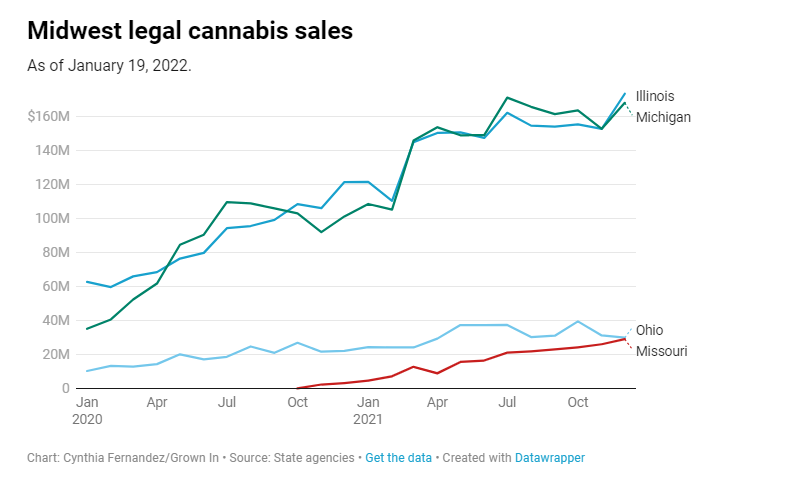
Cannabis sales in states that allow for adult-use and medical marijuana in the Midwest saw sales go up in the fourth quarter of last year. Meanwhile, Massachusetts was the only New England state that saw growth of the states Grown In is tracking, while Rhode Island and Maine’s cannabis sales stalled.
The Midwest
Michigan rallied in the fourth quarter of 2021. It ended 2021 with more than $1.79 billion in total cannabis sales, with December medical and adult-use sales at $167.96 million – just missing the state’s all time high of $171.07 million in cannabis sales in July 2021.
“We’ve seen pretty steady growth,” said Michigan’s Marijuana Regulatory Agency (MRA) Executive Director Andrew Brisbo in an interview with Grown In last week. “We do see the medical market starting to decline but that’s to be expected with legalization on the adult-use side and a lot of investment and consumers moving toward the adult-use market.”
Brisbo added that he thinks Michigan is reaching “a period of stabilization.”
“One thing worth noting, is that even though the second six months outpaced the first six months, over the course of 2021, we also saw retail prices in the medical market decline 33.6% and retail prices in the adult-use market decline 47%,” he said.
Illinois ended the fourth quarter in 2021 at an all time high of $173 million, with total annual sales at $1.77 billion.
In Ohio, sales in the fourth quarter of 2021 seem to slump, according to numbers from the state. In October, the state reached an all time high of $39 million in adult-use and medical cannabis sales. But the year ended in December 2021 at $29 million. The total annual cannabis sales for adult use and medical in 2021 was $374 million.
Ally Reaves, founder and president of Midwest CannaWomen, said Ohio cannabis sales in the fourth quarter of 2021 were great as medical cannabis operators expanded.
“Ohio’s product sales at the end of the fourth quarter was at $649.8 million in product sales, which is halfway to the goal of Ohio becoming a billion dollar state very, very soon,” Reaves said.
Reaves also said the state’s decision to deem cannabis businesses essential despite COVID-19 contributed to increased sales. She pointed to November 2021 patient numbers, which totaled over 390,000 recommendations and over 231,000 registered patients, according to the state.
There were also over 26,000 registered caregivers, according to the state.
“If you look at the surrounding states, Ohio has done extremely well under the strict rules and regulations here under the Board of Pharmacy and the Department of Commerce. With these new 73 licensed dispensaries coming into the state, which will make a total of 130, that should drop the prices,” she said, and make patients eager to participate in the program.
She said patients are now allowed to purchase nine ounces of flower and Level 1 cultivators are allowed to expand to 50,000 square-foot grows. She predicts that plant material sold will be doubled or even quadrupled by the end of next year.
“There are a lot of companies that are partnering up with other brands outside the state and bringing those brands inside the state under their brands,” she said. “That’s definitely helping the market as well.”
Sales in Missouri almost met Ohio’s December 2021 sales, earning $28.9 million and ending the year with over $209.75 million in sales. However, Missouri’s fast growing coterie of dispensaries rival Ohio’s 57 dispensaries.
As of January, there were 183 medical dispensaries, 45 cultivators, 61 manufacturers, and eight labs, according to the Missouri Department of Health and Senior Services.
The counties with the most patients are Jackson (home to Kansas City) and St. Louis, each with more than 14,000 registered patients. As of December 2021, Missouri had 218,111 registered patient applications in total, according to the Missouri Department of Health and Senior Services.
New England
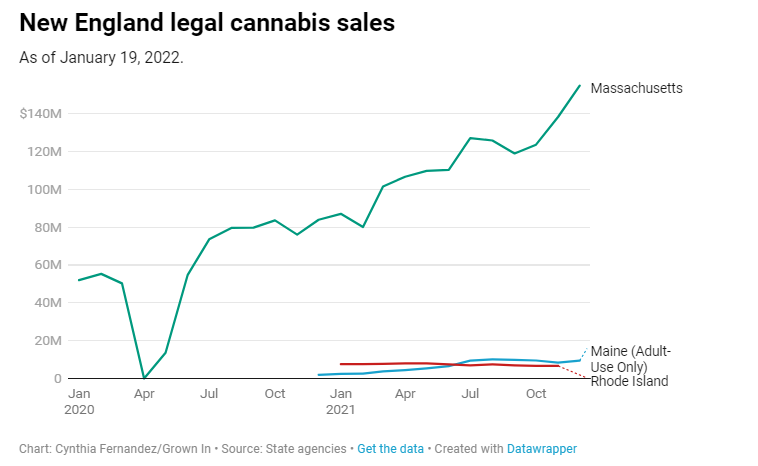
Massachusetts sales for adult-use and medical cannabis reached an all time high in the fourth quarter of 2021, ending December 2021 with $154 million in sales. The total sales for the state in 2021 was $1.38 billion.
In September 2021, the state’s marijuana establishments surpassed a milestone – $2 billion in cumulative sales.
Ture Turnbull, co-founder and co-CEO of LGBTQ-owned dispensary Tree House Craft Cannabis, said December sales were good even for a business that came online less than three months ago.
“It was the holiday season. Sales were high,” Turnbull said. “As a new guy on the block, we expect our January sales to exceed our December sales.”
Turnbull said the high sales numbers are a combination of people coming out of the illicit market and new products coming into the market.
“My mom probably hadn’t participated in the industry since the 1970s. When products were what you get and not regulated, not controlled,” Turnbull said. “There is an increase in total market share growing… That shows the runway of new customers, as well as watching customers that have been participating come into a more regulated, controlled space.”
Turnbull said approximately a quarter of the license plates in the dispensary’s parking lot are from New Hampshire. Tree House Craft Cannabis has locations in Dracut and Pepperell, both close to the New Hampshire border.
Maine’s adult-use program continued stagnating in the fourth quarter of 2021. The annual total for 2021 was $81.5 million.
Sales data are extracted from Metrc, and are “preliminary in nature, subject to further revision, and have not been audited,” the state’s Office of Marijuana Policy said in a press release in September 2021.
There are over 3,000 medical marijuana caregivers in Maine and over 5,000 caregiver employees and assistants, according to the state. Caregivers in Maine face the possibility of new regulations that could harm the small operations, according to previous Grown In reporting.
A registered caregiver in the state can sell an unlimited number of wholesale plants, including any marijuana products or concentrates. They can also transfer or accept young plants and seedlings from other caregivers and dispensaries. A caregiver can sell their products to qualifying medical patients, according to the statute.
Maine’s medical marijuana sales are not available because the state does not operate seed-to-sale tracking for that program, which includes caregiver sales. But that could change soon.
Rhode Island behaved similarly to Maine, but December 2021 sales were not ready by the time this article was published. Its 2021 sales, without December totals, were $80.8 million, close to Maine’s adult-use total. Maine has a population of 1.38 million, while Rhode Island has 1.09 million people, according to the U.S. Census.
In Rhode Island, there are three compassionate care centers which function as dispensaries, and five new medical licensees that were selected in October 2021. A sixth winner has yet to be determined, Grown In previously reported.
Rhode Island also has 68 approved cultivators. There are also three approved cultivator applicants that are not guaranteed to receive a license.
“In order to receive a license, each approved applicant must pass a final licensing inspection and meet all requirements under law within nine months of their application’s approval,” the Department of Business Regulation wrote.
Curaleaf, which has retail stores and cultivation sites in states that include Illinois, Michigan, Ohio, Connecticut, Massachusetts, Maine, and Vermont, told Grown In they have seen an increase in wholesale interest in the Midwest and New England regions, “in addition to retail activity throughout 2021. We finished the year strong with several major acquisitions,” Curaleaf president Matt Darin said in an email.